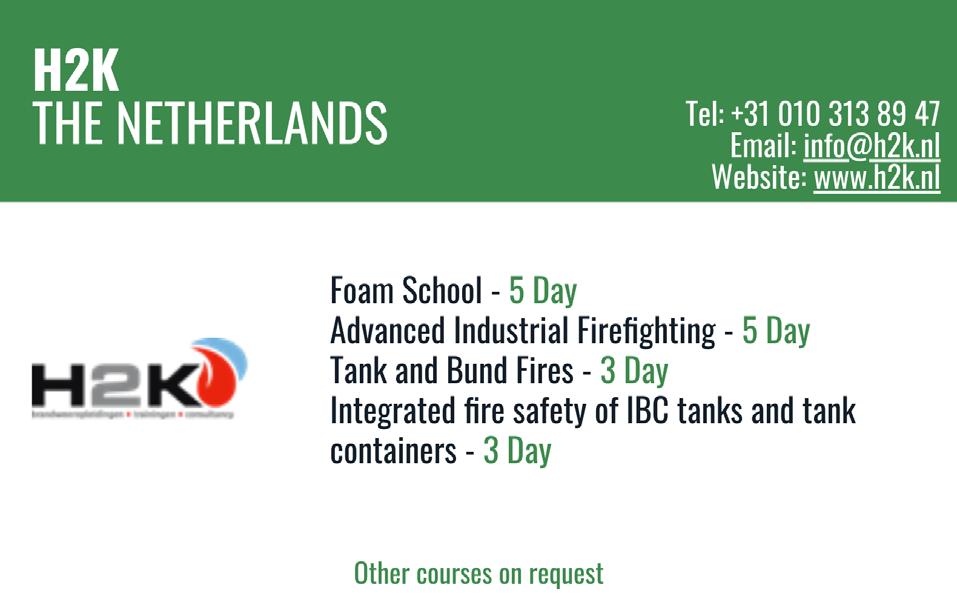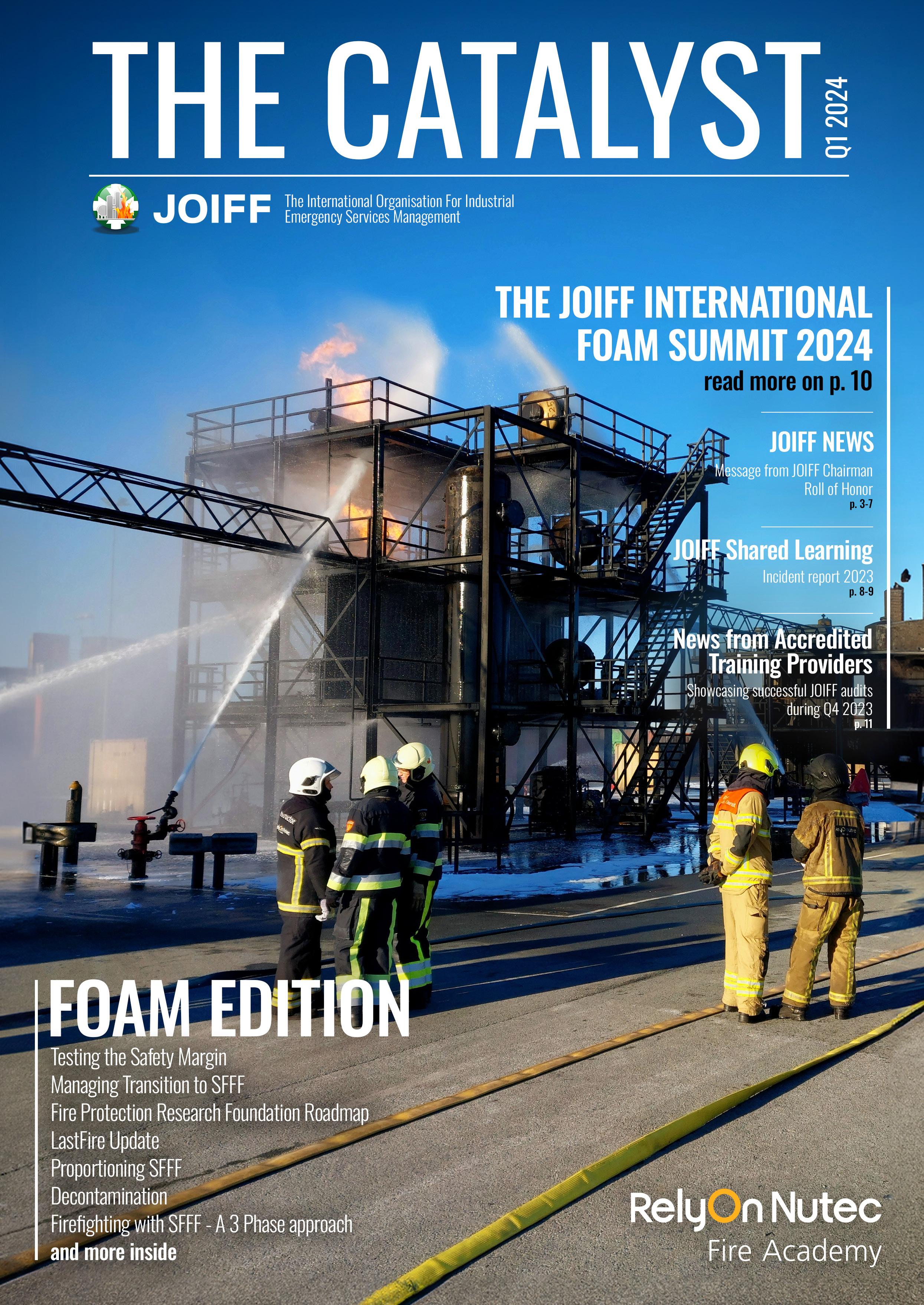

Fluorine Free Foams for

MARINE
- Enviro USP
- Enviro SEA: 1%, 3%, 6%
SPRINKLER FOAM
- Enviro ARK
- Enviro USP
- Enviro SPX 1%
TRAINING FOAMS
- EnviroSenze
- Trainer E-lite

AIRPORTS
- Enviro 3% ICAO
- Enviro AIR
- Enviro USP
CIVIL DEFENCE
- Enviro 3x3 Plus
- Enviro 3x6 Plus
- Enviro 6x6 Plus
- Enviro 3x3 Ultra
HIGH EXPANSION
- Enviro eMax - LS xMax
WILDFIRES
- Enviro Class A

ABOUT JOIFF
JOIFF, the International Organisation for Industrial Emergency Services Management is a not-for-profit organisation dedicated to developing the knowledge, skills and understanding of personnel who work in and/or who are required to provide emergency response to incidents In Industry, primarily High Hazard Industry, with the aim of ensuring That risks in Industry are mitigated and managed safely.
The 4 pillars of JOIFF aiming to support its Membership in preventing and/or mitigating hazardous incidents in Industry are: Shared Learning – improving risk awareness amongst JOIFF Members; Accredited Training – enhancing operational preparedness in emergency response and crisis management; Technical Advisory Group – raising the quality of safety standards in the working environment of High Hazard Industry and Professional Affiliation – networking and access to professionals who have similar challenges in their work through Conferences and other events and the prestige of being a member of a globally recognised organisation of emergency response.
Full Members of JOIFF are organisations which are high hazard industries and/or have nominated personnel as emergency responders/hazard management team members who provide cover to such organisations. Commercial Members of JOIFF are organisations that provide goods and services to organisations in the High Hazard Industry.
JOIFF welcomes enquiries for Membershipplease contact the JOIFF Secretariat for more information.
JOIFF CLG is registered in Ireland. Registration number 362542. Address as secretariat.
JOIFF is the registered Business Name of JOIFF CLG.
ABOUT THE CATALYST
The Catalyst is the Official magazine of JOIFF, The International Organisation for Industrial Emergency Services Management. The Catalyst is published Quarterly – in January, April, July & October each year. The JOIFF Catalyst magazine is distributed to all JOIFF members and member organisations worldwide. The Catalyst magazine is published by ENM Media on Behalf of JOIFF.
Publisher & Advertising Sales:
Paul Budgen
Tel: + 44 (0) 1305 831 768
Email: pbudgen@edicogroup.net
Design & Production
Christelle Sakr
Tel: +44 (0) 1305 831 768
Email: christelle@edicogroup.net
Message from JOIFF Chairman
On behalf of the JOIFF Directors, I extend our best wishes for 2024 to JOIFF members and readers of The Catalyst.
I am proud to report that during 2023, JOIFF went from strength to strength starting with the excellent JOIFF Industrial Emergency Management Conference in Rotterdam, The Netherlands, in association with JOIFF member organisation RelyOn Nutec Fire Academy. This major event was well attended and the Subject Matter Experts who presented papers at the event provided current information on a wide range of topics relevant to Emergency Services Management.
In September JOIFF, in association with NMCI Training Services, (National Maritime College of Ireland) hosted the first Shared Learning event in Ireland which was well attended. The excellent presentations by speakers on a wide of topics, was very well received and we hope that this experience will set the template for other similar events in different parts of the World.
Professional Qualifications:
In co-operation with our business partner ENM, JOIFF presented a number of webinars ably hosted by Paul Budgen. Paul also developed and presented the first JOIFF Podcast. As part of the ongoing commitment by JOIFF to shared learning, we will be continuing with the JOIFF Webinars delivering unique content to both JOIFF Members and hundreds of high-hazard Fire Professionals around the world. JOIFF would like to encourage any member who wishes to present a Webinar or Podcast, to contact our business partner ENM, to discuss the options available.
JOIFF Director Trevor Fiford is leading our project to establish a JOIFF Africa Regional Group to expand JOIFF’s membership and provide shared learning on a Regional basis. The Directors have appointed Steve Fraser MJOIFF, as JOIFF Ambassador to represent and promote JOIFF.
Many JOIFF members continue to provide great support to JOIFF by participating in one or more of the JOIFF accredited eLearning programmes, in participating as members of JOIFF Working Groups and most important, with their hard work hard in ensuring the functioning of the highest standards of Emergency Service Management.
The Directors would like to recognise these people and I invite members to consider applying for JOIFF professional qualifications, a summary of which are:
Dip.JOIFF which is awarded to an individual who is verified as successfully completing the JOIFF accredited Diploma Programme.
Tech.JOIFF which is awarded to an individual who is verified as successfully completing the JOIFF accredited Technician Programme.
JOIFF.ERTL - Emergency Response Team Leader
- which is awarded to an individual who is verified as successfully completing the JOIFF accredited Leadership 1 (Team Leader) programme.
JOIFF ERO - Emergency Response Officerwhich is awarded to an individual who is verified as successfully completing the JOIFF accredited Leadership 2 (Officer) programme.
Grad.JOIFF – Graduate of JOIFF - which is awarded to a person who by their actions in their work activities has made a contribution in the development and profile of JOIFF during the period of their service.
MJOIFF – Professional Member of JOIFF – which is awarded to a person who by their actions in their work activities has made significant contributions to the development and profile of JOIFF during the period of their service.
Anyone who would like to consider an application for a JOIFF accredited qualification is invited to contact the JOIFF Secretariat to ascertain the full requirements for each Post Nominal.
Foam transition:
This is without doubt the prime topic for all High Hazard Industry today and this edition of The Catalyst includes a great deal of information that we hope will be of value to you.
As a truly independent, non-aligned organisation, JOIFF is in a unique position in disseminating information on Foam transition and we are planning an International Foam Summit later during 2024.
I hope that all readers will find this edition of the Catalyst of interest and value.
Regards, Stay Safe, Kevin Deveson
MJOIFF, GIFireE
Chairman of JOIFF
Email: kevin@joiff.com
Please visit www.joiff.com


• Brand new, innovative training location
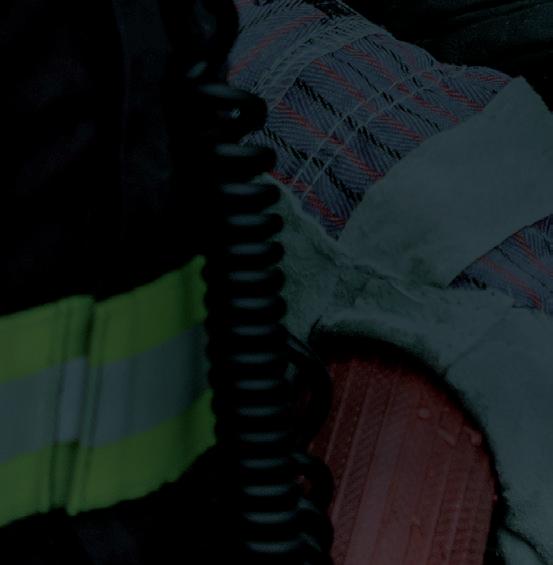

• 35 years of experience
• Realistic res: liquid, gas, class A fuels
• Tailor-made scenarios on client’s request
• Training supported by XVR
•
•


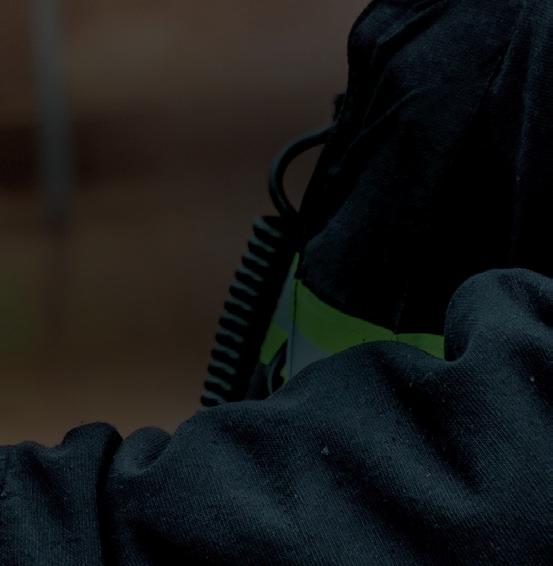
































ROLL OF HONOR
During Q4, 2023, the following persons were awarded JOIFF Professional Qualification:
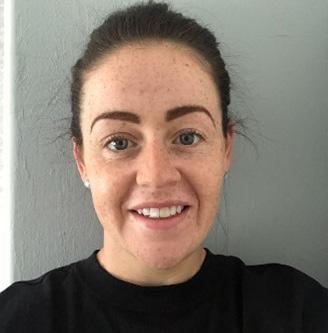
INEOS O& P UK, Grangemouth, Scotland.
Amie spent 12 years working within the Health and Fitness industry before becoming a Control Operator for Scottish Fire and Rescue Service. Shortly after, she joined the Scottish FRS as a retained Firefighter a position she held for approximately 4 years. She left the Service when she was given the opportunity to join the Emergency Response team at INEOS in 2021.
On successfully completing the JOIFF Diploma, Amie said “Completing the JOIFF diploma has given me the opportunity to further my knowledge and development, specifically within the Petrochemical industry.”

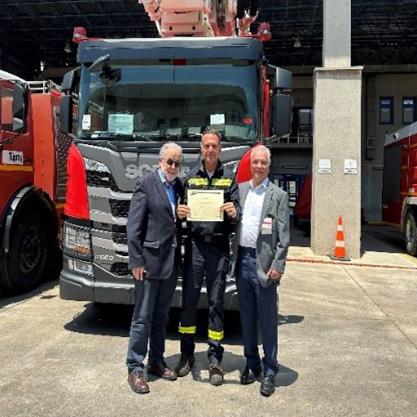
INEOS O& P UK, Grangemouth, Scotland.
Jade joined INEOS in July 2021 and started to work on the JOIFF Diploma. The first Unit that she successfully completed was Site topography and this encouraged her to start the remainder of JOIFF Diploma programme. She successfully completed the full programme within the first year of starting, having included completing courses in Industrial Breathing Apparatus Wearer training in Montrose, in house fire risk assessment and BAFE extinguisher technician course. On successfully completing the JOIFF Diploma, Jade “I look forward to using this qualification and knowledge in the future and continuing to learn on the job”.
Security Fire and Safety Officer, United Nations Peacekeeping Operations MONUSCO - Security Section,
Onatra MONUSCO Fire Station, Democratic Republic of the Congo
Renato graduated with a Diploma in Associate Marine Engineering following 26 years' experience and background in Fire Safety Services. In 1996 he was appointed a firefighter at Subic Bay Metropolitan Authority, a former US Naval Base in the Philippines and worked in the Fire Service there for 5 years. In 2001, Renato was hired as a Lead Firefighter in the Department of Emergency Crash and Rescue for Peacekeeping Mission of United Nations Organization in East Timor where he served for 3 years. In 2004, he joined the UN Peacekeeping Mission in the Democratic Republic of Congo as a firefighter/driver operator in Kinshasa. In 2014 he worked in Camp Tajik, Iraq as a firefighter and in 2015, the United Nations Organization Stabilization Mission (MONUSCO) in the Democratic Republic of the Congo, selected him to work in the position of Security Fire and Safety Officer the position he currently holds. On 15th June 2021, Renato was awarded the Meritorious Service Award by the United Nations Department of Safety and Security, for performance above and beyond the call of duty.
Renato successfully completed the JOIFF Diploma in October 2022 and immediately started to sturdy for the JOIFF Technician which he successfully completed in November 2023.
Bilal started as a firefighter in TUPRAS Izmir Refinery in 2006. Then he became a firefighting specialist in 2019. He is responsible for fire team members training.
On being awarded the JOIFF Diploma, Bilal said “CompletingtheJOIFFDiplomaprogramchanged my perspective in all emergency responses. I’ve checked my industrial firefighting duties and responsibilities and developed myself with practical and fast solutions.
ItisagreathonortobeapartoftheJOIFFfamily during this very enjoyable process.”
 Amie Duffy • Dip JOIFF
Jade Nimmo • Dip JOIFF
Bilal Guvendik • Dip.JOIFF Technical Safety Specialist - Turkish Petroleum Refineries Corporation, Izmir Refinery, Türkiye.
Renato C. Lopez • Dip.JOIFF, Tech.JOIFF
Kinshasa,
JOIFF DIPLOMA
Amie Duffy • Dip JOIFF
Jade Nimmo • Dip JOIFF
Bilal Guvendik • Dip.JOIFF Technical Safety Specialist - Turkish Petroleum Refineries Corporation, Izmir Refinery, Türkiye.
Renato C. Lopez • Dip.JOIFF, Tech.JOIFF
Kinshasa,
JOIFF DIPLOMA
Ameen Slemang • Dip.JOIFF, Tech.JOIFF
Senior Emergency Response Specialist, OQ Refinery, Sultanate of Oman
Ameen started his career as an emergency responder in 1989 as a recruit Firefighter. He advanced through the ranks and started his International career working in different countries in 2002. He now holds the position of a Senior Emergency Response Specialist in the biggest refinery in Oman and he is always looking for new opportunities and ways to enhance his skills with embedded knowledge and experience.
Ameen successfully complied the JOIFF Diploma in 2020 and followed on by working on the JOIFF Technician programme. On successfully completing and being awarded the JOIFF Technician professional qualifications, Ameen said “Obtaining this new qualification just pushes me to proceed to the next level”.
PROFESSIONAL MEMBER OF JOIFF
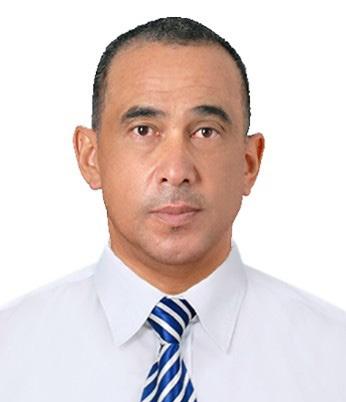
An important feature of the award of MJOIFF is that the person has made significant contributions to the development and profile of JOIFF during the period of their service.
Steve Fraser • MJOIFF
Managing DirectorKiwi Resource Protection, Co., Ltd, Thailand
In 1987, Steve started his career in Emergency Services Management as an electrician working in New Zealand’s only oil refinery and local oil fired power station. At the age of 18, he joined the New Zealand Fire Services, Ruakaka volunteer fire department as a firefighter where he achieved many of his basic fire and rescue skills through the NZ Fire Service training programs. The Ruakaka fire department was the first callout to support the NZ refinery’s permanent fire team and monthly hydrocarbon training was conducted at the refinery by then fire chief Dave Davey. This training opportunity sparked an interest for Steve in industrial firefighting.
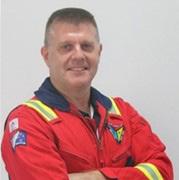
After completing his apprenticeship, Steve visited Dave Davey who had relocated and opened his own training company to support the growing oil and gas industry in Rayong, Thailand. Seve’s two week holiday ended up being a six year stop where he and Dave delivered weekly fire, rescue, hazardous materials, decontamination, and incident management training to the new Chevron, Shell and other refining complexes. During this time Dave’s company was bought out by Saval Netherlands and Steve was sent to Saval for a ten month deployment to learn the service and maintenance side of the business. On his return to Thailand he established the maintenance department servicing both land based and offshore Oil Gas and Chemical facilities.
In 1999, Steve returned to New Zealand where he took up a shift firefighter role with the NZ refining company and entered into the NZ qualifications authority education program where over a number of years, and while working as a shift emergency responder, he achieved the highest level of emergency response and management qualification available at the time. He was subsequently appointed Fire Chief at NZ Refinery where he grew and developed the department both as an internal organisation and as a registered industrial fire brigade under the NZ fire service act. Steve was appointed as a NZFS Assistant Area Commander and his staff held ranks consummate to their NZFS peers.
During his tenure as fire chief, Shells global emergency response manager offered him a position within Shell’s Global Centre of Expertise for Emergency Response (CEER) to develop the Shell emergency management and competence control framework - aside other responsibilities. Steve and his family relocated to Kuala Lumpur Malaysia to take up the global role with Shell.
In 2017, Steve and his family returned to Rayong, Thailand where he re-established Kiwi Resource Protection Thailand, the company Dave and he started in the 1990’s. Kiwi have a skilled and competent team of consultants, fire engineers, emergency management, emergency response and technical specialists servicing the OG&C, mining, wind turbine, and the commercial manufacturing industries throughout South East Asia.
Steve’s career to date has provided him with the opportunity to work at a grass roots local level and at a senior global level responding to and managing large and complex incidents, providing consultancy services, providing guidance on competence development programs with a global view, developing and delivering policy and procedure, and successfully developing his skills in business management.
In November 2023, the JOIFF Directors appointed Steve as “JOIFF Ambassador” to represent and promote JOIF in his area of activity. On his appointment, Steve said “IamexcitedtobeapartoftheJOIFFteamsupportingthemembershipandgrowingtheorganisationtobeawell-rounded,globallyrecognized professional organization”.

The Directors of JOIFF extend congratulations to all those in the JOIFF Roll of Honour.

JOIFF Shared
THE PAIN, DEATH &
JOIFF’s regular Shared Learning Global Incident Reports to Members are available in the Members Area of the JOIFF website. Below is a list of just some of the incidents that were reported during the last 6 months of 2023.
AUSTRALIA
• Explosion at chemical warehouse felt by residents over 21 miles away.
• 1 person dies following explosion at Melbourne chemical factory.
• 5 Injured in Toxic Chemical Spill at Refinery south of Perth, Australia.
BRAZIL
• 4 dead, at least 30 injured in explosion in metal factory in Sao Paulo,
• Fire hits cellulose mega-industry project in Ribas do Rio Pardo (MS)
BULGARIA
• 1 dead, 2 injured following explosion at Bulgarian ammunition factory in Sopot.
CANADA
• 2-alarm fire hits Calgary industrial complex.
CHINA
• 11 killed in an explosion at a coal mine.
• 2 feared dead after fire engulfs product tanker.
• 10 killed and 3 injured in gas related accident in inner Mongolia.
• 1 killed and 3 injured in a boiler pipe explosion at a thermal power plant in Seocheon.
• 6 dead in explosion at aluminium factory in Guangxi.
• At least 26 were killed in an office building fire in Northern China.
GHANA
• 4 killed in blast at Chinese-owned quarry in Ghana.
GUINEA
• At least 8 killed 84 injured in an oil terminal in Conakry
HUNGARY
• Huge fire at Hungary’s largest refinery.
INDIA
• 1 dead, 4 injured in fatal explosion at Kakkanad chemical plant
• 2 dead, 4 injured in blast at ‘illegal’ factory in Bawana.
• 3 killed, 6 injured in gas container explosion in Thane, Maharashtra.
• 1 dead, 4 unconscious after gas leakage at a chemical company.
• 4 killed in a soap factory warehouse explosion in Utar Pradesh.
• 14 dead in explosions at fireworks factories in Tamil ahead of Diwali festival.
• Massive fire engulfs chemical factory in Gujarat, resulting in loss of 60 tankers.
• Fire erupted at a chemical factory located Aravalli district.
• 7 killed, and many were injured in a blast at a pharmaceutical company in Raigad, Maharashtra.
• 9 killed, and many were injured in a chemical warehouse fire in Bazarghat, Hyderbad.
• 7 killed, and 24 were injured in an explosion in a chemical company in Surat.
• 1 killed 2 injured in Indian Oil Corporation refinery in RK Nagar.
IRAN
• 6 killed after coal mine explosion.
• Fire causes 2 explosions in a refinery in eastern Iran.
• Devastating fire in refinery in central district
IRAQ
• 1 killed, others severely injured in fire at asphalt plant in Sulaymaniyah.
ITALY
• 3 killed in an explosion at an explosives factory in Casalbordino.
JAPAN
• 4 injured from a chemical leak on a bullet train.
KAZAKHSTAN
• 46 killed in methane gas explosion at Arcelor Mittal mine.
KUWAIT
• 14 injured when fire breaks out at Al Shuala refinery
MEXICO
• 3 killed, more than 100 injured in petrochemical facility explosion.
MYANMAR
• 3 killed in gold mine collapse.
NAGORNO-KARABAKH
• Dozens killed and hundreds wounded in fuel depot blast as thousands flee.
NIGERIA
• 5 miners killed in underground accident at Tarkwa community mine.
PAKISTAN
• 11 injured in coal mine gas explosion in Orakzai district.
Learning
DESTRUCTION CONTINUE
PHILIPPINES
• 4 injured after chemical plant blast in Quezon City.
ROMANIA
• 2 killed 50 injured in explosions at LPG fuel station in Crevedia.
SOUTH AFRICA
• 2 injured in fire at factory premises in Neave industrial area, Gqeberha.
SOUTH KOREA
• 2 Killed in an explosion at a thermal power plant in Suncheon
TAIWAN
• 9 killed, more than 100 injured in Taiwan golf ball factory.
THAILAND
• Explosion rocks printing ink factory in central Bangkok.
TURKEY
• 1 killed, 6 injured in partial mine collapse in Zonguldak.
• 1 killed in chemical blast kills at TÜBİTAK
in capital Ankara.
UK
• Massive fire outbreak at Newport industrial unit.
• Lightning strike causes huge explosion at Oxford recycling plant.
• Flights suspended at London Luton airport after huge fire rips through car park.
• 5 taken to hospital after a chemical spill in Bonnyrigg, Midlothian.
• A factory fire sent huge plumes of smoke into the air in West Midlands.
USA
• Fire destroys fertilizer plant in Texas, causing chemical spills.
• 2 injured in corn processing plant fire in Decatur.
• BASF Total Energies fire in Port Arthurcollapsed tower, evacuation of employees.
• Massive fire erupts after ‘chemical leak’ at Marathon refinery near New Orleans.
• Explosion of a train carrying toxic acid prompts evacuations in Nebraska.
• 7 killed in gas leak explosion in chocolate factory.
• 5 killed after truck carrying toxic substance overturns in Illinois.
• Fire sparked by pipeline explosion causes mile-wide evacuation in Arkansas.
• 11 people hospitalized after chemical leak in Orange County.
• 1 injured in explosion at water treatment plant.
• At least 15 were injured after a gas explosion and building collapse.
• 1 dead, 1 trapped in building collapse at shuttered Kentucky coal plant.
• Chemical plant explosion causes fire and triggers evacuations in Shepherd, Texas.
• Lithium-ion battery explosion leads to fire on oil tanker docked in Baton Rouge.
• Fire at food processing plant causes roof collapse in Chicago.
• Kentucky residents leave homes after toxic chemical spill from train derailment.
• 8 injured in toxic gas leak in La Porte, Texas.
• Fire at Marathon Galveston Bay.
• 29 hospitalised in by chemical leak in cheese factory in Tennessee.
UZBEKISTAN
• Powerful blast near Tashkent airport kills one, injures 162.
ZIMBABWE
• Mine shaft collapse leaves 13 dead.
Those who fail to learn from history are condemned to repeat it. ”
Winston Churchill, paraphrased the statement by George Santayana, Spanish philosopher.
There is no such thing as “no risk” and a great deal of Emergency Services Management is built around reducing residual risk. For effective reduction of residual risk, the prime requirement is information – and what better information can there be than that from an organisation that has suffered from an incident in the type of risk that others need to reduce?
Can disasters caused by Industry be prevented? Many could, if information is made more freely available to allow management to learn from and act on the mistakes of others who have had the experience of similar previous disasters. Industry, Insurance and Risk Management companies all need to ask themselves if they are doing enough to educate the Industry on lessons learnt. Action from lessons learnt can unquestionably reduce the number of repeat incidents and when they do occur, with knowledge gained, those attending can more effectively and competently deal with them to reduce potential loss.
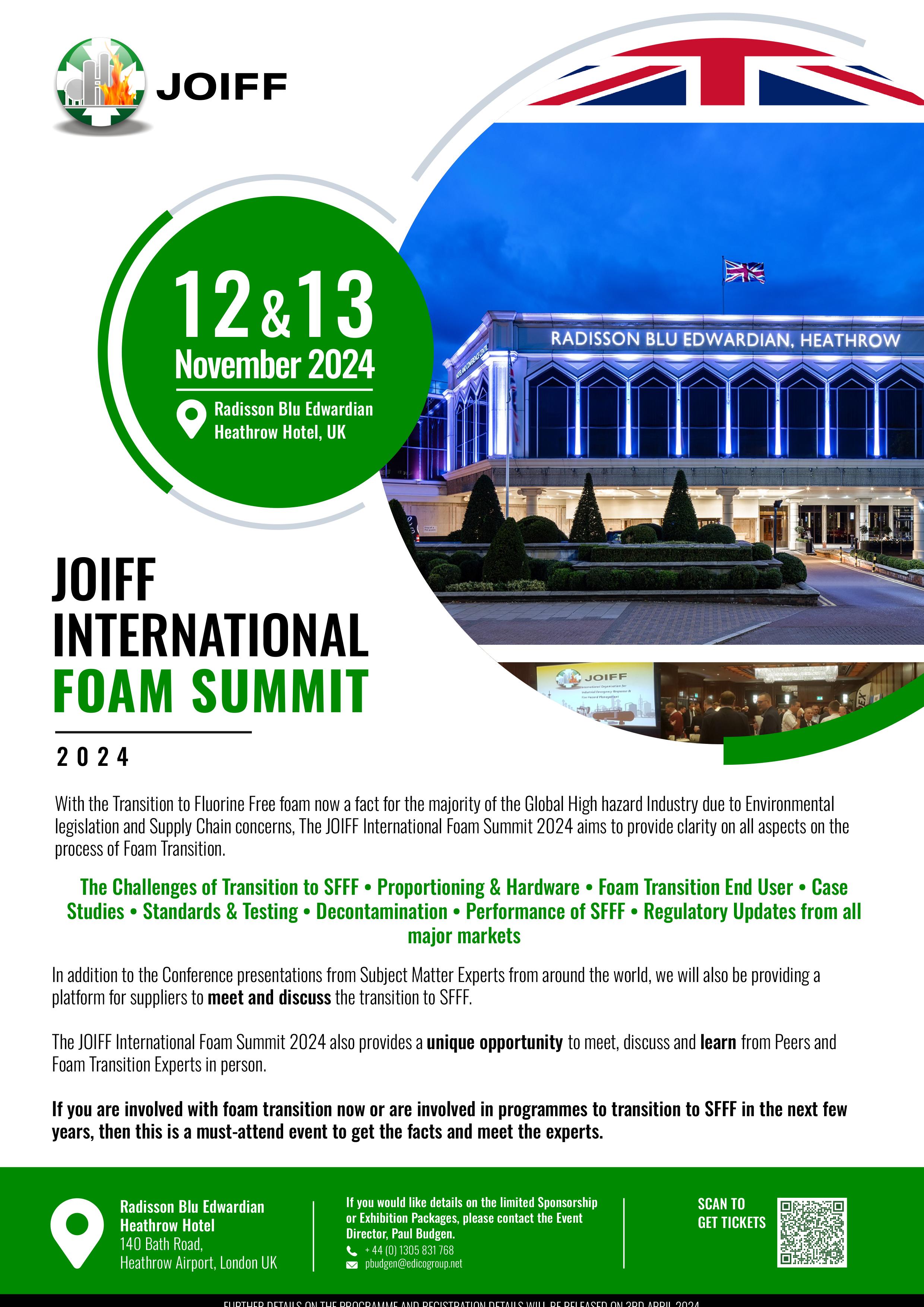
News from JOIFF Accredited Training Providers
SUCCESSFUL JOIFF ACCREDITATION AUDITS
During Q4 2023, successful JOIFF accreditation audits were carried out for:

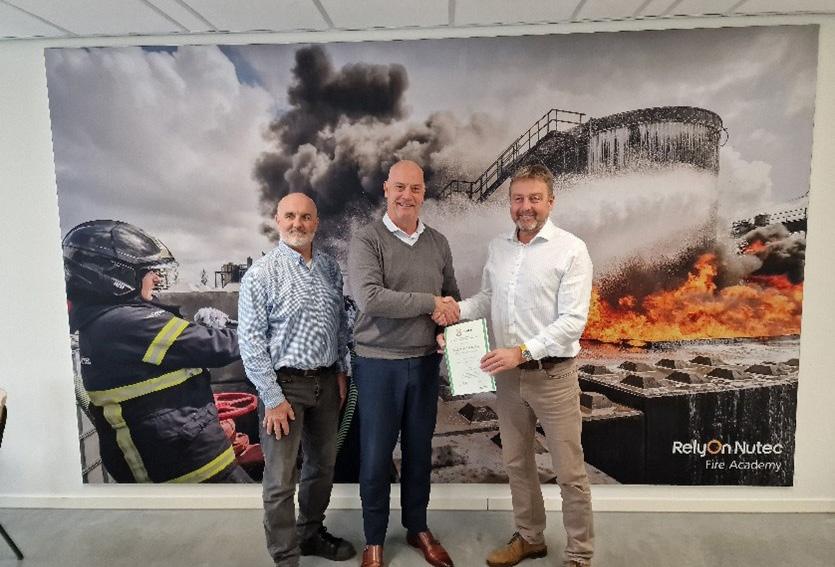
A successful JOIFF accreditation audit was also carried out for: The Fire Training Group, Aberdeen, Scotland
International Safety Training College • Malta
ISTC Malta being presented with their JOIFF certificate of accreditation
Kevin Deveson JOIFF Auditor, Brian Cranmer, Training Manager, Gerry Jonson JOIFF Auditor, Kevin Keeler, Managing Director, Valhmor Micallef Health and Safety Manager, Kevin Murphy Learning and Development Manager.
RelyOn Nutec Fire Academy Maasvlakte Rotterdam • The Netherlands
RelyOn Nutec Team being presented with their JOIFF certificate of accreditation
L to R; Steve Watkins, Product Development Manager; Gijsbert van Pinxteren, Business Unit Director Fire Academy Kevin Deveson, JOIFF Auditor.
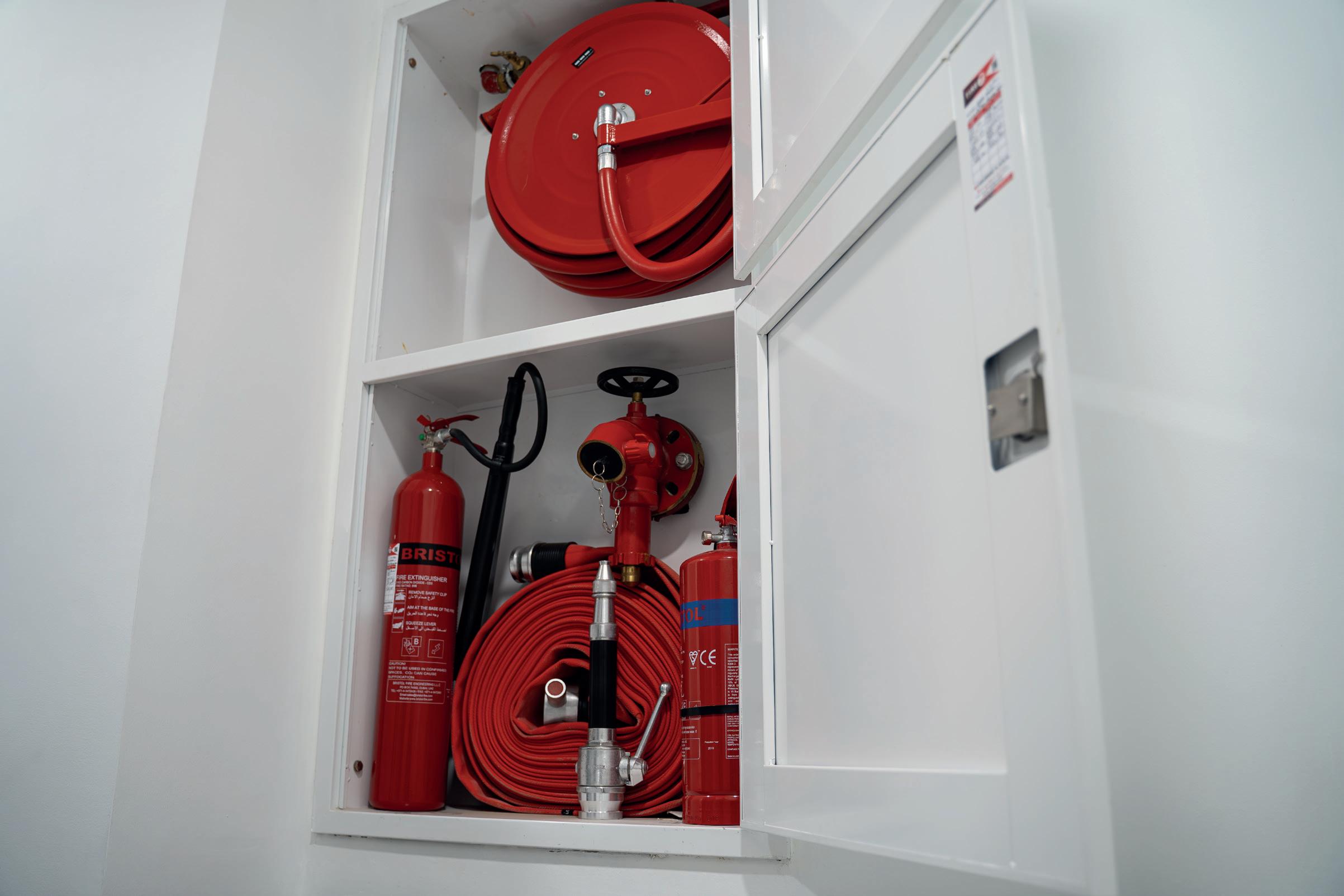

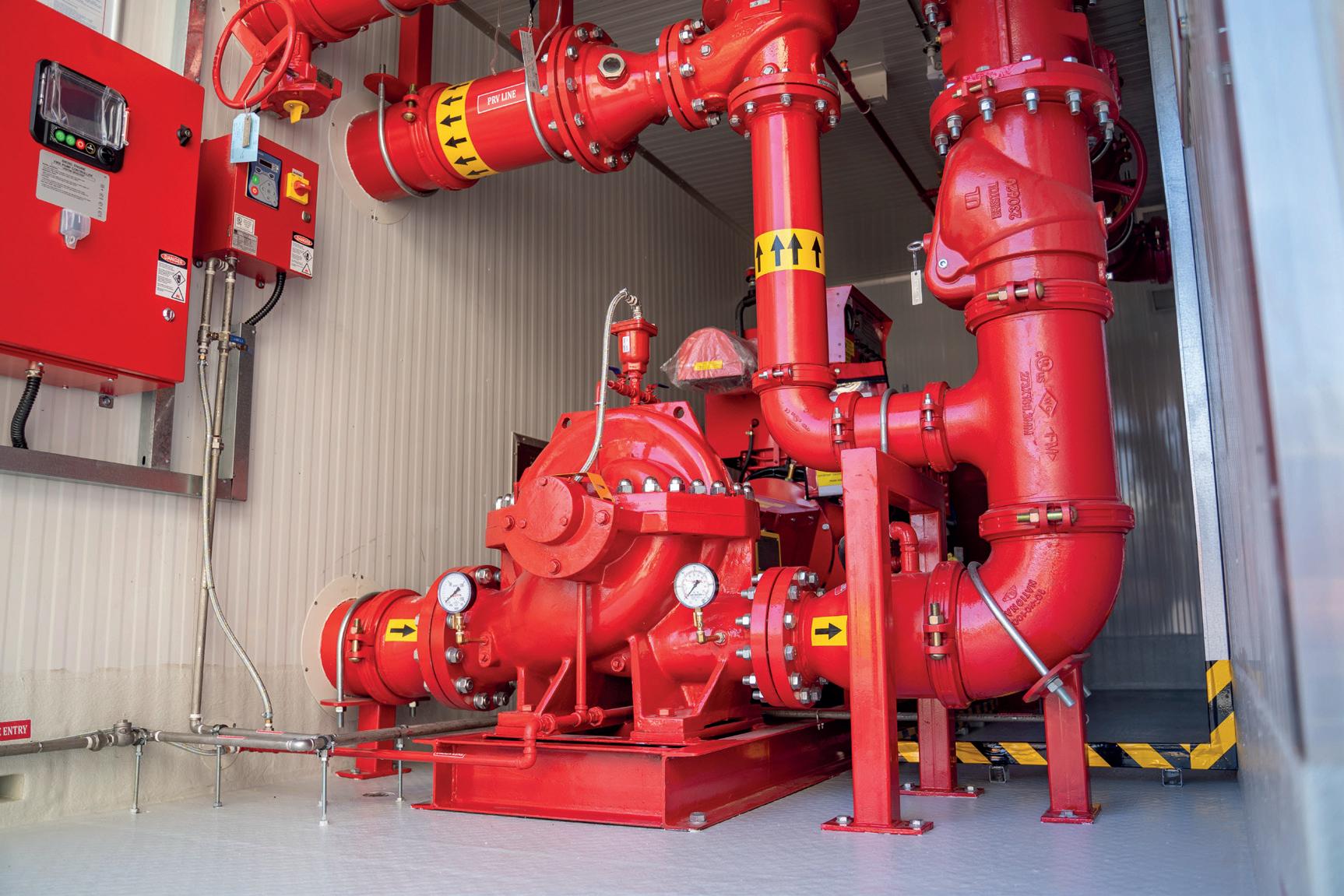
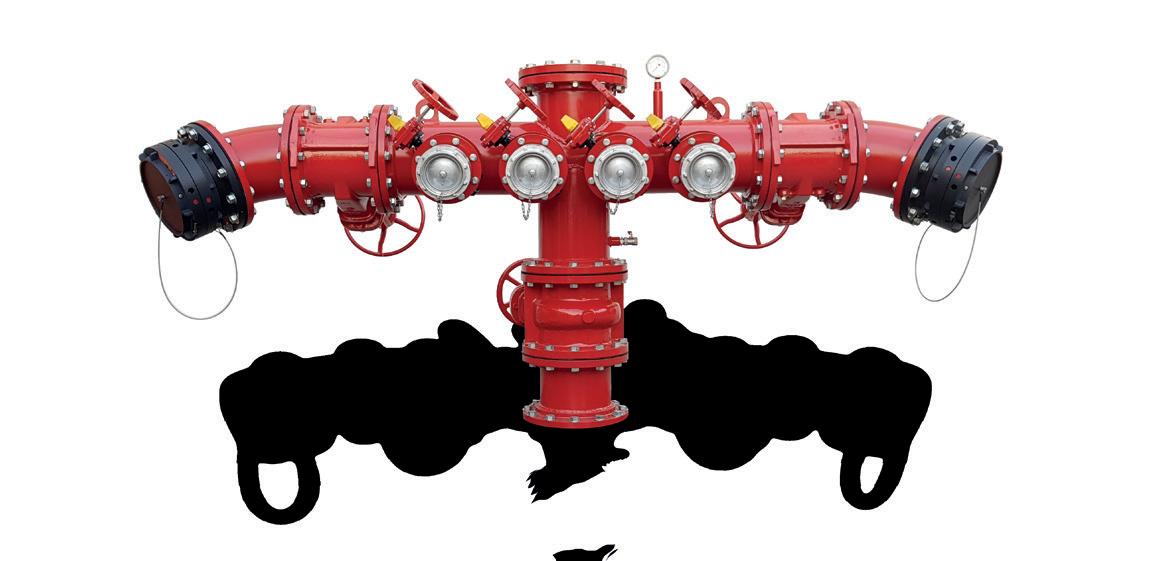
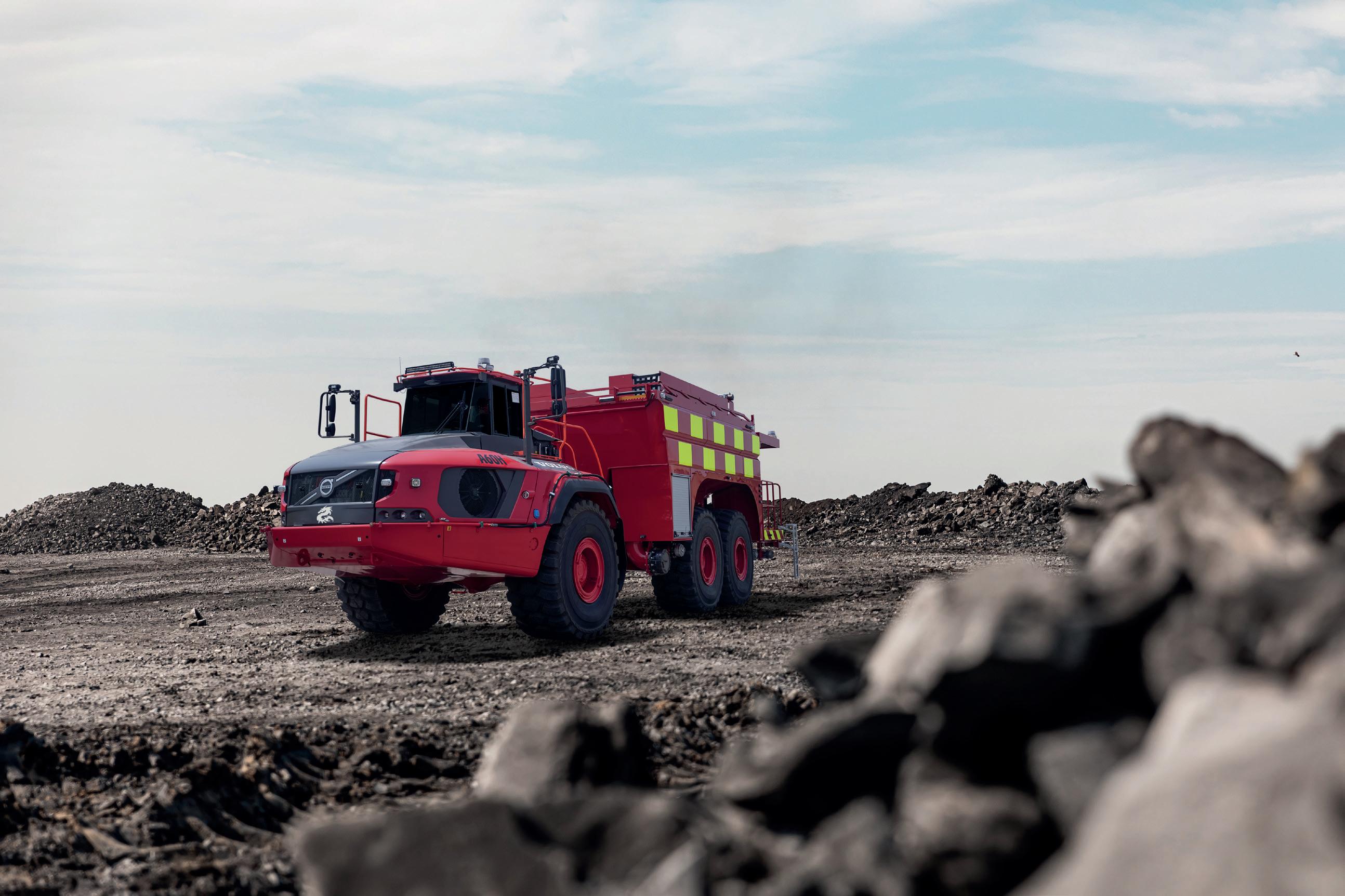

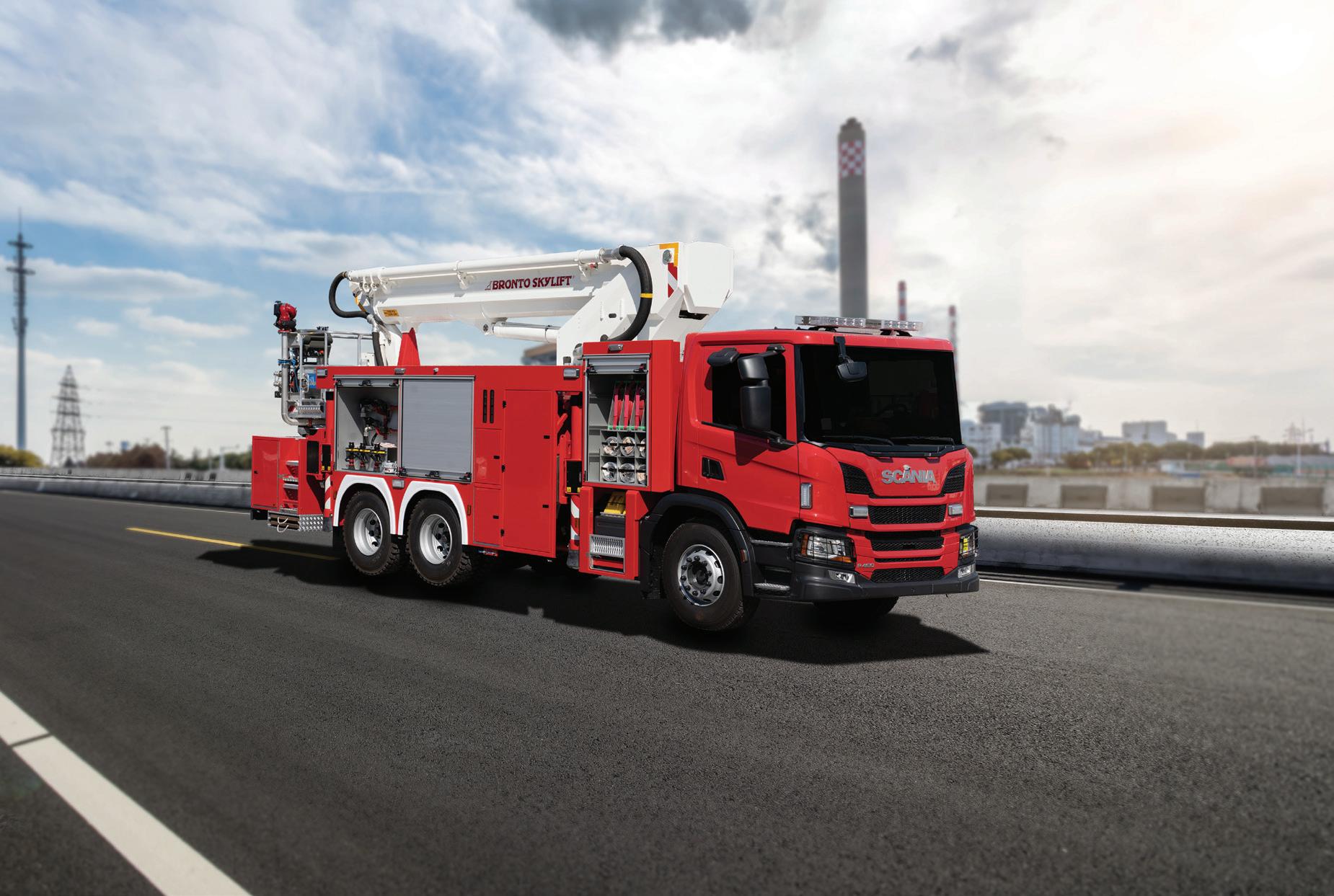
Testing the Safety Margin!
by John OttesenI have memories of sitting through many presentations and training programmes when the Senior R & D Chemist would pronounce to the audience that “the role of the R & D Chemist is to develop foam concentrates to pass a test”. Perhaps this seems like a strange thing because surely the foam concentrate is being developed to be an effective firefighting agent? Of course, the two are not mutually exclusive because the role of the test is to determine if a particular foam concentrate is an effective firefighting agent, or perhaps more correctly HOW effective! The bottom line the function of any test is to provide a measure of the performance of the foam concentrate. As fire performance testing needs to be repeatable, cost-effective and controllable the biggest question with any test protocol is the scalability from the test protocol to the real world e.g. does a 4.5 m2 test pan accurately reflect a full surface fire on a 120 m storage tank!

In an ideal world, we would test each mission or application under real-world conditions, but this is just not realistic so in setting up a test procedure we need to take into account scalability and the ability to make any test repeatable, costeffective and representative of the mission or application. Test procedures are usually devised by standards committees or stakeholders in a particular industry and (perhaps) correctly due to the difference in missions or applications a number of different test procedures exist. Common test procedures relating to Class B foams include UL 162, FM 5130, and EN 1568, which are geographic in nature, and ICAO, IMO 1312, LASTFIRE and US MIL SPEC which are more application-specific. For the end user, the difference in the procedures between these test standards may leave them wondering why the folks writing these test standards don’t appear to talk to each
other and agree on some of the variables!
A generic relationship between application rate vs extinguishing time exists in all tests, regardless of whatever standard is used, as shown in Figure 1. There will be a “critical application rate” below which extinguishing cannot be achieved no matter how long we continue to apply foam. The curve in Fig 1.
is based on a fixed set of variables such as ambient conditions, fuel, discharge device, application technique such as forceful or gentle application, etc. Standard committees have reviewed/studied these factors and determined a “test application rate”. Beyond this “minimum design application rates” are suggested which include a safety margin over the test application rate.
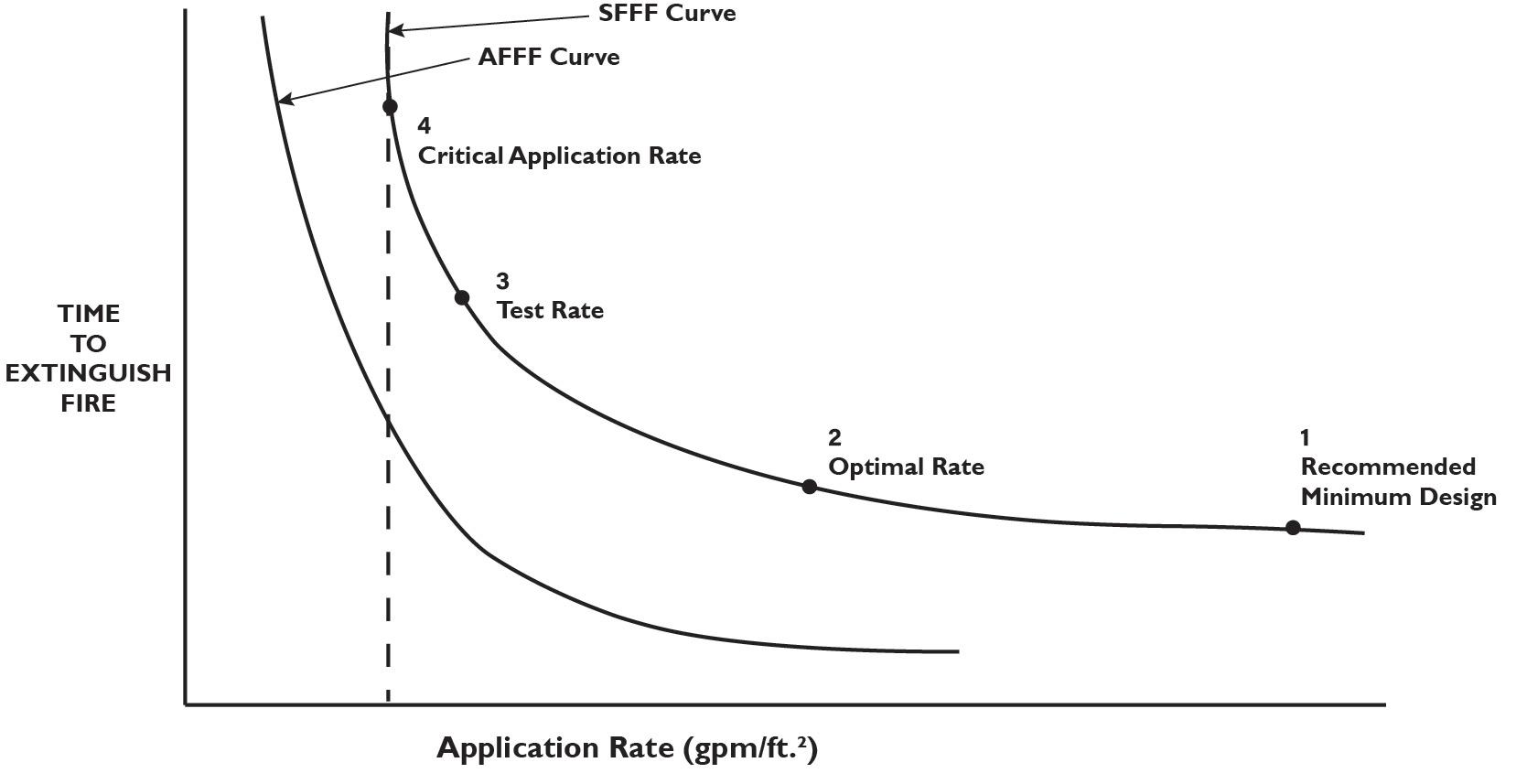
The test fires are relatively small and is performed with a low test density that is set at a level above the critical application density, but below what design standards define as design densities. The difference between test density and design density is our SAFETY MARGIN that shall account for real-world variables, the question is, what variables?
Different fuels
Ambient conditions
Water quality
Aging of the foam concentrate
Type of discharge device
Physical differences between the test pan and the real world fire and other agents
Difference between foam qualities achieved in test and those in real world
Compatibility with dry chemicals and other agents
Operator technique
Safety Margins for PFAS containing foam concentrates are backed by 50+ years of experience and data and design standards such as NFPA 11 or EN 135652 incorporate these safety margins within their application design. As we transition to SFFF’s we are seeing different approaches to performance testing from the various testing authorities such as UL, FM, ICAO, EN as well as a completely new US Mil Spec for fluorine-free foam.
EN 1568-3 & -4
The 2018 version uses the same test procedure as earlier versions, a singlepoint test with the UNI 86 nozzle that normally provides an expansion ratio of 6:1 to 9:1 using SFFF. The same rating system based on extinguishing time and burnback times as was used with PFASbased foams is applied. If extinguishment of forceful application (Type III) is not achieved in three to four minutes, a forceful application approval cannot be obtained. A gentle application test method exists with a 5-minute application time.
Foam concentrates are given a rating for extinguishing time (1,2 or 3). (Note 3 is achieved with gentle application rather than forceful). Burn back is rated from A (minimum of 10 mins with forceful) to B, C and D (15mins, 10 mins and 5 mins with gentle application).
No link between foam qualities used during fire tests and foam qualities from real world hardware is required in the EN 1568, an essential weakness of this standard.
UL 162 / FM 5130
In topside testing for both type II and type III applications SFFF’s are treated in the same way as synthetic foams or FP has been for many years. Compared to an AFFF or an AR-AFFF this means that the test density is 50% greater at 0.06 gpm/ft2 (2.46 lpm/m2) compared to 0.04 gpm/ft2 (1.64 lpm/m2) and the application duration is increased by 66% to 5 mins compared to 3 mins. It should be noted that for SFFF (same as was for FP) the burnback test does not start until 15 minutes after foam application finishes compared to the 9 minutes for an AFFF or AR-AFFF (here a 66% increase over the AFFF / AR-AFFF).
Test Performance v Real World minimum application rates
As mentioned, UL and FM have classified the new SFFF’s in the same groups as FP and used the same (minimum) safety


margins of 2.67 (for type III) and 1.67 (for type II) – this in comparison to the 2.5 used with AFFF and AR AFFF for both application types on hydrocarbons. It certainly could be argued that the type II safety margin with SFFF’s is reduced considering the limited data at present, but SFFF’s typically have better burnback than PFAS containing foam concentrates due to the use of polymers, ‘and with the gentle application typical for a foam maker or chamber there should be much less fuel pick up with the SFFF’s compared to the type III application.
Using the word “typically” in the last paragraph should have alarm bells ringing for engineers and consultants because it moves into the world of opinion but with our testing, we CAN add DATA to support the widely held belief that “for SFFF’s to work well, you need an expanded, and stable,
bubble”. Testing with FOAM QUALITIES linked to real-world discharge devices, as required by UL and FM, allowsengineers and consultants to understand the limitations of the foam with the tested discharge device. Foam that is fire tested with various foam qualities captured from real-world discharge devices during testing discharge devices during testing at minimum and maximum flows and inlet pressures, take this critical variable out of the equation and turn it into a KNOWN VARIABLE that the SAFETY MARGIN does not need to account for.
Figure 3 shows data points for the expansion ratio and 25% drain time for a range of foam chambers based on different inlet pressures. This data is then used to determine the foam qualities that are required to be used with the modified testnozzle to confirm acceptance of the foam agent with the nominated discharge device
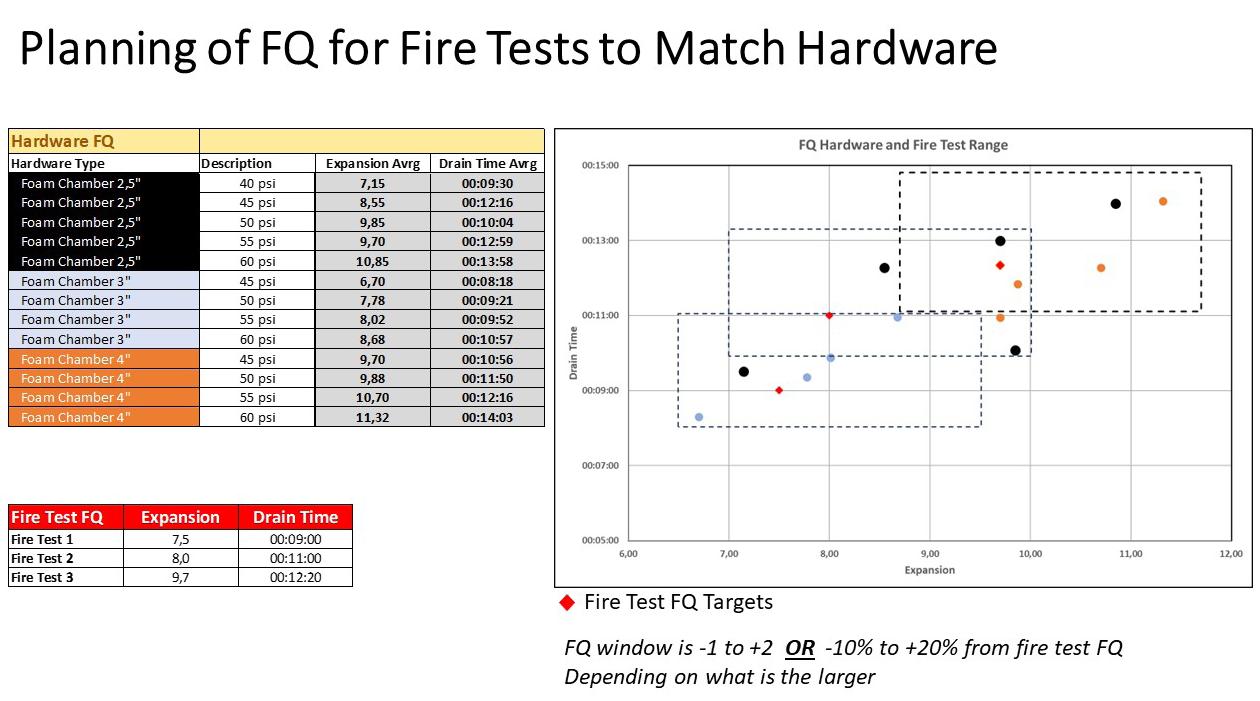
Figure 3: Foam qualities for a discharge device - leading to foam qualities required for fire testing.
within the inlet pressure range stated.
Test results and how they are applied should NOT be taken lightly. To mention a realworld example, I can reference a transition project with a multinational speciality chemical company where the task was to protect a dike with a hydrocarbon fuel using foam makers with a UL 162 and EN 1A rated SFFF. Had the dike protection been based on EN 13565-2 the application rate would have been 4.0 lpm/m2 for a minimum 20 mins application. As NFPA 11 was being used the minimum application rate was 4.1 lpm/m2 for a minimum of 20 mins application BUT using tested and approved agent and equipment! When the hydraulic calculations were carried out the inlet pressure on the most remote foam maker was below the pressure at which data existed and where approvals existed. We therefore set up a test programme to obtain the foam qualities based on the inlet pressure from the hydraulic calculation and we then performed UL 162 test with type II application. The test proved that even though extinguishment was achieved with these foam qualities the burnback test failed. Ultimately the client had to boost the system pressure through the purchase of a new fire pump!
Another example was with a client who due to regulations in the country had to use a specific aspirating sprinkler head. The client had a statement from another supplier that from their testing of the head they would
supply the SFFF foam. We ran similar tests and achieved foam qualities which were similar to data we had already from fire tests with another aspirating foam head but based on our experience with SFFF and fixed head systems our recommendation to the client was to set up fire performance testing based on FM 5130 test protocols using the nozzle on representative fuels and at the discharge heights and pressures in their facilities. The results from the series of tests indicated that with the most challenging fuel, the burnback was again a failure when the pressure was at the lowest value.
What I aim to illustrate is that assumptions about performance without test data can be dangerous. The SAFETY FACTOR of design standards cannot compensate for the complete lack of data related to foam qualities and non aspirating discharge devices.
There is no doubt that since the last versions of UL 162, FM 5130, EN 1568 came into force, and the associated design standards NFPA 11, EN 15365-2 significantly more data is been generated for the new SFFF’s available on the market. We have seen amendments such as UL 162 now requiring testing on type II with heptane rather than using the result from the type III test, or FM 5130 requiring that for SFFF’s that if the hydrocarbon fuel has a flash point lower than heptane or a vapour pressure greater than heptane, or the fuel is a blend (such
as gasoline) then further testing is required. We can hope that EN will also amend their testing and design requirements so that for non aspirating devices, better advice than “consult manufacturer” is provided.
Here at Fomtec, the Enviro programme is now over 2,500 tests and we continue to test to verify that the Safety Margin remains valid and achievable in the real world!

This article was presented to you by:
 John Ottesen
Fomtec CEO
John Ottesen
Fomtec CEO
info@fomtec.com
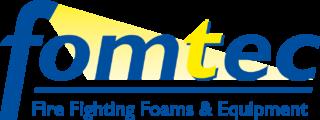
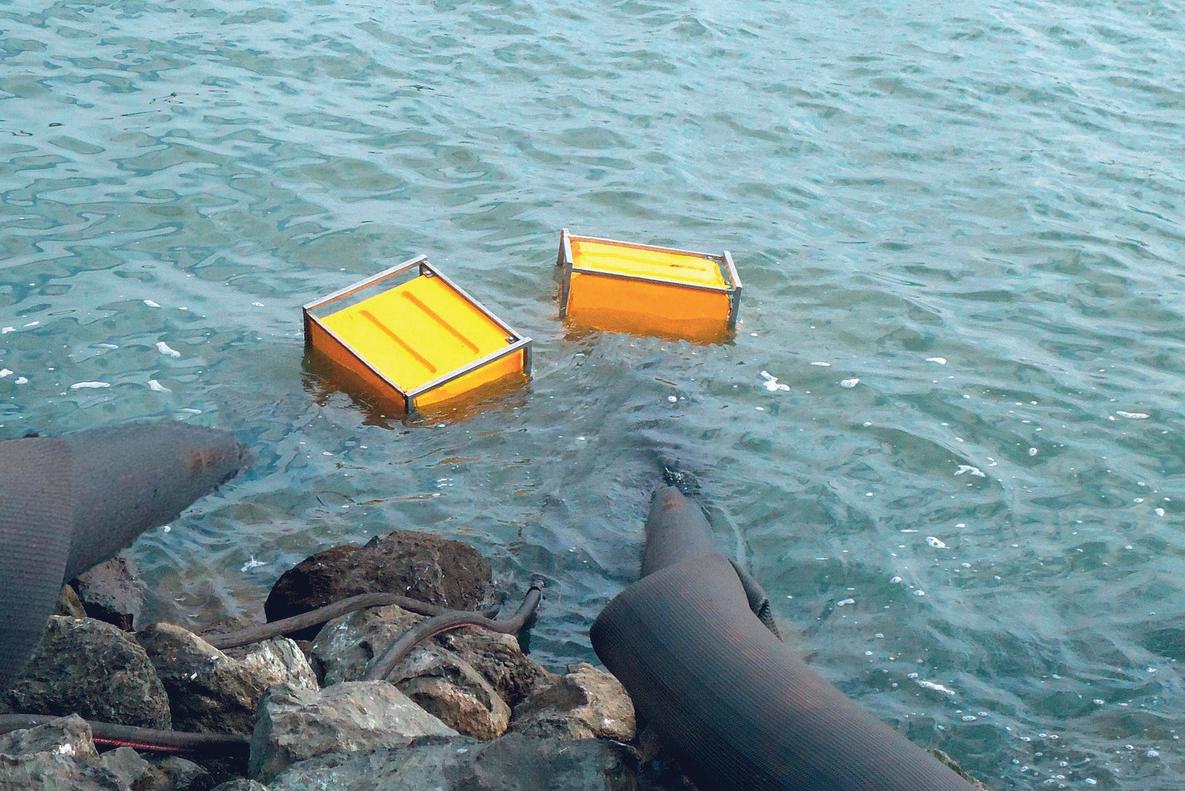
hydraulically driven pumps


high speed hose laying
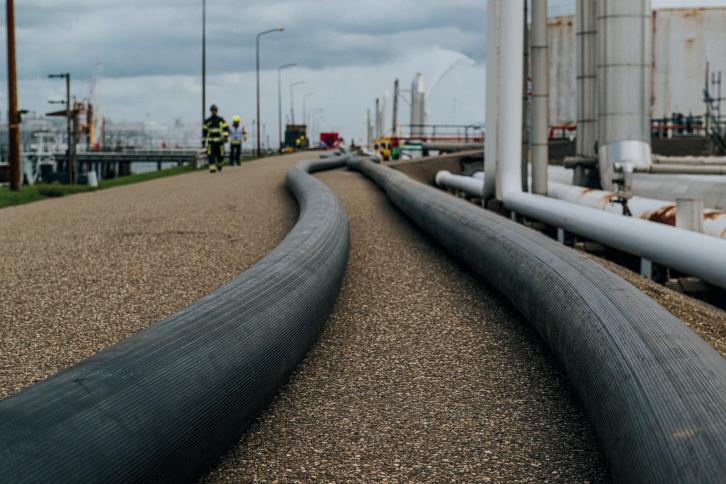
large diameter hose
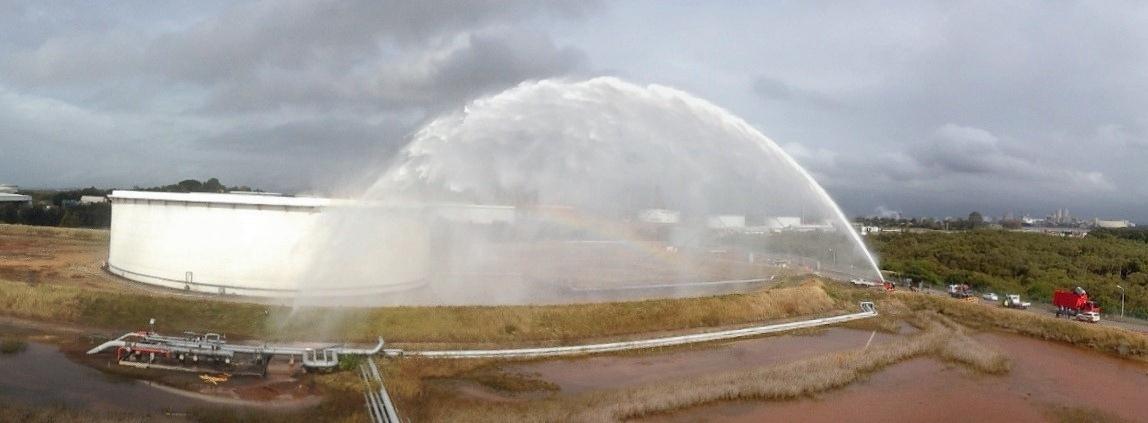
up to 45.000 l/min @12 bar
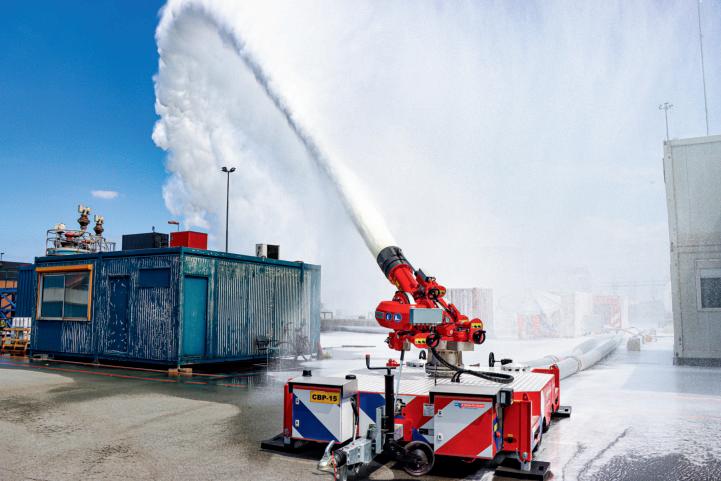
integrated foam systems

automatic hose recovery
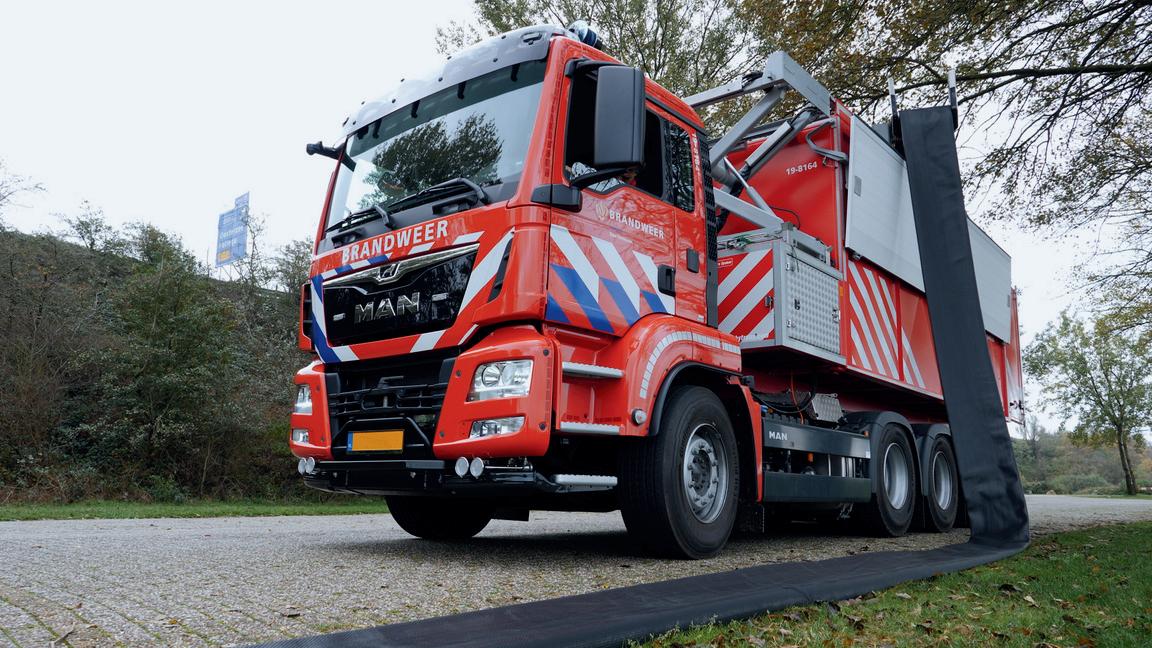
Fight large tank fires
Fight large tank fires
Full support for fluor-free foams
Full support for fluor-free foams
35 years track record
35 years track record


Management of Change to Fluorine-Free Foams
by Jaakko ValtonenTo replace the existing Aqueous Film Forming Foams (AFFF) with Synthetic Fluorine Free Foams (SFFF) is not a drop-in replacement case but requires a thorough management of change process to get done first time right. It is not just a technical but also procedural and chemical changes that needs to be managed, communicated, and documented well.
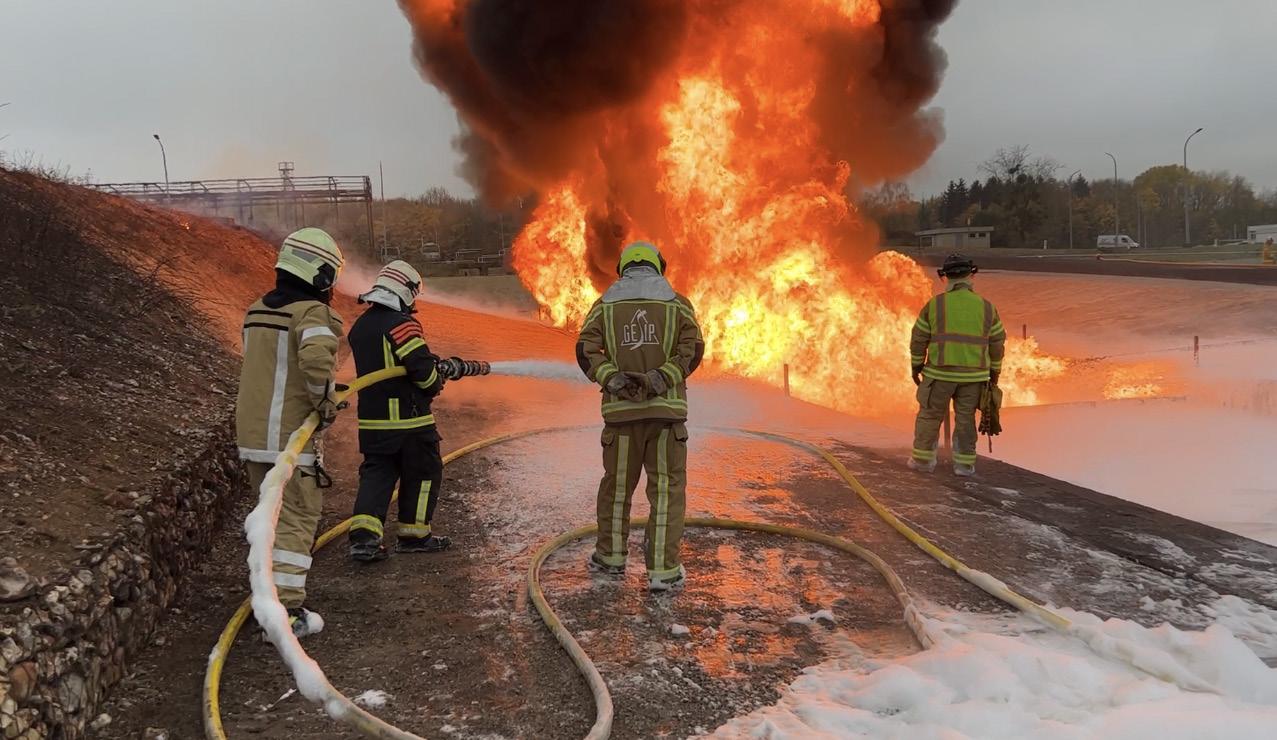
AFFF vs. SFFF foams

Critical properties and differences between AFFF and SFFF shall be understood by all parties involved to the change and especially by those responders who are
Film forming property:
AFFF foams form an aqueous film on top of the fuel that also smoothers, cools, and suppress the flammable vapors together with the foam bubbles. SFFF foams does not have that film forming property and only the foam blanket suppress the vapors and separates oxygen and flames from contact with the flammable liquid. Therefore it's critical to apply and maintain a uniform,
critical to apply and maintain a uniform, cohesive and stable foam blanket on top of the fuel. If a uniform SFFF foam blanket brakes, there is an immediate danger of re-ignition. AFFF foams are more forgiving with the foam solution film suppressing the vapors. Drainage time of AFFF foam is intentionally relatively fast because of the film formation but the drainage of SFFF needs to be much slower to keep up the bubbles and a stable foam blanket.
Key points:
to apply the foam gently and keep the foam blanket uniform in all circumstances.
Fuel pick-up and resistance:
AFFF foam bubbles are oleophobic and more oil resistance because of the fluorine content they have. SFFF bubbles are more prone for destruction and fuel pick-up during application. Fuel pick-up can be seen as a small flickering flames among the foam blanket that gradually breaks the bubbles and can lead to re-ignition. Therefore, a gentle application technique is even more important with the SFFF foams.
Key points:
SFFF foam concentrate and solution together with a system shall produce a good quality foam with sufficient expansion rate (aspiration) and drainage time. Responders shall have a good technique
Responders shall use gentle application methods (roll on, banking, raindown) to
prevent foam destruction and fuel pick-up. Possibly higher application rates needed with SFFF because of lower oil tolerance and higher fuel pick-up rates, especially if the application method plunge the foam into fuel.
Foam performance with different fuels
Fire performance tests of different bodies has shown that AFFF foams have some outstanding properties as described above and are more forgiving in application techniques. However, there are better and worse performing foams in both categories, so it would be wrong to say that either AFFF or SFFF foams are better by definition. Fire tests has also shown that one foam can have very good performance with one fuel and poor performance with another fuel. And another foam can have exactly opposite results. However, it seems that some good quality AFFF foams could have more steady level of performance with wider variety of fuels than SFFF foams. With wide variety of fuel types an optimum performance might require to have multiple foam concentrates on site. Obviously that is not a desired situation and a risk based and pragmatic approach is needed to find a way to an acceptable level of residual risk with minimum number of different foam concentrates on site. Pre-planning for fuel specific application rates might be required as well.
Key points:
It is important to select a SFFF foam concentrate(s) that performance has proven to be acceptable with the fuels on site and possibly adjust the application rates as necessary.
There is good quality SFFF foam concentrates on the market that can be safely used to replace existing AFFF foams. Given that performance and compatibility with the existing fuels and foam systems on site is assured as well as effective application techniques.
Other properties to consider:
Some SFFF concentrates and especially alcohol resistant (AR) types can be very
viscous. The same issue has been also with some AR-AFFF type concentrates. Viscosity increases in lower temperatures, so the lowest usage temperature and proportioning capabilities are important factors to consider.
SFFF foam concentrates might absorb moisture from the air that can affect to the foam concentrate quality and functionality. Recommendation is to minimize airconcentrate interface and keep the foam concentrate tanks full.
Management of Change Process
1. Foam system role and objective review: First step is to check the Fire Hazard/Risk assessments of those Fire scenarios where foams are used for a risk reduction: Is the use of foam the only and best risk reduction option or could there be other type of fire protection that could provide the same level of risk reduction?
2. Foam system detailed review: Detailed information of the existing foam systems is needed to assess if a new foam concentrate is compatible with the existing system as such or if any modifications are needed. (Foam concentrate tank, piping, proportioner and application devices) The detailed information is also useful for planning for the system clean up. At this stage it is also good to make cost benefit thinking if a renewal of an individual piece of the system is a better option than to try to clean it up thoroughly.
3. Selection and procurement of a new fluorine free concentrate:
Most important thing is to assure that the performance of a new fluorine free foam is effective for the fuels and purpose it is planned for. Depending on the type of use a basic information can be get from certified test results like e.g EN-1568, UL162, ICAO or MIL-F. If possible, a more site-specific fire tests should be done to assure that a foam is effective with the fuels and systems on site. Those tests could be done in cooperation with third party experts or foam manufacturers. DoD and LASTFIRE are internationally recognized independent organizations that have done excessive amount of fire tests with different fuels using SFFF foams.
The foam concentrate and the total foam system must be compatible together and produce a good quality foam that
would work as intended in the fire scenarios it is planned for. The detailed information gathered in step to is helpful for this compatibility assessment.
Chemical and occupational safety related information to assure safe handling and environmental compliance of a new foam concentrate. Basic information should be available in Material Safety Data Sheets and more information could be sought from the manufacturer. Some foam concentrates have a Greenscreen certification as an ecolabel to confirm a fluorine-free product. SFFF foam procurement specification should be used to ensure all the technical and commercial requirements for the foam concentrate and to clarify details of quality assurance and guarantee conditions.
4. Emergency preparedness and back up arrangements during transition: The transition process should be planned and scheduled so that the safety of the vulnerable people, environment and property is not compromised during the transition. Time of the active fire protection system down time should be minimized with careful planning and preparations. All the needed stuff and staff need to be available in time. The time consumed at different phases need to be evaluated and confirmed in beforehand to be aware and prepared for the time that the foam system is out of operation. One critical aspect is the time needed for the PFAS laboratory analysis to confirm acceptable residual levels of PFAS before filling up the system with a new SFFF foam. Experience has shown that the time can be somewhere between a few days to few weeks, so it would be very important to agree on the test method and schedule well beforehand with a test laboratory.
5. Clean out and dispose of: Before starting to empty or cleaning up a foam system a pre-plan is needed how to collect and contain all the concentrates and flush waters without any release to the environment. All PFAS containing liquids and solid waste need to be contained and disposed of in a controlled manner. High Temperature Incineration (HTI) is the most widely accepted method for the final destruction for the moment. Thorough clean out is essential for two reasons: To avoid any new concentrate contamination and possible harmful reaction with the residues of the old foam concentrate and to ensure that residual levels of PFAS are and also
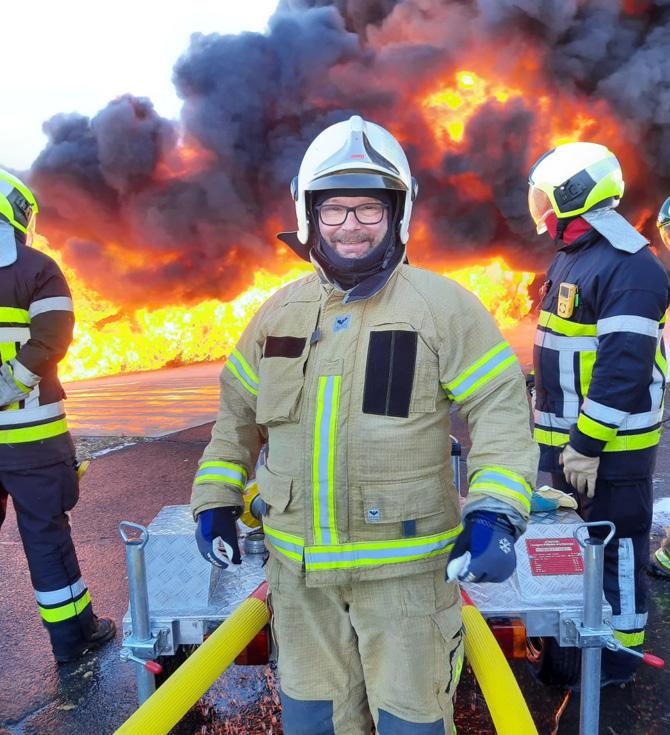
to stay below allowable regulatory levels after the new concentrate is in use. Every foam system and the history of use is unique, hence the level and method of clean out need to be planned case by case. Known and widely used method is rinsing the system three times with fresh water. Also known methods to enhance the cleaning is to use warm water, solvent (e.g. propylene glycol) and attrition (e.g. pressure washer). There are also commercial service providers with different decontamination technologies available. The big and still open question is how clean is clean enough and how to analyze and confirm that level of purity? For the moment there is different local, national or union level interpretations about it what makes it difficult for end users to cope with the requirements. The situation gets even more complicated when the PFAS molecules tends to accumulate on surfaces and may rebound from there to the new SFFF foams with the help of glycols that are common components of the SFFF foams. There is also swabbing methods available to quantify PFAS on surfaces and then with the results it would be possible to estimate the total PFAS concentration that could rebound back from the tank walls in to SFFF foam. Hopefully it wouldn’t be necessary for end users to go in that deep analysis to demonstrate acceptable level of cleaning efforts and results.
6. Commissioning phase: After final check and line up of the system the new SFFF foam can be filled into the system. Filling method should be gentle to minimize air intrusion to the foam during pouring or pumping the foam concentrate. Especially in very viscous concentrates the air bubbles
can affect seriously to the proportioning accuracy. Finally, the system is ready for a full system test to verify that the whole system will fulfill the performance requirements set for the design scenario and that the foam discharged from the system nozzles is of good quality and effective for the fire that it is designed for. Important foam quality indicators to verify are expansion rate, proportioning rate and drainage time. After the acceptable results the system is ready for its purpose to protect people, environment, assets and business continuity with ongoing integrity assurance by robust inspection, test and maintenance practices.
SUMMARY
My key message is that there is no short cuts for a successful transition from AFFF to SFFF foams, but a systematic MOC approach is needed to get the job done first time right without going back to drawing board and somebody’s wallet too many times. Depending on the type, size and number of foam systems it will take months or years from a decision to full transition. So it would be about a time to start if the goal is to be in compliance with the PFOA POP regulation deadline by July 2025 LASTFIRE, a consortium of international oil companies developing best industry practice in storage tank Fire Hazard Management, has worked for years to provide independent, verified, and valid information to support end users in transition to fluorine free foams. LASTFIRE has undoubtedly done the most extensive series of small, medium and large-scale fire tests with fluorine free foams together with leading foam manufacturers. Also US Department of Defense (DoD) and many individual foam manufacturers has done great job with fluorine free foam tests. So there is a lot of proven evidence that good quality SFFF foams can be used to replace the existing AFFF foams. Given that the performance and compatibility with the existing fuels and foam systems on site is assured as well as effective application techniques. The most needed information for the foam end users is how to analyze and confirm the acceptable level of PFAS purity after clean
out to avoid any subsequent consequences of PFAS traces or to be afraid of some PFAS molecules that could rebound to the new fluorine free concentrate after years. This uncertainty has already caused delays in removal of the big PFAS sources from the foam stocks that is the ultimate purpose and goal of the PFAS restrictions.

article was presented to you by:

Independent consultant and Founder of FARSOL Oy, Industrial Fire Protection solutions for aviation and industrial sectors.
Over 35 years experience of Emergency Response and Fire and Explosion Hazard Management (FEHM) in different municipal and industrial roles spanning hands-on response to corporate adviser:
- 22 years service in Industrial Fire brigade at Kilpilahti oil and petrochemical industrial park as a firefighter, Incident commander and Deputy Chief Fire Officer.
- 13 years at corporate level safety function in Fire Safety and Security Specialist, Crisis Manager and Process safety manager roles.
- Leading role in Fire Hazard Assessments and active and passive fire protection design philosophy and performance requirements for NESTE Oyj major investment projects in Singapore and Netherlands.
- International cooperation as a LASTFIRE Steering Panel and Executive Panel member for 18 years. Active involvement in medium and large-scale firefighting foam fire tests, developing and implementing test protocols for both traditional and new (biofuels) materials.
- Member of Finland National PFAS expert workgroup
+3580504586804
jaakko.valtonen@farsol.fi
www.farsol.fi

Firefighting Foams: Fire Service Roadmap
by Fire Protection Research Foundation Roadmap Team: Gerard Back, Edward Hawthorne, Casey Grant, Niall RamsdenThe Fire Protection Research Foundation (FPRF), the research affiliate of National Fire Protection Association (NFPA) , through a U.S. Department of Homeland Security (DHS) Federal Emergency Management Agency (FEMA) Assistance to Firefighter Grant (AFG), has been working with fire service user groups to understand and describe a “ROADMAP” on how to transition from Aqueous Film Forming Foam (AFFF) to a next generation product or solution.
The roadmap provides a systematic path that works through knowing the current regulations and when to make the transition, cleaning of equipment and disposal of effluents and legacy concentrates, foam selection and implementation, minimizing firefighter exposures, and how to handle foam discharged from a cleanup and documentation perspective.
The roadmap illustration is shown in Figure 1. The initial program that originated in 2019 included a three-day virtual workshop (October 12-14, 2021) and a detailed final report (May 2022). The report, the workshop proceedings and the presentations given during the workshop are available on the roadmap website: www.nfpa.org/foamroadmap
In September of 2022, the FPRF was awarded a second grant (i.e., Phase II) to pursue the project titled “Firefighting Foams: Implementation of Fire Service Roadmap”. The second phase takes a more dynamic approach by providing quarterly newsletters to members of the fire service in addition to a workshop and a detailed final report to aid in the implementation of the roadmap information.
The Newsletters are focused on five major areas of interest in transitioning to new firefighting foams as listed as follows:
1. Information on health, safety and environmental issues associated with
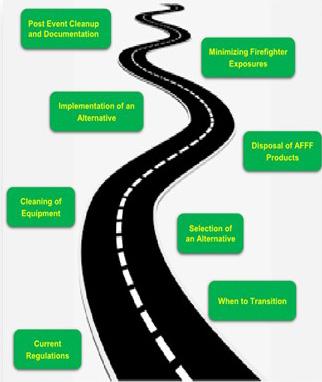
firefighting foams.
2. Regulatory update on foam transition.
3. Information on firefighting effectiveness experience (testing and actual use) of new types of firefighting foams.
4. Best practices on foam use and training to allow the fire service to share tactical learnings on the use of firefighting foams to deal with Class B fires.
5. Best practices on how to transition from existing hardware (apparatus, nozzles,
proportioners) to upgraded or new hardware to deliver new types of firefighting foams, including best practice to clean existing hardware.
Additional Newsletters will be, and or have been focused on one specific area such as Health and Environmental Issues and/or Training to provide a deeper understanding of the topic prior to publishing the final Phase II report.
If you would like to receive an email notification when a project newsletter is published, please indicate your response by using this link or by scanning this QR code.

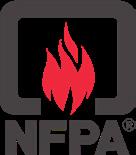




The newsletters are also published and available from the project website: www. nfpa.org/foamroadmap
The second workshop (four separate days) is scheduled to begin in the Spring of 2024 with the following tentative dates and topics:
1. March 7 - Health, Safety and Environmental Information including International, US Federal and States Regulatory Updates on Foam Transition.
2. April 11 - Firefighting Foam Testing Results, Best Practices, Tactics, and Actual Incident Use.
3. May 9 - Latest Foam Hardware Information – Cleaning, Replacement, and Disposal.

This article was presented to you by:
3. May 9 - Latest Foam Hardware Information – Cleaning, Replacement, and Disposal.
4. June 6 - Firefighting Foam Training, Actual Incident Use Case Studies, and a Look into the Future.
Registration link to attend these workshop series will be available soon from the project website: www.nfpa.org/foamroadmap
The Phase II final report will include updated information on the topics covered in the first report as well as additional Annexes on Assurance (how to test and maintain the “new” foam/system), Training & ReTraining, and Transitional Case Studies. The Phase II Workshop Proceedings and the Phase II Final Report should be posted on the website in the early Fall of 2024.
Jerry Back is a senior fire protection engineer at Jensen Hughes with over 38 years’ experience conducting fire investigations, fire hazard assessments (FHAs), and research and development (R&D) programs for federal agencies/Department of Defense (DOD) and commercial organizations. For more than three decades, Mr. Back has been responsible for project management and administration (planning, execution, and analysis) of fire protection research, development, testing, and evaluation programs. He has also performed thousands of full-scale fire tests, including evaluations of aqueous film-forming foam (AFFF) agents and systems, aerosols, compressed air foam systems, high expansion foam systems, gaseous agents, water mist systems, and water spray/delude systems. He is either the Principal or Alternate on every NFPA foam and aviation committee (twelve total).
Edward Hawthorne is a private consultant for DFW Dynamics, serving as the principal fire protection consultant for the American Petroleum Institute. A retired global emergency manager and discipline leader for Shell Oil Company, he spent over 25 years providing emergency response support worldwide. Mr. Hawthorne chaired the technical committee for NFPA 1081, Standard for Facility Fire Brigade Member Professional Qualifications, and served on several other NFPA committees, contributing to standards related to fire safety, incident management, loss prevention procedures, and firefighter competencies. He was a member of the FEMA Incident Management Working Group and was key in developing new all-hazard incident management tools post-9/11. Mr. Hawthorne has served in various fire departments, including as assistant fire chief of the Newark Volunteer Fire Department.
Casey Grant is Executive Director of DSRAE, LLC, an independent professional consulting firm with a focus on the design and implementation of research for the fire protection and emergency response communities. Prior to 2020, he served as the FPRF Executive Director since 2015, and prior to joining the FPRF in 2007, Casey was the Secretary of the NFPA Standards Council and Assistant Chief Engineer, among other roles at NFPA since 1988. He holds a BS from the University of Maryland and MS from Worcester Polytechnic Institute (both in Fire Protection Engineering), is a Registered Professional Engineer in multiple States, is a Fellow in both the Society of Fire Protection Engineers and the Institute of Fire Engineers and has one fire protection related U.S. patent.
Dr. Niall Ramsden combines over 30+ years of worldwide practical experience as fire hazard management consultant with academic knowledge of fire hazard management in oil, gas & petrochemical sectors with emphasis on refineries & storage terminals. He is the coordinator of LASTFIRE, an international consortium that is actively involved in conducting large scale storage tank fire tests and will provide key inputs with international perspective on this issue. Niall previously worked with various foam companies and been a member of NFPA 11 technical committee for over 25+ years. He is also a member of EN 13565 Part 2 committee, Energy Institute Process Safety Committee, UL 162 steering panel member among other.
Synthetic fluorine free foam systems

The environmentally responsible alternative
Viking EMEA is offering a comprehensive line of FM Approved fluorine free fixed foam systems for Hydrocarbon and Polar Solvent applications. The product line now has an extensive range of non-aspirated sprinklers, proportioning equipment and other discharge devices for use in ignitable liquid risks such as warehouses, chemical manufacturing areas, loading racks or aircraft hangars.
Viking and its partners have worked hard to develop a range of SFFF foam concentrates and compatible hardware for use in fire protection systems. Viking, along with international approval and certification bodies, has carried out extensive fire and performance tests to recognised test standards, demonstrating real life performance of the complete system. Our commitment to demonstrating product performance will continue as new third-party certifications continue to be added.
For more information visit: viking-emea.com/Fluorine-Free-Foam-Sprinkler-Systems/






SFF Transition Considerations in Aircraft Hangars
by Simon BarrattFixed foam fire protection systems in hangars have been protecting global airlines major assets for decades. As the industry deals with the sweeping changes related to geographic bans and restrictions on fluorinated foams, what options are available for the use of more environmentally responsible product choices?
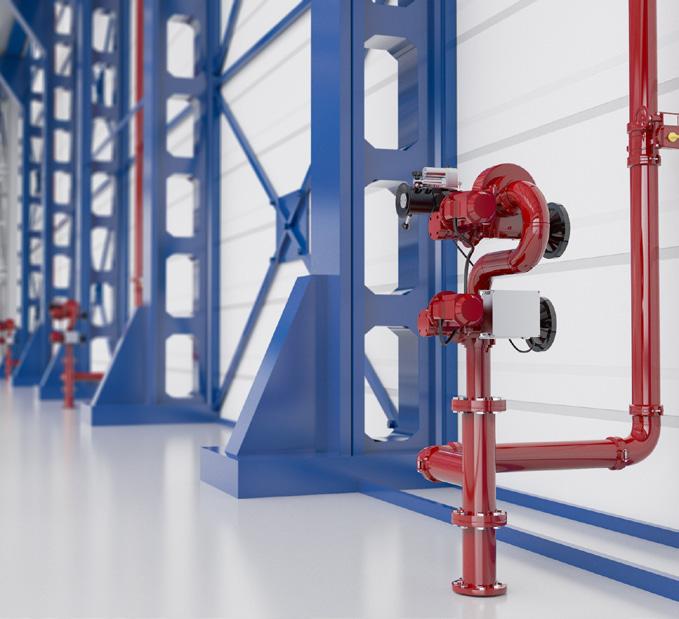

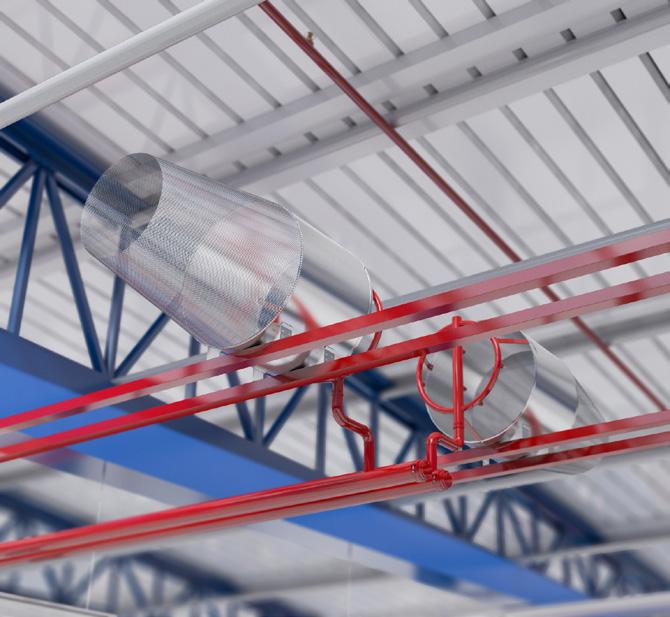
Traditional Aqueous Film Forming Foam (AFFF) based firefighting foams used in aircraft hangars benefited from the positive performance attributes of PFAS (per- and polyfluoroalkyl substances). As a greater understanding of the environmental and health effects of these chemicals grows, so too does the requirement for firefighting foams without this long term impact. Synthetic Fluorine Free Foams (SFFF’s) have been around for over 20 years but is only the last 5-7 years where the foam manufacturing industry has really focused on their product development.
Design Standards
New hangar projects are relatively straightforward in that there is no change in the general approach between fluorine or fluorine free type foams but for existing installations where the fluorinated foam needs to be replaced (transitioned), it will not be a simple process as a dropin replacement is simply not possible. The question is therefore to what extent will the system need to be changed. To ensure effective fire protection in aircraft hangars, a suitable design standard will be selected. Factory Mutual (FM) occupancy data sheet 93-7 sets out their requirements for system designs as does UFC 4-211 for US Military Hangars. Foam systems in hangars are commonly designed in accordance with NFPA409. The current 2022 edition does not include SFFF as a type of foam permitted within the design standard but
with several foam concentrates now on the market passing many of the same listings as AFFF fluorinated foams, new and transition projects are proceeding with this non-compliance. The omission of SFFF in NFOPA 409 will be addressed during the next revision cycle. As new installations move ahead using SFFF with a blank sheet of paper, how can existing systems be transitioned in a way that meets legislative and sustainability goals whilst maintaining a high level of fire protection assurance?
Fixed Systems
A starting point is to recognise that an aircraft hangar’s fire protection is a fixed system. This means it must be designed to operate at a high level as standard without any external assistance or adjustment. Fixed system components should be tested and proven by independent authorities. It is a requirement of NFPA 409 that Listed equipment be used and UL162 (Standard For Safety - Foam Equipment and Liquid Concentrates) and FM5130 (Examination Standard for Foam Extinguishing Systems) meet this definition. A benefit of NFPA 409 and FM datasheet 93-7 are the options available when it comes to system and foam discharge device type.
Non-Aspirated Foam/Water Sprinklers are used in overhead deluge systems and Group II closed head wet foam systems. These discharge devices are not developed for use with foam. When used as a foam

sprinkler they need to be combined with special, high performance concentrates that can compensate for the lack of “foaming” performance. There are specific fire tests for non-aspirated sprinklers in both UL162 and FM5130. Unlike some of the topside tests in these standards, the requirements for sprinklers remains the same between fluorinated AFFF based foams and nonfluorinated SFFF foams. These tests are conducted using four sprinklers spaced at 3.04m x 3.04m (10ft x 10ft) for FM5130 and 3.73m x 3.73m (12.25ft x 12.25ft) for UL162 around a 4.65m2 (50ft2) fire test tray. The test is specific to each sprinkler SIN (Sprinkler Identification Number) and are subject to minimum test densities, which must be achieved to ensure qualification of the product combination. This test is very challenging and not all foams are capable of passing because after a foam discharge period of five minutes, during which the fire must be extinguished, there follows a five minute deluge of water, before the burn back part of the test is commenced. Many foams fail during this water deluge phase.
When reviewing a foam concentrate transition involving sprinklers in hangars, as long as the particular SIN installed has been tested with the chosen foam concentrate, no density changes will be required. Additionally, some manufacturers like Viking are now achieving listings with Jet A1 in addition to heptane, due to the concerns about how representative heptane is of all hydrocarbon fuels. When selecting a listed product it should be noted that
there is a different density requirement between UL and FM. UL has a minimum design density of 6.4mm/m2 (0.16 g/ ft2). However, there is a fixed sprinkler height of 4.6m (15ft) which is probably not representative of a hangar. The FM standard requires a minimum test and design application rate of 8.2mm/m2 (0.2 g/ft2) but manufacturers are free to test much higher. The height of the sprinkler above the fire pan does have an effect on the fire test performance.
Trench nozzles are a low level, low expansion foam discharge device permitted under NFPA 409, FM 7-93 and US Military UFC 4-211. These nozzles provide a very discreet foam application as the system is installed inside the drainage trenches required to remove jet fuel in the event of a leak. These systems have traditionally used AFFF at a density of 4.1mm/m2 (0.1g/ ft2) and there are several SFFF’s that have been tested with Vikings Grate Nozzle. One of these SFFF’s also carries an FM Approval specifically for Jet A1 at a density of 4.1mm/m2 (0.1g/ft2). This means that no additional flow is required meaning water supplies and piping do not need to be upsized. By exchanging the nozzle deflector (GN200), or complete nozzle (GN201), the new GN202 nozzle for use with SFFF can be easily and quickly retrofitted to existing systems.
Oscillating foam monitors can also be used to achieve a low-level foam discharge over the hangar floor. Systems in the field
are either supplied with foam solution from a central network or by using special discharge nozzles to self-induct foam concentrate at the at the monitor location. It is the self-inducting nozzle where special care should be taken, as low viscosity foams such as AFFF are traditionally easier to draw from the foam concentrate container. When replacing with higher viscosity SFFF concentrates, the length of the hose and height of elevation need to be reviewed to ensure correct induction. The supplier of the monitor nozzle should verify the limitations when using higher viscosity foams. It is inevitable that the calibrated orifice plate within the nozzle will also need to be reviewed and probably replaced. When selecting the replacement SFFF product, it should have a listing with the specific nozzle anticipated for use. A review on the density should also be considered. If the device is considered a Type III forceful application device then this is where a difference will be found with AFFF under UL162 because the design application density will increase from 4.1mm/m2 to 6.5mm/m2.
High Expansion foam systems used for local application under the various design codes should be unaffected by PFAS legislation as most high expansion specific firefighting foams for the protection of hydrocarbon ignitable fuels are historically not containing fluorinated surfactants. This should still be verified with the foam concentrate manufacturer.
A Proportioning System is at the heart
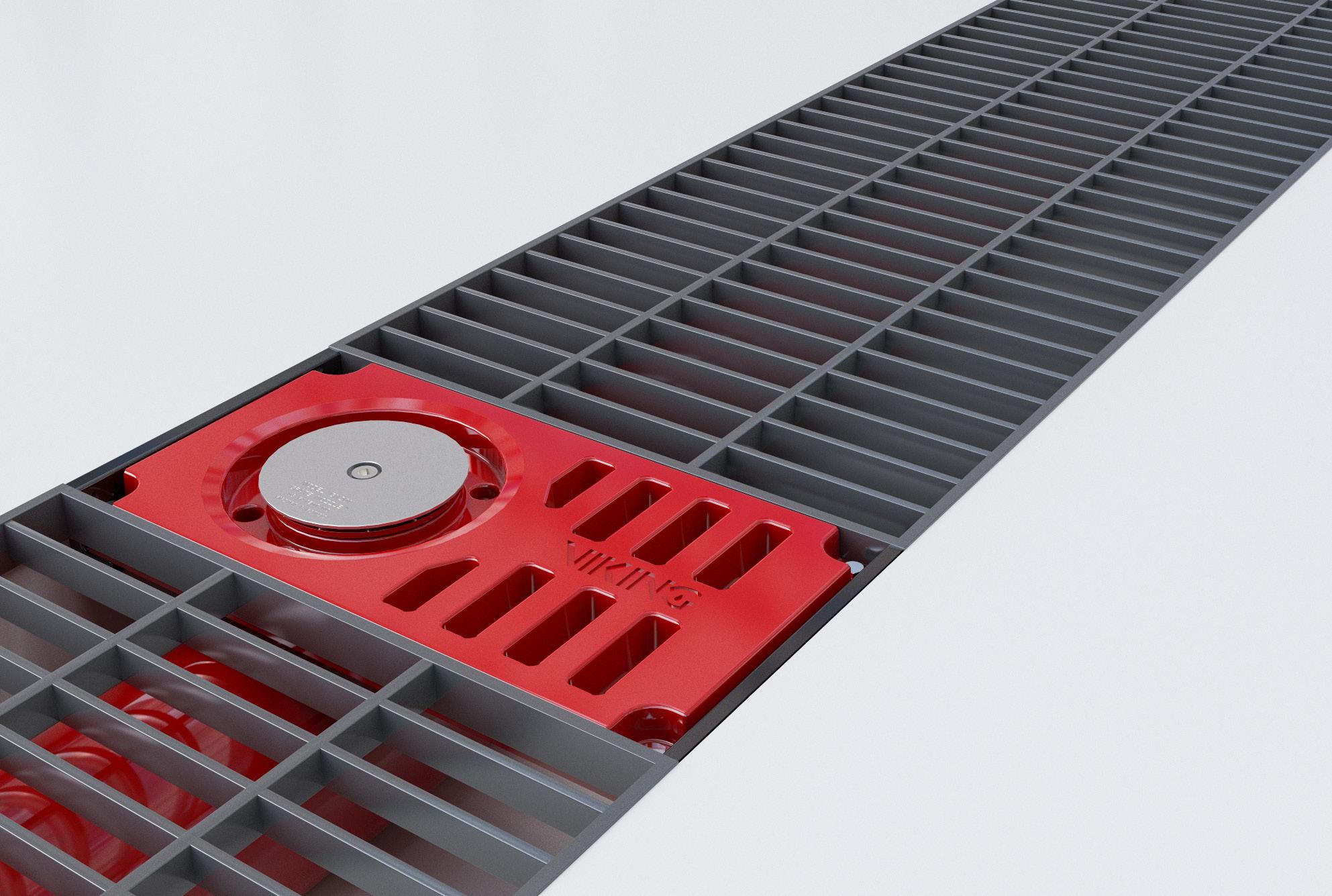
of any fixed foam installation. This is where the foam concentrate is mixed with the water supply at a defined percentage, which is generally a 3%:97%, foam:water ratio. There are several different proportioning methods and the challenges associated with each can generally be summarised. Existing systems are primarily protected with AFFF. This is a low viscosity foam concentrate with physical properties similar to water. At this moment in time, the high performance SFFF products on the capable of achieving UL or FM listings are of a higher viscosity. This change in viscosity will invariable mean an adjustment to the proportioning method or even a complete replacement. No matter which proportioning method is utilised, the foam concentrate pipework from the storage tank to the device is critical. Excessive length, changes in direction, elevation and inline devices will all contribute to pressure or suction loss. Moving to a higher viscosity foam will probably mean a reworking of the proportioning set-up.
based proportioning systems usually utilise an atmospheric tank made from Fiberglass, High Density Polyethylene, Stainless Steel or other material deemed suitable by the foam concentrate manufacturer. If the foam concentrate reserve requires the same volume after transitioning then the tank could be cleaned, but replacement might also be a viable option. A bladder tank based proportioning system will require a new internal bladder. This proportioning method is part of the system approval and will need to be tested and listed with the chosen foam concentrate. The inline proportioner will also need to be replaced.
Foam Hose Reels are commonly found alongside the fixed firefighting to system to enable an emergency intervention before the main fixed system is activated. These may be fed from the central foam reserve or might be independent having the foam injected locally at the hose reel location. The proportioning might use a bladder tank or educator but in both cases, some changes to the hardware will be required
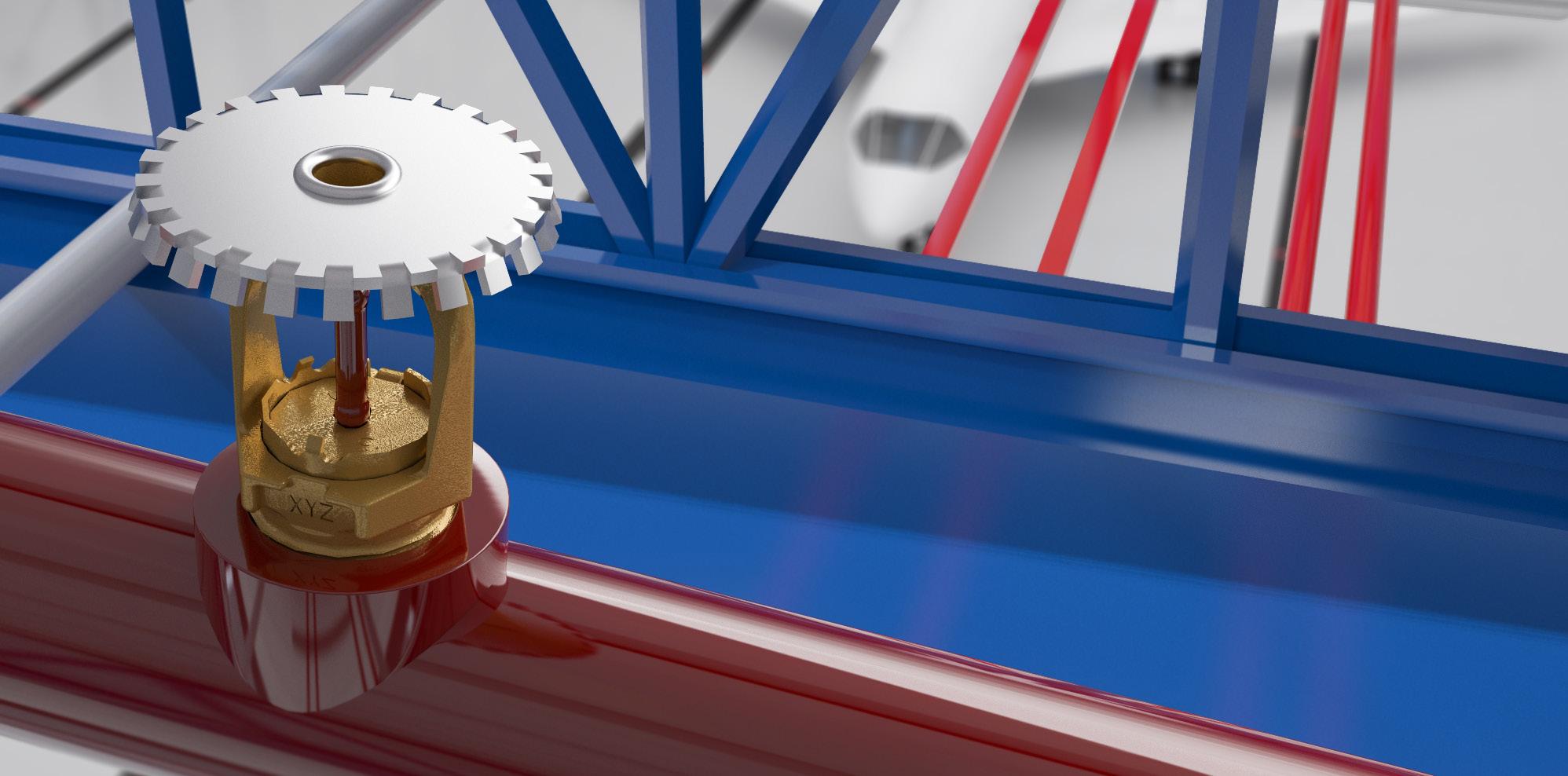
to manage the change of foam. A complete replacement might be viable as opposed to adapting and cleaning.
Testing and commissioning will be required after the system transitioning activities have been completed. The testing of the proportioning equipment and particularly, self-inducting monitor nozzles can be tested with mimic foam. This is a specially developed test liquid designed to mirror the physical attributes of the real foam but without the expansion and without the other chemicals that make discharge to drain unlikely.
Transitioning Competence
There are a growing numbers of manufacturers with products and solutions suitable for new and existing aircraft hangars with international third party listings and approvals. There is no generic approach to transitioning and each installation needs to be assessed to find a compliant but pragmatic approach. Therefore, selection of a manufacturer with all available options helps to ensure the right solution and unbiased advice.
For additional information, please contact the author, Simon Barratt.

This article was presented to you by:
 Simon Barratt
Simon Barratt





FoamTronic® Electronic Foam Proportioning
by Tony MorrisseyWith the growing dash towards a fluorinefree future, it seems that many users are not looking beyond the foam changeout itself to take advantage of this once in a generation opportunity to upgrade their entire system.
In some cases, change is dictated by the foam brand and the inherent properties of the chosen concentrate, e.g. application rate changes, percentage mixing ratios, viscosity considerations. These properties can change system flowrates, foam storage volumes and even hardware such as discharge devices - and much is written about those topics and how a holistic approach to foam transition is necessary.
However even with such a holistic approach it is likely that many operators will take the easiest route for a quick changeout and retain as much of their existing system as possible, This may lead to later regrets about not taking the ideal opportunity to modernise systems and move away from dated foam proportioning methods (bladder tanks, ILBP’s and water powered units) to
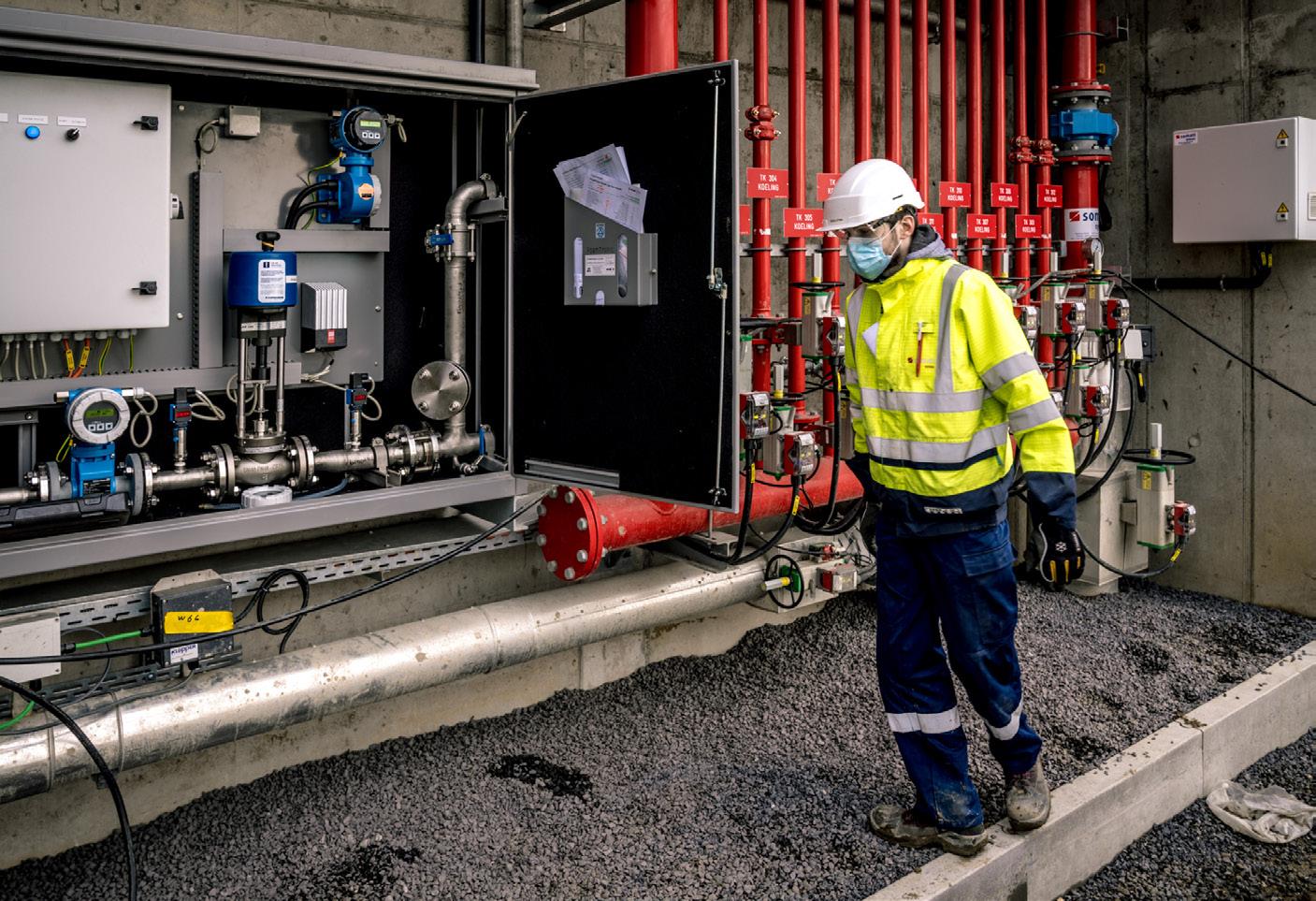
next generation electronic proportioning, which will ensure a future proof solution.
Legislation surrounding the need to transition away from C8 foam is now fully in place and the next step related to C6 foam is on the horizon with some users likely to have a long transition period – so why worry, we have ten years, right? Not really!

Many operators have already begun to transition towards fluorine free foams and have moved from C8 to SFFF in one step. Others with existing C6 foams may be tempted to retain their use for as long as possible but the use of these products needs to cease! Reasons for doing that will vary; maybe because there are environmental concerns and public image is important? maybe because the risk of accidental spillage could lead to high-cost litigation? but most certainly because employees will still be tasked with handling these products. Our colleagues in fire departments and maintenance teams will still be exposed – especially when testing and that is completely unnecessary with the abundance of SFFF alternatives now available.
Whether staying with C6 or transitioning to SFFF it should be recognised that these are all chemicals and their release to the environment must be controlled, these

products are on the environmentalist radar and legislation to restrict usage will continue to grow, remediation for spillage costs of fluorinated foams may not be insured. These foam liquids are very high cost so whether used for testing or in anger the cost of discharge is prohibitive.
So how does the FoamTronic® electronic foam proportioner help and what is it?
An upgrade to a FoamTronic® system results in a suppression system that can be tested without any negative impact on the environment and at a very low cost. This is possible because the FoamTronic® can test the mixing ratio without mixing firewater and foam concentrate, but still providing an accurate and reliable measurement of the mixing rate.
In operation the volume of produced foam solution is automatically recorded, meaning a detailed report can easily be made, helping with clean up and environmental agency scrutiny.
The FoamTronic® electronic foam proportioner can be installed as a retrofit replacement for any inline balanced pressure proportioner where a positive pressure foam supply is available. This retrofit will also be future proof against any further changes on the job site to foams of different types, which gives peace of mind when considering capital investment in equipment.
The FoamTronic® electronic foam proportioner can be integrated into an existing bladder tank assembly to provide all the advantages of electronic proportioning

without the need to remove the existing system completely – a benefit where these systems are installed in building and cannot be easily removed.
FOAMTRONIC® - Electronic Foam Proportioning
The Knowsley FoamTronic® is an electronic foam mixing system which very accurately mixes foam concentrate and water based on the actual firewater demand of the system. This is achieved by continuous monitoring of the firewater and foam concentrate flows using electromagnetic flowmeters and real-time adjustment of a concentrate control valve. The accuracy and stability of the system is based on the selection of premium components and a unique control system with state-of-the-art logic developed specifically for FoamTronic®. The control system records all process values and alarms during operation or test which are available via a user-friendly interface.
FoamTronic® is suitable for all sizes of foam system from low flow up to very high flow, such as the large volume foam systems associated with storage tank risks where the potential impact of ignition of a hydrocarbon release could be catastrophic. This type of fire can only be extinguished using a fully functioning foam suppression system which is regularly tested, in most cases this requires the actual discharge of foam solution to the risk area which causes pollution and environmental hazards, and of course the high cost use of foam concentrate.
System testing is a mandatory requirement in some regions but even when this is the case it is only a snapshot at a given time and ideally consideration should be given to

the daily status of the firefighting system. A FoamTronic® system will perform daily diagnostics automatically to report system health.
FoamTronic® technology means that the proportioning accuracy of the foam/ water mix is controlled to finite levels and will automatically adjust to changes in system demand, in operation this has the potential to save huge volumes of foam concentrate which would be used by less accurate mechanical systems. This means investment in the capital infrastructure of foam pumps, storage tanks and foam piping can be rationalised to suit the actual required foam volume thus ensuring best value.
For more information and to arrange a discussion about a specific application visit us at www.knowsleysk.co.uk

This article was presented to you by:
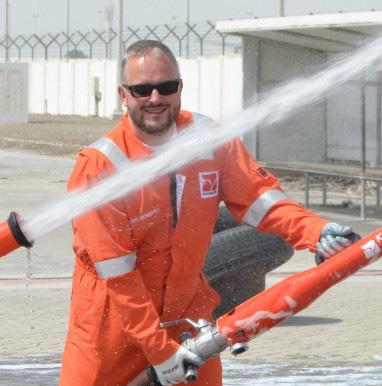
tmorrissey@knowsleysk.co.uk
Responsible use of C6 Fluorine Chemistry and to providing its products to firefighting foam manufacturers.
Good practices, Life Safety, and Flammable Liquid Protection remain Dynax’s North Star.
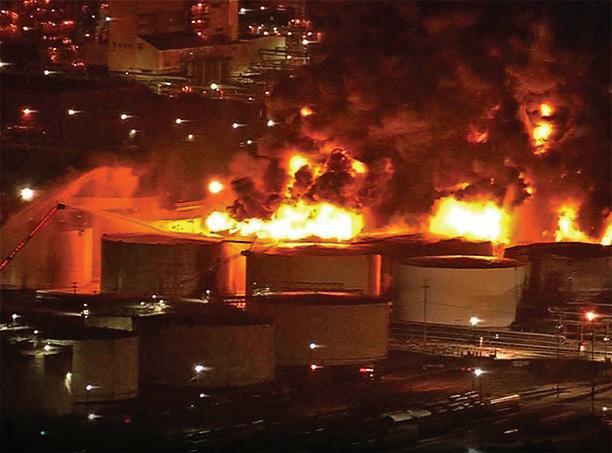
As high hazard, flammable liquid emergencies are occurring world-wide, a recap is needed:
C6 AFFFs and AR-AFFFs remain the highest performing firefighting products for flammable liquids.
C6 Foam Concentrates are required for critical uses and major fire events.
C6 Foam Concentrates are proven and e ective with decades of successful extinguishments.
Reminder of Best Practice:
C6 Foam Concentrates should not be used for testing or training. In cases of fire events or accidental release, C6 Foam Concentrate run-o should be controlled and captured. Refer to Dynax SDSs for region specific product use and disposal information.
Recent Specific Updates:
Universal EU PFAS ban proposal does not cover PFAS in Firefighting Foams.
The proposal for PFAS in Firefighting Foam includes a 10 year derogation for Seveso III sites.
Selecting the right Non-Fluorinated Foam Solutions

FOR OIL, GAS AND PETROCHEMICAL OPERATIONS
by David A. GarrisThe Changing Landscape for Firefighting Foams
For decades, aqueous film-forming foams (AFFFs) and alcohol-resistant aqueous film-forming foams (AR-AFFFs) were the standard for delivering rapid control and extinguishment of Class B industrial fires. These foams work by forming an aqueous and/or polymeric film on the surface of the flammable liquid to suppress the fire and mitigate off-gas vapor.
As the regulatory landscape shifts firefighting foam technology to products without fluorinated film formation, the criteria for foam selection and system design are also changing. Since the properties and suppression mechanisms are different, nonfluorinated foams (NFFs) are not simple, drop-in replacements for historical AFFFs. As NFF solutions continue to evolve, fire protection engineers will need to carefully balance parameters such as application rates, system compatibility, expansion ratios and fire suppression performance in designing the best NFF solution to protect their specific hazard.
High-Performance ANSUL® NonFluorinated Foams
Two years ago, THUNDERSTORM® WNF33A non-fluorinated firefighting foam concentrate was introduced to the industry
as the first product in its category to deliver control and extinguishment performance comparable to its AR-AFFF predecessors on large hydrocarbon tank fires. This NFF foam continues to set the emergency response industry standard for fuel in-depth tank fire protection and is now available from ANSUL distributors as part of the ANSUL product portfolio.
Along with THUNDERSTORM WNF33A AR-SFFF, another recent addition to the ANSUL Class B firefighting NFF portfolio is ANSUL NFF-331 3x3 AR-SFFF, designed for premium sprinkler system performance in suppressing flammable liquid fires.
Rounding out the ANSUL Class B NFF
product line is ANSUL UL201 3x3 ARSFFF, which has been optimized for spill fire response and various fixed system installations.
This trio of NFF concentrates provides a full breadth of fire protection options for facilities that manufacture, store and transport flammable liquids. All concentrates are UL 162 listed as alcohol-resistant synthetic fluorine-free foams (AR-SFFFs) for use on Class B hydrocarbon hazards, such as gasolines, diesel and aviation fuels, as well as polar solvent fuels like alcohols and ketones. In addition to UL 162 listings, all three NFF concentrates carry EN 1568:2998 ratings for hydrocarbon and polar solvent fuels.
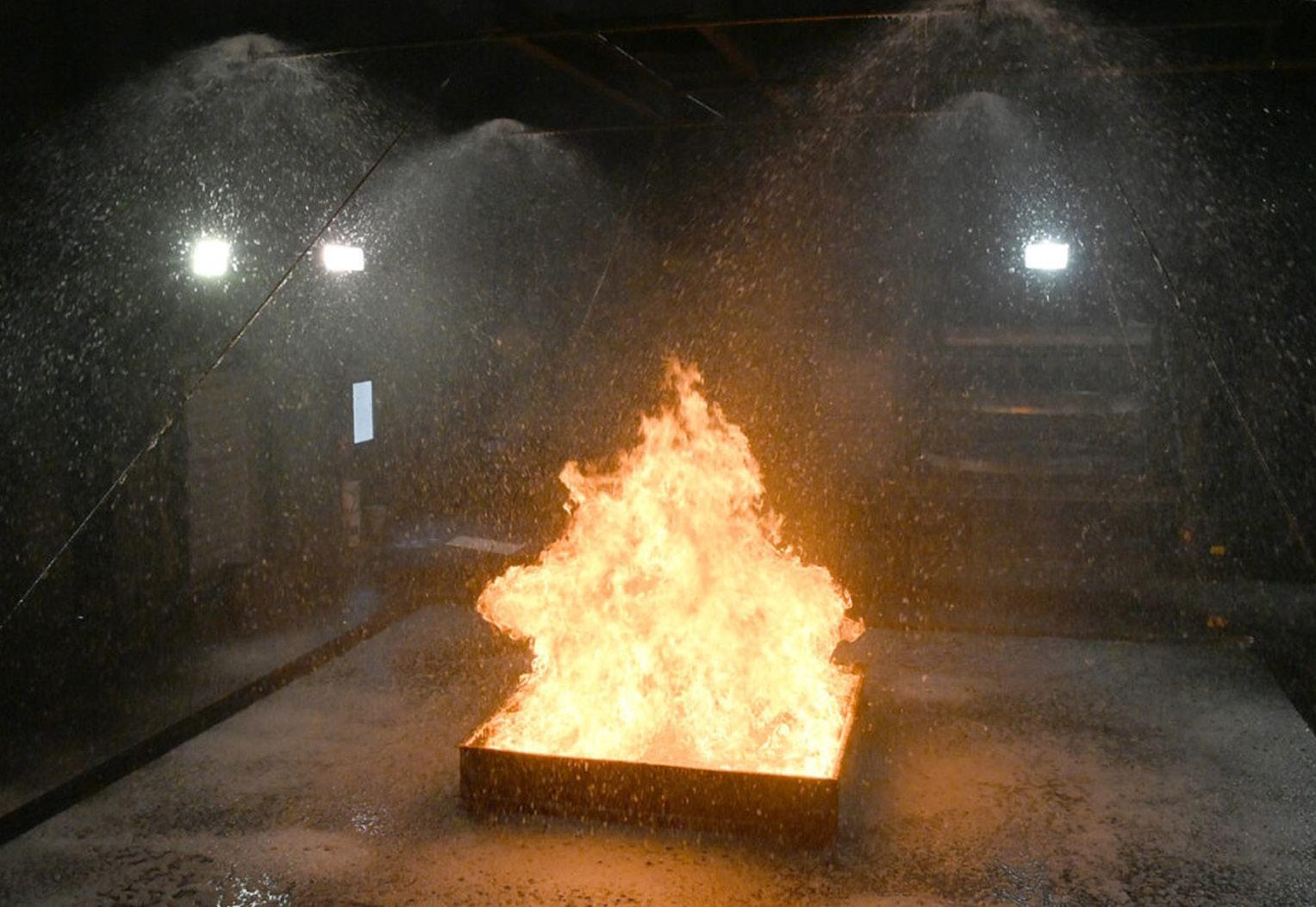
solvent fuels like alcohols and ketones. In addition to UL 162 listings, all three NFF concentrates carry EN 1568:2998 ratings for hydrocarbon and polar solvent fuels.
Enhanced Non-Fluorinated Foam Solution for Sprinkler Systems
ANSUL NFF-331 3x3 AR-SFFF offers sprinkler system design engineers a robust foam with application rates similar to legacy AR-AFFFs for many fuel hazards. Whether converting an existing installation or designing a new sprinkler system, lower foam application rates minimize infrastructure requirements for water
supply and piping. For any fixed system application, it is important to consult with the manufacturer of both the concentrate and hardware to ensure the correct combination of foam and equipment is utilized to provide the appropriate protection for a specific hazard.
ANSUL NFF-331 concentrate is UL 162 listed for use with upright and pendent 5.6K [K80], 8.0K [K115] and 11.2K [K160] sprinklers on hydrocarbon and multiple polar fuels. This concentrate is well-suited for fixed and semi-fixed foam systems using sprinklers, nozzles, foam chambers and other standard discharge devices for
applications such as:
Industrial chemical and petroleum processing facilities
Fuel or chemical storage tanks
Truck or rail loading and unloading facilities
Flammable liquid containment areas
Flammable liquid warehouse storage facilities
Mobile response equipment

ANSUL NFF-331 foam application rates at 3% concentration for various fuel hazards per UL 162 listing.
Demonstrated Performance for Tank Fires
With performance on par with legacy THUNDERSTORM AR-AFFF concentrates, ANSUL THUNDERSTORM WNF33A Foam
Concentrate offers industrial firefighters a no-compromise, non-fluorinated solution to fight oil, gas, chemical and industrial fires, helping keep people and facilities safe and productive.
The performance of THUNDERSTORM
WNF33A was demonstrated in tank fire tests conducted at the Industrial Rescue Instruction Systems Training Center in Beaumont, TX, USA.
During multiple rounds of testing, the foam was applied at a 3% proportioned concentration to a simulated hydrocarbon fuel in-depth fire in a 42-foot (12.8-meter) diameter tank. While NFPA 11 and UL 162 standards mandate a minimum foam application rate of 0.16 gpm/ft2 #these types of fires, the THUNDERSTORM
WNF33A Foam Concentrate was tested at half that application rate, 0.08 gpm/ ft2 (3.26 lpm/m2), to challenge its fire suppression properties.
After a pre-burn period, firefighters were able to achieve control of the fires with THUNDERSTORM WNF33A Foam
Concentrate in less than two minutes, with full extinguishment achieved in under five minutes, a performance comparable to the legacy THUNDERSTORM AR-AFFF concentrates.
Unlike many non-fluorinated firefighting foams on the market, THUNDERSTORM WNF33A Foam Concentrate has been extensively tested and found compatible for use in conjunction with most dry chemical agents. This provides first responders the critical firefighting capability of utilizing dual-agent firefighting techniques without diminishing foam performance.
Application Rates, Expansion Ratios and Proportioning
All three NFFs in the ANSUL portfolio — THUNDERSTORM WNF33A, ANSUL NFF331 and ANSUL UL201 — are UL 162 listed AR-SFFFs; however, these foams have also passed the UL 162 type III test protocol on hydrocarbons at the same design application rate and similar control times as traditional AR-AFFF products, demonstrating an extra safety margin of suppression performance at their listed AR-SFFF application rates. In addition to the UL 162 listings, all three concentrates also carry EN 1568:2998 ratings for hydrocarbon and polar solvent fuels. While industry-recognized third-party approvals and listings are critical and typically dictate the design application rate for a specific installation, there are additional factors to consider when selecting the appropriate foam concentrate and equipment to protect flammable liquid hazards.
A foam’s fire suppression performance is paramount, but the ability to apply the foam concentrate using current, conventional firefighting equipment is also important. Independent industry tests have suggested that many non-fluorinated foam concentrates require foam expansion ratios between 7:1 and 10:1, necessitating air-aspirating discharge devices to achieve effective fire suppression on Class B fires. This demonstrates the necessity of pairing only a discharge device that has been tested with the specific foam concentrate for a fire system installation. The ANSUL technical service team can assist design engineers in this effort.

Comparison of time for THUNDERSTORM non-fluorinated vs. legacy foams to achieve 90% fire control on large, 42-foot tank fire test.
The THUNDERSTORM and ANSUL Class B NFF concentrates produce robust, effective firefighting foam blankets at lower expansion ratios — between 3:1 and 4:1 — as demonstrated in smaller-scale pan fire and larger-scale tank fire tests, on fuels more volatile than heptane; these results have been verified by independent thirdparty testing. This lower expansion range allows application of these NFFs with most standard discharge equipment. For first responders, this provides a safer throw distance than air-aspirated foam, which is especially critical during response operations for large-scale industrial tank fires.
Another challenge with many nonfluorinated foams is proportioning, as these concentrates often have significantly higher viscosities than legacy AR-AFFFs. The products in the ANSUL NFF portfolio were developed with viscosity shear curves similar to historical, high-performance ARAFFFs. Therefore, these concentrates may typically be proportioned with the standard equipment and setup used with legacy concentrates in most applications. This facilitates system design and the adoption of these NFF concentrates in both fixed systems and mobile response equipment.
Pursuit of the Highest Performance
In addition to their superior firefighting capabilities, THUNDERSTORM WNF33A, ANSUL NFF-331 and ANSUL UL201 concentrates are all readily biodegradable and GreenScreen CertifiedTM Silver formulations. These concentrates are manufactured in equipment that has not processed fluorine-based foam
concentrates.
As firefighting technologies evolve, established approaches will inevitably give way to new advances. The transition from AR-AFFF to new, high-performing nonfluorinated foams for Class B firefighting demonstrates the industry’s adaptability to new customer demands and shifting regulatory guidelines. By employing the latest advancements in foam technology, the ANSUL portfolio of non-fluorinated concentrates offers the oil, gas and petrochemical industry effective solutions to help safeguard the most challenging flammable liquid hazards.
Visit ANSUL.com to learn more about nonfluorinated fire suppression solutions for oil & gas and other industrial hazards.

This article was presented to you by:

David A. Garris david.allen.garris@jci.com
Product Manager at Firefighting Foam Concentrates & Hardware (Americas) at Johnson Controls

Proven Performance. Powerful Protection.
From tank farms to fuel loading racks, we’ve got you covered.
To safeguard oil, gas and chemical operations, ANSUL® non-fluorinated foam concentrates from Johnson Controls are the proven choice in fire protection:
• ANSUL THUNDERSTORM® WNF33A 3x3 AR-SFFF
Provides demonstrated effective suppression for fuel in-depth tank fires
• ANSUL NFF-331 3x3 AR-SFFF
Delivers superior sprinkler foam suppression for Class B polar solvent and hydrocarbon fuel fires
• ANSUL UL201 3x3 AR-SFFF
Offers effective suppression for Class B fixed systems and spill fire response
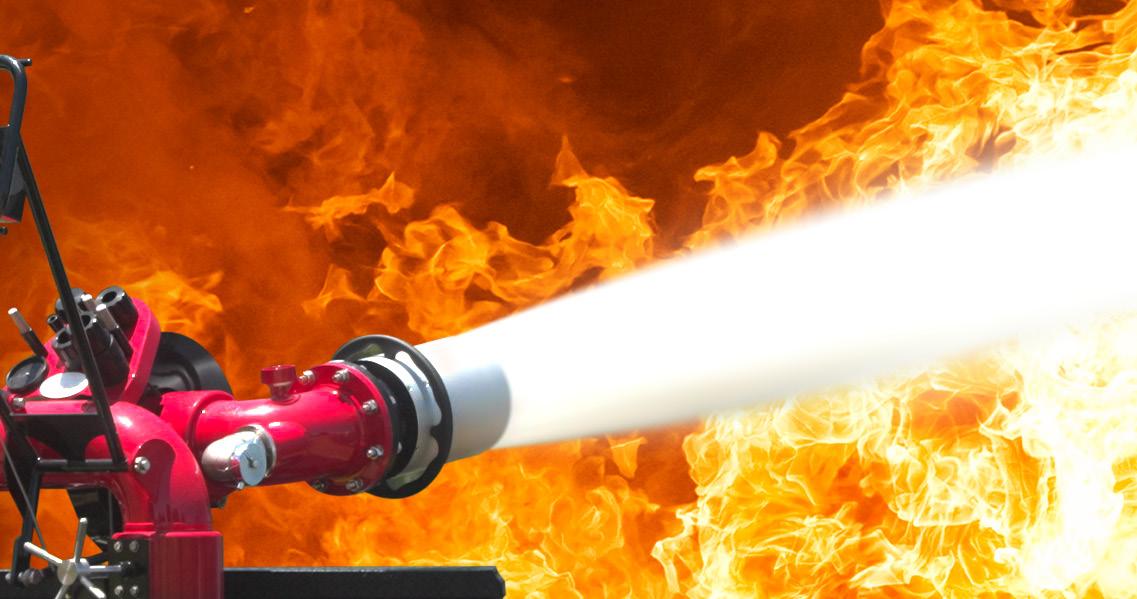
Check out our full portfolio of world-renowned, field-tested, UL listed and EN rated ANSUL fire protection products, all backed by unmatched technical support and customer service.
Learn more about ANSUL NFF foam concentrates
The LASTFIRE Project
by Niall RamsdenThe LASTFIRE Project, the group of international storage tank operators working together to develop best practice guidance in storage tank Fire Hazard Management, has previously shared, with JOIFF members, details of their extensive testing of a range of PFAS free firefighting foams on a number of fuels.
The transition process has certainly raised some issues regarding foam behaviour, foam assurance and what tests have really been done to develop and justify current practices, so it should be seen as an opportunity to try and achieve a firmer foundation for the future on foam application in general. LASTFIRE has been reviewing several aspects of the transition to PFAS free foam as part of an holistic approach to the issue. Some of the work done is described below discussed below
Foam solution application rates.
To date, nothing has suggested that good quality fluorine free foams cannot be used successfully at the standard application rates as specified in guidance such as NFPA 11 or EN13565 Part 2 provided appropriate tactics are adopted.
This conclusion is supported when the application rates of foam solution used prior to the adoption of PFAS containing foams are reviewed. For example, the handbook “Our Industry” issued by BP in the mid-1950s covers the subject of foam application. It states:
“The heat from the flame is capable of destroying at least one-third of a gallon of foam (one-third of a pound of water) per minute per square foot of surface exposed, and until an excess beyond this amount is used no effective floating carpet of foam can be produced. It is usually considered advisable to use at least double this amount where it is available in order to build up the insulating carpet as quickly as possible.”
Once the intricacies of language and converting units such as Imperial gallons
and pounds are overcome, this is stating that an application rate of foam solution below 1.6 lpm/m2 will be destroyed and the minimum recommended for application is 3.2 lpm/ m2.
Just as one point of interest, the expansion rate (the quantity of foam compared to the quantity of foam solution to make it) derived from this BP document works out at approximately 10:1, so in line with a typical aspirating handheld nozzle.
The minimum rate specified in NFPA 11 and EN13565 Part 2 is 4 lpm/m2 , depending on application method, so is very much in-line with those used before PFAS compounds were introduced into foam (in the late 1960s/early 1070s)! So, if these application rates worked in the days of basic protein foam (in fact the handbook even mentions “chemical foam”) then there is no reason why they should not work with modern PFAS free foam.

While on the subject of application rates, one other point that should be clarified, as it has caused some confusion in the past, is that of the ”loss factor” to be applied for monitor attacks on storage tanks when using the NFPA standard. Some have claimed that the recent standards (2021/2024) have increased the recommended rate by 50%, This is not true. All that has happened is that the minimum figure to allow for losses due to wind, thermal updraught etc., has been quantified rather than leaving it up to the end user.
The minimum application rate for a foam pourer system is specified as 4.1 lpm/m2 and that for monitors is 6.5 lpm/m2. The difference between 4.1 lpm/m2 and 6.5 lpm/ m2 for the different application methods is to allow for the more forceful application and hence the potential for foam breakdown and fuel pick up by monitors compared to most pourers. It is not to allow for losses. It has always been the case that these rates are required on the surface of the fire. In the 2016 edition Paragraph 5.2.4.2.1. stated “To determine actual solution flow requirements, consideration shall be given to potential foam losses from wind, and other factors shall be included in the calculations” The associated explanatory Appendix advises “The specified minimum delivery rate for primary protection is based on the assumption that all the foam reaches the area being protected.) Typical industry practices such as LASTFIRE have suggested a factor of 1.6 to allow for losses. NFPA 2021 introduced the minimum factor of 1.5 as guidance whereas previously this had not been quantified.
The 2024 edition has now been published and contains the same factor.
These issues are not because of the introduction of PFAS free foam, they have been there for a long time, but perhaps not so clearly identified as they could have been.
Incidentally, application rates in EN13565 Part 2 are expressed differently and do include an allowance for losses with monitor application within the factors applied to generate the quantity of foam solution to be generated.
Latest LASTFIRE research
The most recent LASTFIRE test work has focussed on application to crude oil fires.
Whilst the previous testing has shown that PFAS free foams can be used with various application types on refined products, concerns have been expressed regarding
crude oil fires where, due to the multifraction nature of the product, a hot zone can build up with significant depth such that most application methods for foam will result in the foam plunging into this hot zone and possibly being destroyed or degraded by it. Thus, crude oil fires are considered to have particular unique features that might be more demanding on foam performance.
With crude oil fires, there is always the ongoing danger of boilovers occurring, so the greater knowledge gained through research can also provide guidance for tactics that reduce risk to responder safety, so the current work is particularly important.
Two phases of work have been carried out using a 2.4m diameter test pans of different heights. Preburns of 30 minutes were applied and thermocouples in the fuel showed the hot zone build up.
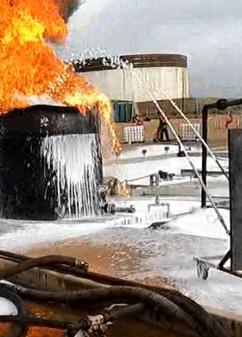
It is recognised that there are many different types of crude oil and so the results apply only to the specific type tested. It is hoped that other crude types will be tested in 2024.
The main conclusions from the tests, based on observations, analysis of results and brainstorming sessions of those present are:
The fluorine free foams successfully extinguished long preburn crude oil fires using a variety of different application techniques at application rates below
(~50%) those specified by NFPA. Based on all the previous LASTFIRE work and the clear extrapolation from small scale testing to large scale, there is no reason to doubt that these results can be taken through to real World events. However, it is recognised that as there are obviously different mechanisms involved in the extinguishment, it would always be useful to carry out further testing to conform extinguishment mechanisms and demonstrate validation through larger scale work.
It appears that in some ways long-preburn crude oil fires are actually easier to manage than standard hydrocarbon fires such as gasoline fires, provided their characteristics are understood. The resulting hot zone product is similar to bitumen/asphalt – and there are recognised techniques related to cooling the surface of the fuel prior to foam application. These tests have shown that foam application can be used to provide this cooling effect.
In general, the same principles that the more gently you apply foam, the more effective it is applies to crude oil fires in the same way as it does with other fuels and bubble structure is important to efficiency.
The hot zone is broken up and cools after a slopover thus aiding foam efficiency. But of course slopovers pose risks to responders.
The tactical response to crude oil fires needs to be more dynamic than with other fuels, recognising that conditions can change rapidly with potential onset of slopovers.
The general policy outlined in the LASTFIRE boilover position paper is correct – it must be assumed that boilovers/slopovers will happen and appropriate safety and response measures should be put in place. (This paper can be obtained from info@lastfire.org)
Those responders providing back up at the tests greatly appreciated and learned from the opportunity to respond to slopovers – thus highlighting the need for such opportunities and “real fires” in regular training.
In the second series of tests some 1% grade foams were tested with similar results. The full report from Phase I of the tests can be obtain ed from info@lastfire.org. Phase 2 report will be available within a few months. The results provide great input to the development of tactical guidance for crude oil tanks that is being prepared by LASTFIRE.
Other work.
PFAS Free foam concentrates tend to be more viscous than previous generation foams although some AFFF AR foams (particularly the earlier formulations) also have this property. LASTFIRE has also been carrying out work related to this issue in order to give guidance on avoiding any potential problems caused by it.
The viscosity of the foam concentrate will have a direct impact on the proportioning of the foam. There are considerable differences from one PFAS free foam to another (See diagram below) and this can have a significant effect on proportioner efficiency.

Some proportioner types work better than others with a more viscous concentrate. Even when the concentrate is proportioned at the correct volumetric rate there can still be problems making sure that a homogenous mix is achieved.
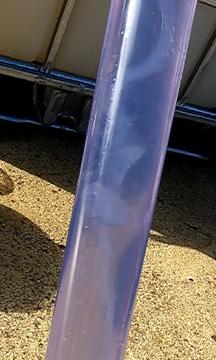
A “string” of unmixed foam concentrate in the water stream observed under some conditions during LASTFIRE research
LASTFIRE testing included assessing the efficiency of different methods including changing flow velocity, in-line static mixers and pipework design to overcome this.
Whatever the system, it is necessary that the complete proportioning system, including proportioner, pipework and tank location, be reviewed in detail to ensure that the system will always deliver a 3% solution within acceptable limits (i.e. 3% to 3.9%) under all design flow conditions.
The work has also confirmed that viscosity of the foam solution can also require assessment. Traditionally foam solution has been treated as water for hydraulic calculations, but LASTFIRE work has shown that this is not appropriate for some PFAS free foams. (See figure) Although the foam solution at 3% is 97% water, it has a viscosity that does not correspond to water and so hydraulic calculations based on
water are unlikely to be correct. This could have a significant effect on pressure drop in systems with consequent changes in foam properties at the nozzle.
Key points from the work include:
Higher concentrate viscosity does not necessarily mean higher solution viscosity.
Inline static mixers improve mixing of solution – but increase pressure drop.
Foam solution homogeneity does improve with distance travelled by the foam solution.
Higher flow rates caused more turbulence and better mixing.
Some improvement was evident when additional bends introduced in pipework.
Some foams mix better than others.
Of course, similar issues were seen with some AFFF-ARs!
LASTFIRE will continue this work taking an holistic approach to the transition to PFAS free foam – the work clearly shows that we should really have been developing a much better understanding of foam behaviour in the past – but now we have that opportunity!
Finally, the LASTFIRE Coordinators have been extensively involved in developing a
transition manual on behalf of the Arctic Council. This is now available at:

https://arctic-council.org/about/working-groups/acap/home/projects/ afff-aqueous-film-forming-foam-and-other-pfas-containing-foamphase-out-in-the-arctic/
At first site, due to its universal application, it might look daunting but once it is reduced to the specific sections for a particular site it becomes a very practical tool. It has already been used at a variety of installations, including airports, port facilities and chemical plants.

This article was presented to you by:
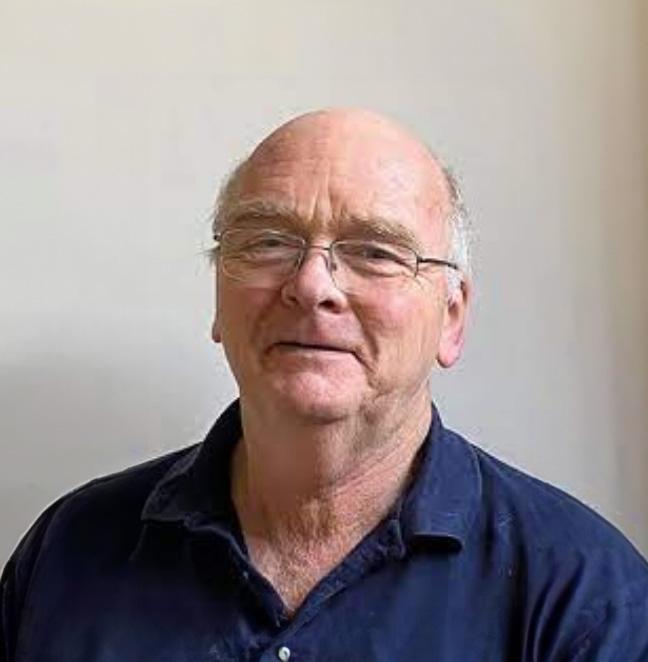
Project Coordinator Lastfire

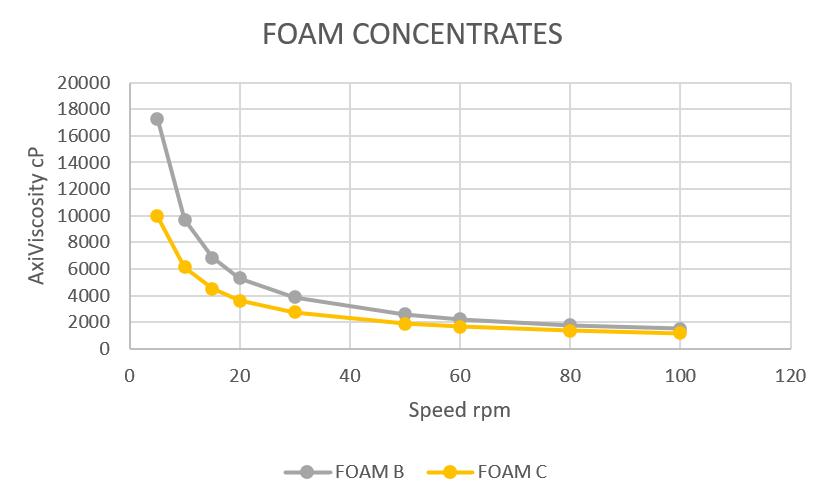
Firefighting with fluorine-free foam

AN APPROACH IN THREE PHASES
by Peter de Roos, Jochem van de Graaff and Raymond BrasGovernments and companies are switching to fluorine-free foam, with many of them already having completed the transition and others poised to do so soon. Eventually, however, there will come a point when the foam will actually be used by everyone. This article outlines a method for working with fluorine-free foam in scenarios managed with mobile equipment.
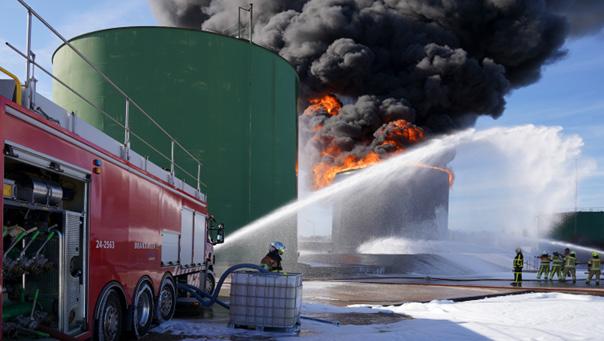
Introduction
H2K and the Gezamenlijke Brandweer (GB), both located in the port and industrial complex in Rotterdam, are collaborating on the foam transition of operational units of the GB. The GB is the company fire brigade for 53 companies and specializes in industrial incident control. In addition, the GB performs public firefighting tasks in its service area. H2K is an education, training, and consultancy company specializing in specific services for high-risk industries. H2K has been asked by the GB to assist in both consultancy and training during the foam transition.
In this transition project, testing and staff training have taken place. During these activities, the following observations have been made:
1. The foam spread of fluorine-free foam is different.
In fluorine-containing foam, PFAS creates a vapor-tight aqueous film layer and allows the foam to flow easily. Fluorine-containing foam is often applied with a low expansion ratio, making it easier for the foam to adhere to hot parts and spread quickly to hard-to-reach places compared to foam with higher expansion ratios. Fluorine-free foam lacks an aqueous film layer and is
often applied with a higher expansion ratio than fluorine-containing foam. This makes the blanket stiffer. It may be more challenging to fully extinguish the fire at the edges and in small harder-to-reach places.
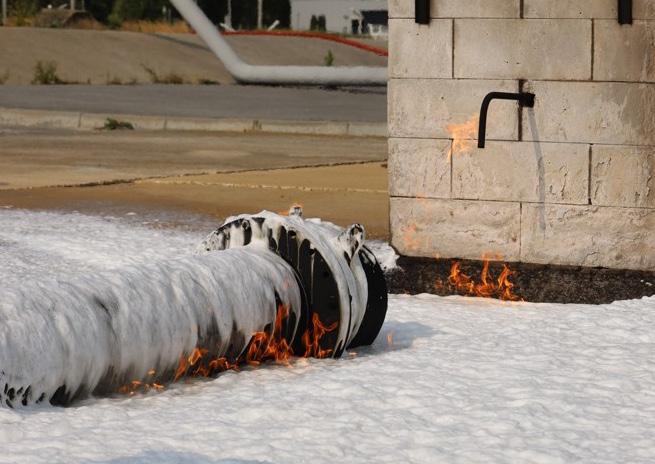
2. Fluorine-free blankets are very stable.
The drainage times of fluorine-free foam blankets are much longer than what was previously observed with fluorinecontaining foam. This can be helpful, for example, in covering flammable and toxic liquids.
3. Some scenarios and fuels are challenging for the foam.
In comparison to fluorine-containing foam, fluorine-free foam presents challenges in terms of effectively covering certain water-soluble products. The performance hinges on the interaction between the foam concentrate and the specific watersoluble substances. The prevailing notion is that testing and experience with fluorinefree foam have significantly enhanced our understanding of its benefits and limitations.
It now seems that the past perception of the effectiveness of extinguishing with fluorine-containing foam may have been overestimated. Nevertheless, the extensive research and testing conducted during this transition necessitate improvements in the quality of foam extinguishing. Knowledge development involving operational units is crucial, thus providing options to adapt operations if they deviate from expectations, particularly concerning the types of fuels used.
4. Firefighters do not recognize good foam sufficiently.
Firefighters must acquire proficiency in recognizing the characteristics of a wellformed foam blanket, as it serves as a safety measure for emergency service providers. References to fluorine-containing foam and training foam do not help in this regard. The structure and behavior of well-formed fluorine-free foam blankets diverge from those of training foam and fluorinecontaining foam. Firefighters require comprehensive training to accurately interpret a fluorine-free foam blanket. This training enables them to effectively oversee the quality of the foam blanket and identify potential problems.
5. Fluorine-free foam works but needs support.
The overall perception is that fluorine-free foam works fine, but it is crucial to optimize its performance. This involves employing appropriate application methods, materials, and techniques tailored to the specific situation. Various fire departments and foam producers also suggest that adjustments
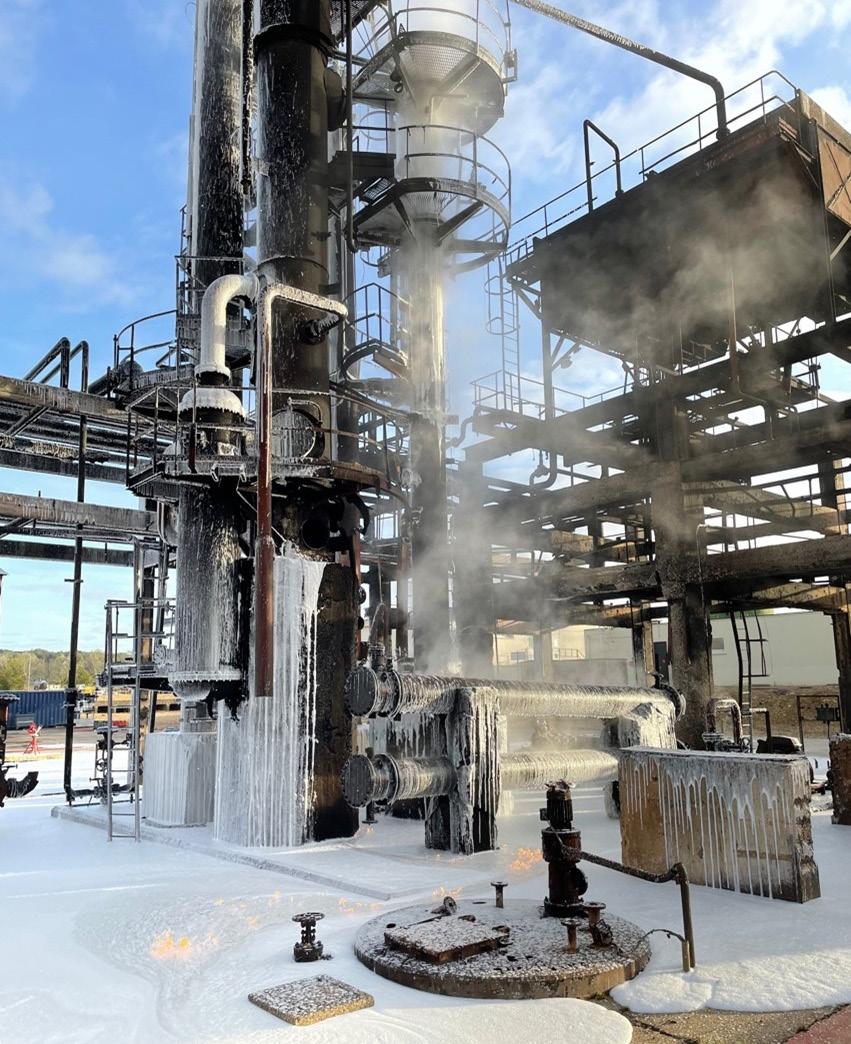
in the application of firefighting foam are necessary to enhance the effectiveness of fluorine-free foam.
Discussion
It can be discussed whether the proposed working method is genuinely innovative and whether the differences with fluorinecontaining foam are indeed significant. However, the common denominator is that working with fluorine-free foam requires precision and attention to all details involved in foam firefighting. In an operational sense, these aspects – insofar as they were observed in the transition – were somewhat overlooked, perhaps under the mistaken assumption that this attention to detail wasn’t necessary due to the forgiving nature of fluorine-containing foam. The renewed focus on the method of foam firefighting, now with fluorine-free foam, is an opportunity to enhance the quality of firefighting. Regardless of whether it is genuinely new, now is the chance to reevaluate and elaborate on standard methods for foam firefighting in detail.
Control and extinguishment
In the case of incidents, the primary concern, following adequate upscaling, is to ensure the safety of emergency responders, victims, and the public, thus preventing further escalation of the situation. For that reason, gaining control over an incident promptly is crucial. While the ultimate goal is to fully extinguish the fire and prevent reignition, the initial focus upon the arrival of the fire brigade is on swiftly gaining control and averting further escalation. Complete extinguishment can be carried out once the situation is under control.
When working with fluorine-free foam, it has been observed that the phases of ‘control’ and 'fully extinguishing' can be distinctly different due to the unique nature of the foam. The somewhat stiffer fluorine-free foam blanket makes it more challenging to immediately extinguish the fire, but it exhibits high resistance to the effects of heat and flames. It has been noticed that fluorine-free blankets perform similarly to fluorine-containing blankets
during the ‘control’ phase.
However, there is a lower likelihood that a fluorine-free blanket will achieve complete extinguishment immediately compared to when fluorine-containing foam is used.

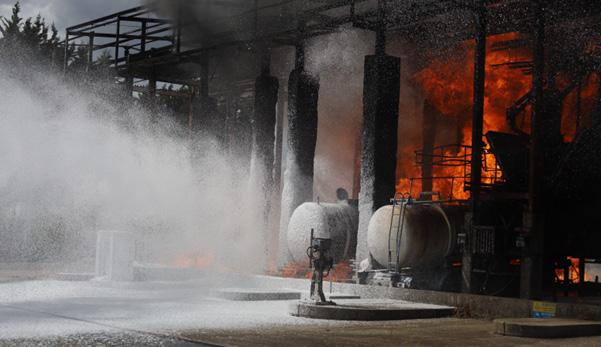
This necessitates a more detailed deployment of resources and a more dynamic approach.
Significance in high-risk industries
In the deployment of firefighting resources in high-risk industries, a naturally defensive strategy is employed. This means that the firefighting approach initially focuses on preventing further escalation of the incident while minimizing risks to emergency responders. A crucial aspect of risk minimization involves the implementation of procedural measures in operating factories and plants, often manifested by isolating pipeline sections or depressurizing threatened components.
A practical consequence of this defensive strategy is that firefighting operations occur at a considerable distance from the incident. From this position, actions such as cooling to prevent the overheating of other installation parts or deploying foam can be executed, the latter being a direct result of the defensive strategy.
If the approach adopts a three-phase structure, the first phase involves
controlling the fire. In a defensive strategy, this is practically executed using equipment with significant throwing distances. This will usually involve monitoring with a high capacity (> 5,000 l/min). The primary objective in this initial phase is to swiftly apply as much extinguishing agent as possible to the fire, minimizing the likelihood of further escalation while ensuring the minimum application rate is maintained.
However, assessing the effectiveness of foam application from a distance is challenging. This necessitates the involvement of "spotters" strategically positioned to observe foam blanket development. The use of drones might enhance observation and safety. Observations from these sources guide remote adjustments to the firefighting strategy and monitor foam performance.
The deployment in the first phase parallels that of fluorine-containing foam. Both start from a safe, defensive position.
Once the fire is under control, typically accounting for around 90% or more, the second phase involves extinguishing.
Following the establishment of control, 'dynamic foam support lines' (DFSL) are employed to fully extinguish any remaining flames. Depending on the scale of the incident, handlines, vehicle monitors (using HRET or from aerial platforms), or large capacity monitors at lower flow rates can be utilized. These streams are directed at specific fire areas, typically between equipment (pump, piping, construction parts) and along edges.
It is imperative for these streams to be dynamically adaptable. Despite the presence of a stable foam blanket, remaining fire pockets may be dispersed across the incident area. The challenge lies in selecting the right and proportionate approach.
The third phase involves maintaining the foam blanket. Due to extended drainage times of fluorine-free foam, less frequent reapplication is necessary in this phase. External conditions like cooling water, rain, wind, hail, or sunshine affect foam quality. Monitoring, through measurements, determines the suppression effectiveness and the need for a new application. Applying foam as effectively as possible during this
phase is essential, considering eventual cleanup. In this final phase, attention may be given to restoring affected parts of the installation.
Stable Situation?
Situations where fuel is present outside the controlled containment in installations cannot be deemed safe. Although the incident is stabilized, changes in conditions can rapidly worsen the situation. Factors like wind shifts, sudden collapses, and fluid flow with electrostatic charges may trigger reignition. The firefighting team remains prepared for renewed intervention during the aftermath, requiring constant monitoring.
A stable situation is only achieved when the 'Loss of Containment' (LOC) is cleared, and no liquids are outside designated installation areas.
Foam deployment challenges
Global incident assessments reveal challenges in deploying foam with mobile equipment. More often than not, foam application fails. Causes include insufficient knowledge of equipment, poor management of foam concentrate, ineffective command and control, and inadequate understanding of foam technology and tactics. Frequent and detailed training in foam deployment,

Peter de Roos
p.deroos@h2k.nl

especially with fluorine-free foam, is essential.
If foam deployment fails, the following checks are recommended:
Scenario check
Consider product properties, such as flame point, vapor pressure and water solubility. Examine conditions during the product release, such as temperature, pressure, and mixing with other substances and relate this to the firefighting effort so far.
Application rate check
Ensure adherence to prescribed application rates, often higher for many water-miscible substances.
Proportioning check
Confirm the correct setting of the foam concentrate proportioning.
Application method
Opt for indirect application or the roll-on method over direct application.
If adjustments are insufficient, consider:
Increasing the application rate: the most effective intervention.
Increasing the proportioning rate

This article was presented to you by:
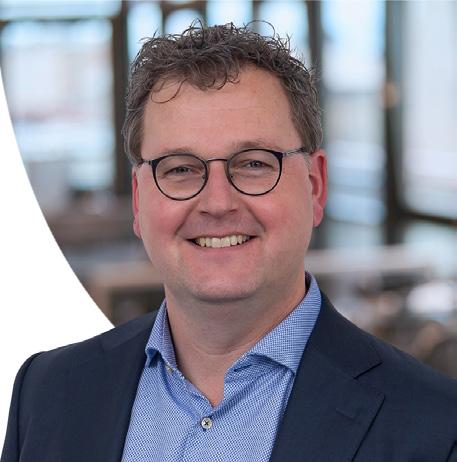
adding more active substances in the foam may enhance foam stability.
Extending application time: accept that prolonged firefighting may be necessary.
Of course, these adjustments require more foam concentrate. Adequate pre-incident planning should identify the quantities needed.
In Conclusion
Fluorine-free foam possesses unique characteristics, requiring a phased approach aligned with industry standards. The emphasis is on controlling the fire in the initial phase, followed by the use of dynamic foam support lines to extinguish the fire totally. In the event of potential foam deployment failure, a critical evaluation of operational alignment with on-site conditions is necessary. This analysis demands knowledge and expertise from emergency responders regarding foam technology and foam tactics.
The successful deployment of fluorinefree foam depends on well-applied and well-thought-out tactics, executed with technical precision. The proposed framework in this article aims to address these considerations.

r.bras@gez-brandweer.nl


FireMiks water-driven volumetric pump

A MOBILE PROPORTIONER CREATING A HANDY & FLEXIBLE RESOURCE FOR THE FIRE BRIGADES
by Per Aredal
One FIREMIKS may supply several nozzles handled independently.
A mobile proportioner creating a handy and flexible resource for the Fire brigades
With a water-driven volumetric pump proportioner, fire fighters can easily build a robust multi-nozzle system, easy to adapt to different firefighting situations.
This means that one can use several nozzles at the same time independently of each other, quickly open and close them intermittently (pulsing), and place the nozzles at different distances
and heights from the water driven volumetric proportioner. The proportioner itself can also be placed anywhere in between the main pump/hydrant and nozzles. As long as water is moving, above the minimum flow specified for each proportioner, the concentrate is accurately proportioned into the firefighting water stream.
A water-driven volumetric pump proportioner, like FIREMIKS, has substantially lower pressure losses compared with inductors, resulting in a far longer jet throw length of the foam/
water solution, enhancing the safe distance from the fire for the personnel, concentrate supply and the apparatus. Especially important at high-risk incidents.
FIREMIKS proportioner works with all nozzle types, for example variable spray nozzles, low expansion and medium expansion nozzles, the nozzle type doesn’t affect the dosing accuracy. All FIREMIKS mobile models are equipped with separate strainer to be placed on water motor inlet to ensure that only clean water is entering the water motor.
Wide range of proportioning options.
A water driven pump proportioner equipped with piston pump has normally 1% and 3% as standard factory fixed dosing rate. Other fixed dosing rates, as for example 0,5% and 2% are available as well as selectable dosing rates, such as 0,3-0,6-1% and 1-23% in one unit.
We can also offer in our FIREMIKS mobile proportioner program units with user selectable 0,5-1-3%, available in two flow sizes 600 and 1000 lpm. 600-0,5-1-3PP-M and 1000-0,5-1-3-PP-M. FIREMIKS is the only brand in the market that offers the dosing selection 0,5-1-3% using only one foam pump. This design gives a compact unit with easy understanding of the function. Selection of dosing rate is done with easy to use shut-of-valves at the piston pump head. Changing dosing rate is possible without stopping the fire fighting water flow.
High-pressure mobile unit
Our latest addition to the mobile program is a small handy high-pressure unit, FIREMIKS 200-0,3-0,6-0,9-PP-M-HP, for 50-200 lpm and 0,3, 0,6 and 0,9% dosing rate, suitable for working pressures up to 30 bar. Very powerful for forest fire fighting where it is essential to minimize both water flow and concentrate consumption.
Suitable for the new Fluor-free SFFF concentrates.
FIREMIKS is uniquely positioned by being able to offer two types of pumps: Piston pump models for viscosities from 1 cP (including wetting agents) up to around 4500 cP and Gear pump models for viscosities up to around 8000 cP (Brookfield viscometer spindle 4# at 30 rpm).
Wide range of different flow sizes
From the smallest unit with max flow of 180 lpm, to units with max flow of 2400 lpm, FIREMIKS offer eight different flow sizes for mobile applications. The units are equipped with handle and bottom bracket or with a sturdy surrounding frame, and if requested, supplied with lockable wheels.
FIREMKS proportioners gives a precise dosing rate within the approved tolerances by EN, NFPA, FM, etc., in a wide pressure and flow range.
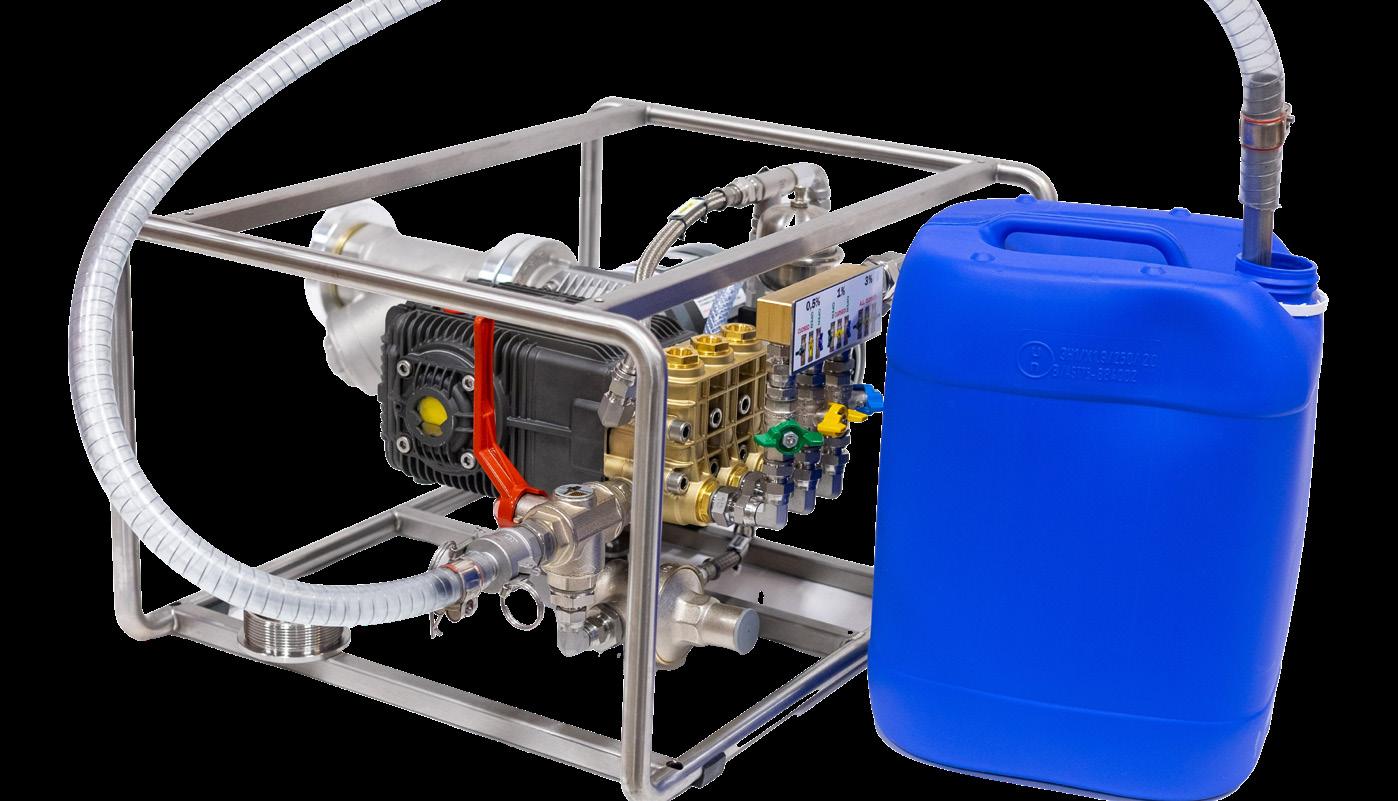
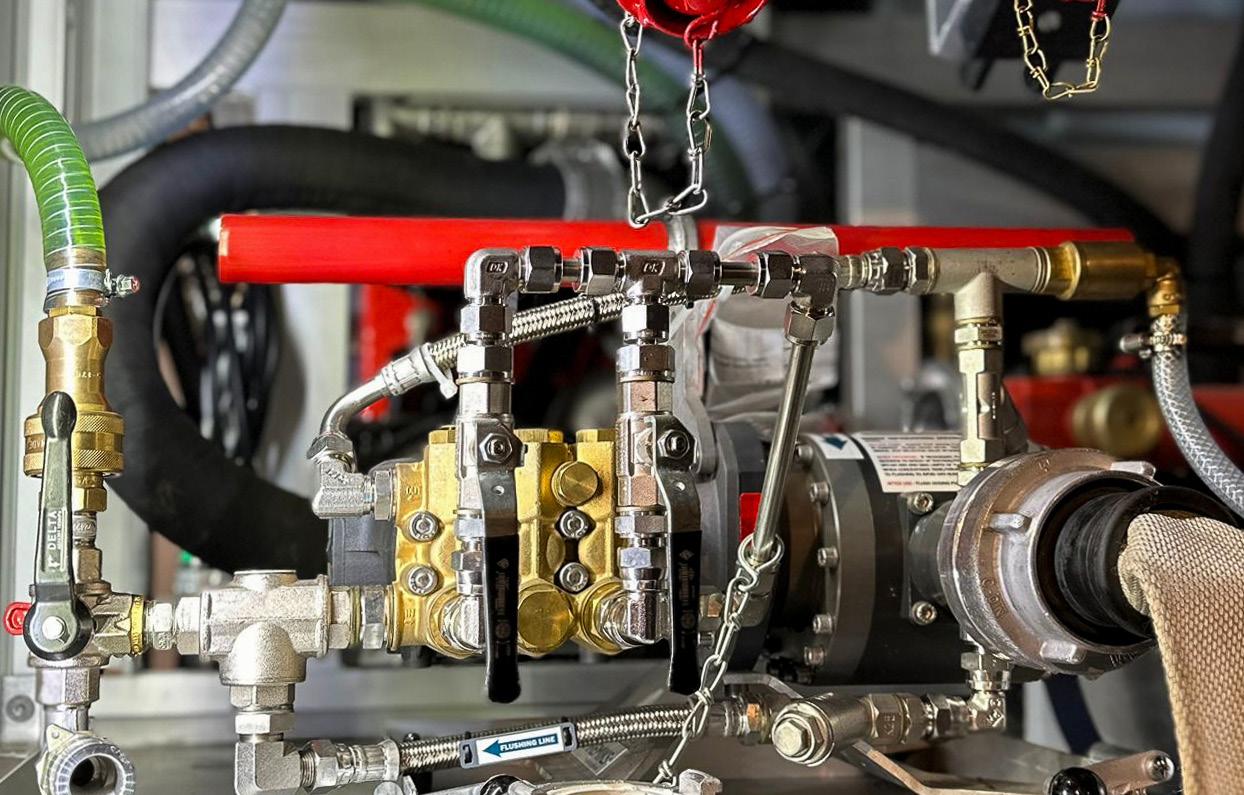
Installation on Fire trucks or trailers
Any water driven proportioner can easily be installed fixed or semi-fixed in Fire trucks or trailers, connected to a larger foam supply. The main advantage in comparison with Around-the Pumps venturi systems is the wider operating pressure range, and that one avoids contaminating the water pump with foam concentrate. The main advantage in comparison with electronic systems is the simplicity and that it is not dependent on any electric energy source, making it possible to disconnect the unit, if installed semi-fixed, to be used as a mobile unit when required. Another advantage is that, since the rpm of the unit follows the flow rate, dosing is immediately correct even if nozzles are quickly opened and closed (pulsing).

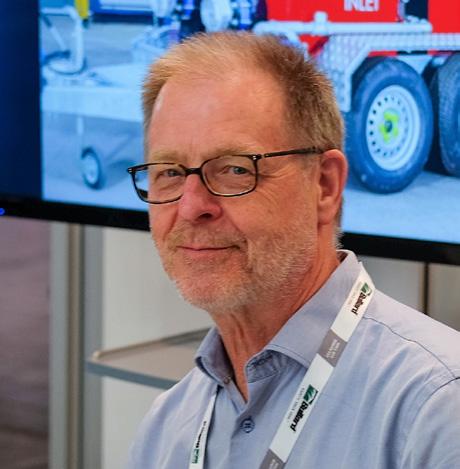
International Sales Director at Firemiks AB with +30 years of experience of producing and delivering water driven volumetric proportioners world-wide.
Per Aredal per.aredal@firemiks.com This article was presented to you by:


What firefighting lessons could we learn from Japan’s A350 crash on 2 Jan. 2024?
by Mike WillsonAviation firefighting is becoming increasingly complex with more larger aircraft, increasing passenger capacities, bigger fuel loads, new composite materials, yet potentially weakening fire test standards like the new F3 MilSpec1 closer to ICAO Level B², potentially exposing passenger safety to greater threat scenarios.
All this at a time when globally we are experiencing increasingly frequent near-miss incidents, runway incursions³ and globally hotter summer temperatures4-6,25. Could new findings and lessons learnt from Japan’s Airbus A350 crash and major fire on 2nd January 20247-15 highlight extra cautions? Might it re-inforce the need for overhauling fire test standards and firefighter training to provide increased safety and help avert future tragedies?
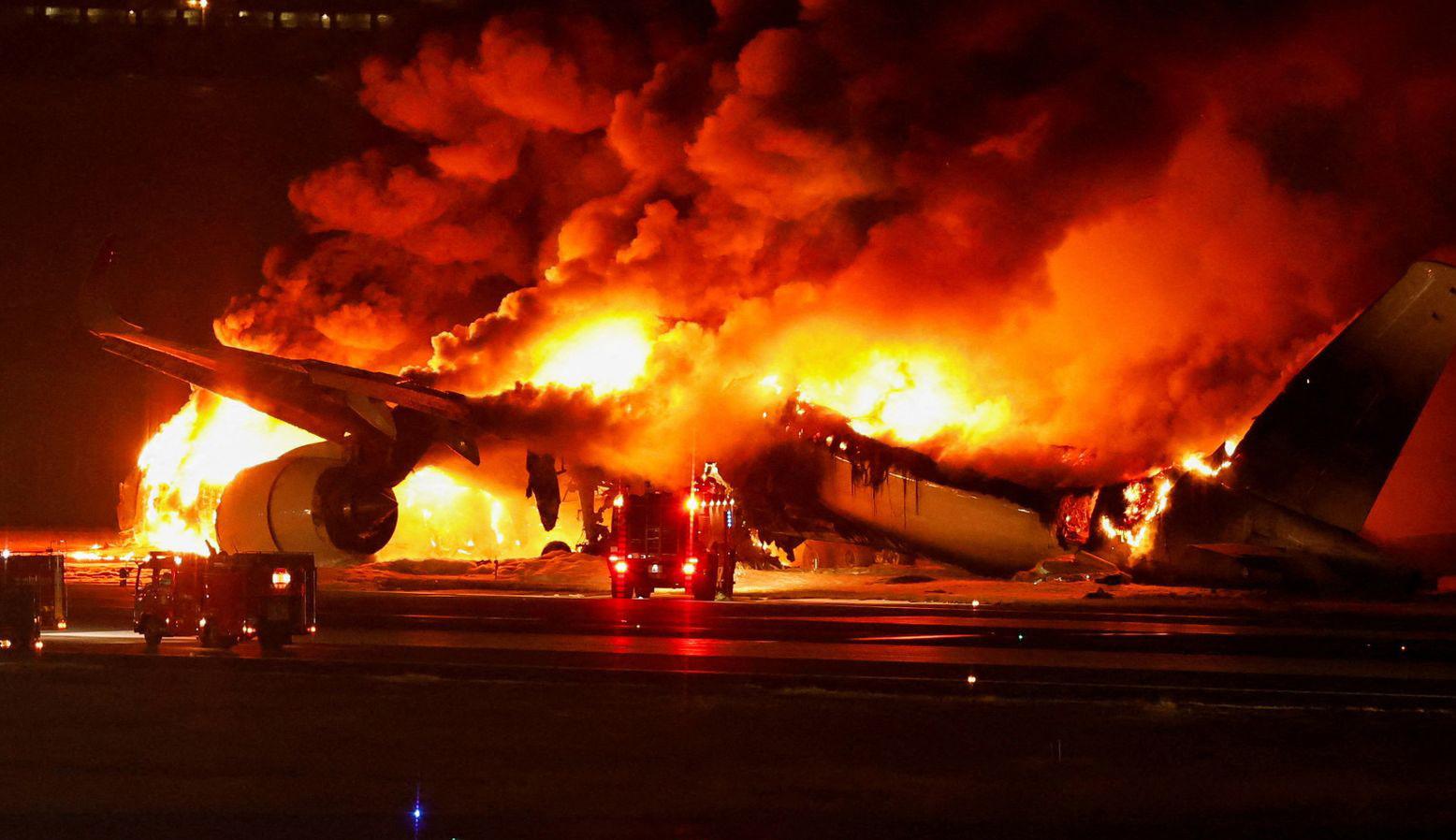
‘Miraculous’ quick evacuation saved lives
The loss of 5 precious lives on the Coastguard Dash-8 is a grave tragedy7-14, but the reported ‘miraculous’ evacuation of all 379 passengers and crew from this A350 crash7-14 and ferocious fire at Tokyo’s Haneda airport11,13-15 has astonished many, preventing it from becoming a major catastrophic disaster.
What worked well? …but what lessons can we learn to increase future safety?
Modern planes are designed so that a full passenger load (up to 440 for A350) can be evacuated within 90 seconds at night, with only half of the exits usable12,15. The efficacy of these 90-second evacuation tests is being questioned by some experts, because “they often bore little resemblance to real-life accidents”11. Speedy evacuation
is critical and most would agree it saved lives in Tokyo. Full evacuation was only possible from three front exits7,8, reportedly taking 5 minutes8,13. Reuters reported “no-one leaving the plane appeared to be carrying handluggage-safetyagencieshavewarned for years that pausing to collect carry-on bags during an evacuation risks lives 10.” Might simply locking overhead lockers before take-off be an appropriate future consideration to increase evacuation speed and save lives?
Why did Tokyo’s A350 fire keep burning?
Composite experts are already asking "The fire brigades of the airports actually have to look at why couldn't they stop the fire"14 The official Investigation and analysis could and should provide important answers, for Aviation firefighters and design engineers to improve future passenger safety, but that could be months away. The Financial Times11 confirmed “The JAL A350 is the first hull loss of a composite airliner and the first by fire, …Investigators will learn all kinds of lessons from the A350 accident.” Surely everyone’s key objective is to find out more, increase survivability and save more lives.
Research by US FAA (Federal Aviation Administration) in 201222 found composite material smouldering was difficult to extinguish, exacerbating problems of unpredictable, sudden and sustained re-ignition during survivor evacuations. Especially if delayed by parents with frightened children, injured individuals, elderly, disabled, or baggage grabs from overhead lockers, each potentially causing evacuation delays that may place more lives at risk.
Perhaps not so surprisingly this Tokyo A350 fire was reportedly slow to extinguish taking more than 6 hours10,14 although the whole fuselage became fully involved and burned away to cinders14. Reportedly leaving “…the severelydamagedA350’swingsastheonly identifiable pieces remaining of the plane’s charred and broken fuselage15.”
Lessons learned by US Navy firefighters17 confirmed “One of the specific threats of carbon fibers exposed to fire and/or heat is Methyl Ethyl Ketone Peroxide (MEKP), a liquid catalyst which is used to accelerate fiberglass curing. It can cause permanent blindness from a single, small dose.” Safety Data Sheets18 confirm MEKP, is a flammable liquid, presents corrosive risks to skin and respiratory systems, so adequate personal protective equipment (PPE) and selfcontained breathing apparatus (SCBA) is essential throughout the incident, including clean-up. MEKP is also a polar solvent fuel requiring Alcohol Resistant (AR) foams for fast, effective, reliable extinguishment. Regular aviation foams, whether Fluorine
Free Foams (F3s) or AFFFs, are substantially attacked by MEKP, significantly reducing effectiveness. Might this help explain the long extinguishment delay in this A350 fire and other composite fires? Might this mean AR foams could be necessary for aviation fires in future? Perhaps combatting these additional hazards and ensuring fires are rapidly controlled and quickly extinguished - as experienced historically?
NFPA 403 recommends 7.5L/min/m2 (0.18gpm/ft2) application rate for ICAO Level B
NFPA 403:2018 (Annex B.6)26 explains “There has been limited full-scale testing of ICAO C foams, but tests to date have reflected extinguishments on Jet A within 1 minute at ICAO application rates of 0.992 gpm/ft2 (3.75L/min/m2). The 0.13gpm/ ft2 (5.5L/min/m2) application rate requirement for AFFF meeting MilSpec in NFPA 403 is 40% higher.”
AFFF MilSpec24 uses a 330% safety factor on its fire test application rate to cover unexpected challenges when fire strikes, to keep people safe. Could this very low 40% Level C safety factor be effective? …even during hot summers? Might Level B’s safety factor with 1 minute Jet A extinguishment be even lower? Is passenger safety being eroded?
material use across many sectors but especially aviation. Airbus’ A350 has 53% composite materials, closely followed by Boeing 787 using 50% composites with around 25% on Airbus’ A38014,16,19, all driven by the need to save weight, reduce fuel consumption and maintenance, resist corrosion and ensure flying becomes more efficient, without compromising on safety7,20 .
NFPA 403 recommends increasing Level B ARFF application rates above the 5.5L/min/ m2 widely used by major airports currently. Annex B.626 continues “Airports adopting ICAO foam concentrates should evaluate equipment requirements any time a switch to a new manufacturer of foam concentrates is considered. Therefore, starting with 2018 edition of NFPA 403, the following application rates by test standard are used: Mil-F 24385 and ICAO Level C = 0.13gpm/ft2 or 5.5L/min/m2
ICAO Level B = 0.18gpm/ft2 or 7.5L/ min/m2
ICAO Level A = 0.20gpm/ft2 or 8.2L/ min/m2”
Presumably this recommended higher Level B rate also applies to the new F3 MilSpec1 using Level B equivalent fire test density?
Increasing use of Composite materials
There has been a surge in composite
US Defence System Information Analysis Center’s (DSAIC)20 2019 review of fiberreinforced Polymer (FRP) Composites confirms wide-ranging materials are used with varying flammability. Generally “The higher the heat release rate (HRR) of the material the higher the fire hazard for that material”. Flame-retardant polymers and ceramic fiber blankets and wraps can provide additional fire protection for composite materials. “Some highperformance polymers for FRPs can have therightchemistrysuchthattheirheatand smoke release and toxic gas emissions are quitelowinafireduetohowthepolymerin the FRP chars (converts to thermally stable carbon)ratherthanburns.Whilethesehighperformancepolymersarepreferredforfire protection, their higher costs limit their use to extreme applications such as engine compartments, mission critical hardware, submarines,andspacecraft.” Shouldn’t this be extended to passenger aircraft as they are also ‘mission critical’?
Composite fires harder to extinguish
DSAIC20 confirmed the complexity of this problem when in Guam (2008), quite a small aircraft “A B-2 [stealth] bomber (mostly all composite) crashed onto the runway shortly after takeoff, resulting in a large fire and complete loss of the $1.4B aircraft. Since the aircraft was recently fueled, the tank likely exacerbated the fire upon crashing.” A 2009 FAA composite firefighting presentation19 confirmed this B2 bomber fire took 6 hours to extinguish. It required 83,000gals (314,155 litres) water and 2,500gals (9,463 litres) AFFF concentrate to achieve total extinguishment by which time the plane was destroyed. How much foam and water was required during Tokyo’s A350 fire? …which also reportedly burned for more than 6 hours10,14, requiring multi vehicle responses7,14, for a much larger
aircraft full involvement fire. Data from this A350 fire should help verify previous small-scale fire test findings or justify modifications, so future fire test standards include composite materials as well as aviation fuel, to better reflect realities we can expect to face in such future incidents.
DSAIC20 identified two composite ship fires, both resulting in complete loss. “One burnedfor24hoursatseabeforecapsizing, breaking apart and then sinking. …The fires were so intense that on-board firefighting measures were not enough to overcome them”. The other vessel caught fire while docked during fit-out for sea trials but the fire protection system had not yet been installed. The cause was an electrical short but the fire was large and intense, overcoming the fire protection measures available, so the entire ship was lost.
Composites bring benefits and hazards
Extensive small scale fire testing has shown composite materials are strong and resist fire longer than conventional aluminium skinned aircraft19. US Federal Aviation Administration (FAA) 2020 Strategies for Aircraft Rescue and FireFighting (ARFF)16 confirms “The components of advanced composite materials are all affected by fire. Resins and epoxy will burn, particularly in the presence of an aviation fuel fire. Whereas aluminum will melt at 1220°F
(660°C), generally composites will burn between 572°F (300°C) and 932°F (500°C) but will maintain their structural integrity during burning. Resins will ignite at 400°–600°F (204°–315°C). Products of composite combustion will contribute to the toxicity of the smoke plume. Carbon fibers combust at 1000°F (538°C) and burn with a glowing red color at 1400°F (760°C). Kevlar® fibers combust at 800°–900°F (427°–482°C). Glass fibers do not support combustion, but they will melt and possibly form glass beads. … Pooled fuel firesshouldbecontrolledfirst,thenburning composites. Smoldering composites tend to reflash if not sufficiently cooled. Full PPE, including SCBA, is required for extinguishing composite material fires or if composite fibers are airborne.”
Europe’s 2014 Cordis ‘AircraftFire’ Project21 evaluated fire risk assessments to increase passenger survivability. Key findings included:
Without post-crash fuselage rupture, the composite fuselage offers a much better fire protection regarding penetration and better evacuation environment than the conventional aluminium fuselage.
Post-crash fuselage ruptures during the impact may result in a flashover within the cabin, severely reducing survivability.
When assessing the impact of fire on passenger survivability, it is essential to perform combined fire and evacuation
analysis.”
‘AircraftFire’21 also found composite burnthough times reached 15 minutes (well beyond current 5 minutes burn-through requirements) so “Composites are an efficient fire barrier, but:
Theresinwarmingdestroysthecohesion between carbon fibres, which changes the mechanical properties of the composite. A mechanical stress can break the fibres as soon as the first layers of fibres are decorrelated;
Thefastheatpenetrationinthecomposite induces an off-gassing of pyrolysis products, potentially toxic (intoxication of theoccupants)andflammable(gasignition) withapotentialfirepropagationinthecabin after few tens of seconds. … potentially having a fatal effect on passengers and crew survivability.”
Also, “an excess of fuel from the pyrolysis of the [composites] fuselage skin, and this situationinducesanincreaseinthe[ignited] thermalplumevolume.” …increasing danger potentially for firefighters and evacuating passengers outside the aircraft, until all fire is rapidly extinguished with re-involvement prevented.
Do hotter summers and rising fire intensity warrant an overhaul of fire test standards?
Composite fires are proving more intense and generally harder to control and
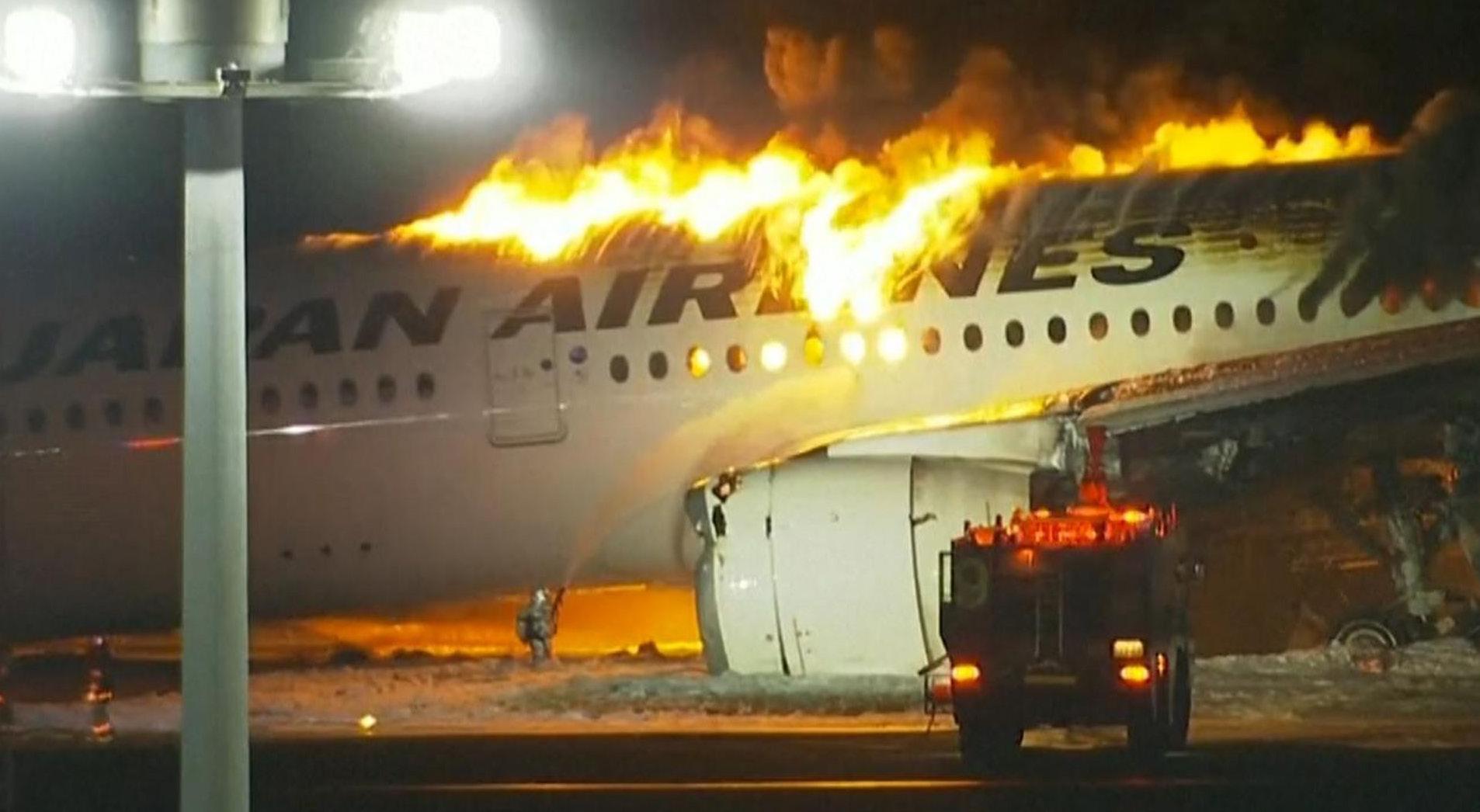
extinguish than conventional materials. Might this require a review and potential overhaul of new and existing fire test standards like MilSpec24, particularly the new F3 freshwater version1, and the single ICAO Level B or C fire test2 conducted at 15oC with unrepresentative test nozzles, to achieve certification? How does this provide necessary assurances that passengers are adequately protected under increasingly severe incident conditions? Particularly when we are experiencing hotter summer temperatures almost everywhere4-6,25 . A year ago the New York Times6 announced “The last 8 years were the hottest on record”, now we have a 9th, the hottest yet. Europe’s Weather forecasting Centre4 reports Copernicus data verifies 2023 as the warmest year in global temperature records going back to 1850. … Global temperaturesin2023were1.48°Cwarmer than the 1850–1900 pre-industrial level.”, a whisker away from the Paris agreement. Worryingly it also confirmed “The year also saw the hottest month on record, and daily global temperatures briefly surpassed pre-industrial levels by more than 2°C4.” Are critical ‘trigger points’ already being exceeded?
Aircraft take-off and landing performance decreases as temperatures rise Already elevated temperatures show decreased aircraft take-off performance. 2023 research23 found “It is urgent and crucial to understand the effects of increasing temperature on the complicated and comprehensive performances of aircraft. As air warms, it becomes less dense. Low-density air conditions further lead to reduced lifts for aircrafts, which significantly influences the maximum take-off weight (MTOW) of an aircraft. The warming air leads to the MTOW reducing and take-off distance increasing.”
It is also found that “the take-off distance does not change linearly with temperature but shows a stronger increase with higher temperature23.” Extended take-off distances and reduced aircraft manoeuvrability during landing, increase risk of over-runs and unexpected accidents under such challenging conditions.
It’s forecast to become hotter more frequently, bringing significant changes for ensuring continued passenger safety. UK’s Met Office25 forecasts 2024 could be “…the first year in which average global surface
temperature is more than 1.5oC above that of the pre-industrial period”. Adverse heat stress, potential loss of life and environmental impacts that may result from hotter fuel spills with increased flammability above 38oC (Jet A1 flashpoint), composite fuselages, increased toxicity and flammability of smoke in cabins, reinvolvement from smouldering composites, excessive firewater runoff, extended foam use (even if non-fluorinated), plus disruption and danger to other aircraft, passengers, flight crews and firefighters, should not be under-estimated in future major aircraft fire incidents, even if rarely occurring.
Let's hope new evidence can be gleaned from this Tokyo A350 fire to help make us all safer as we travel in future.
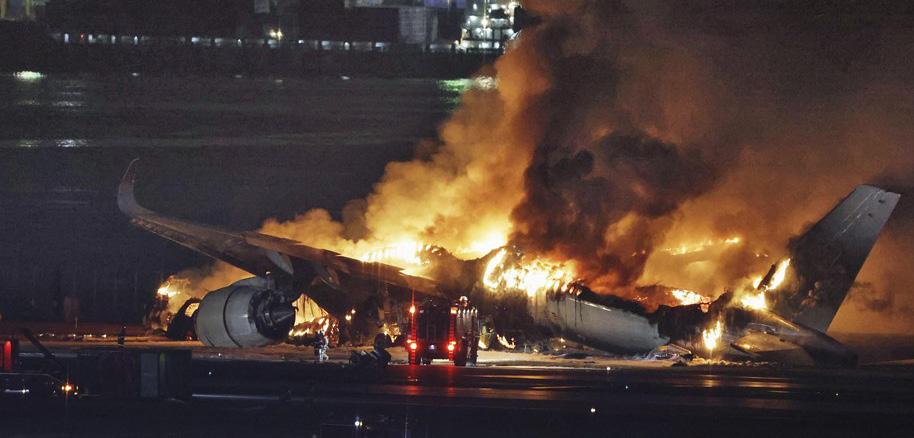

This article was presented to you by:

Director at Willson Consulting
1.US Military Specification MIL-PRF-32725, 2023 – Performance Specification, Fire Extinguishing Agent – Fluorine Free Foam (F3) Liquid Concentrate for Land-Based, Freshwater applications, 6Jan.2023 l 2.ICAO (international Civil Aviation Organization), 2015 – Airport Service Manual Doc 9137- AN/898 Part 1, Rescue and Fire Fighting 4th Edition , relevant Chapters 8 , 10,12, l 3.Simple Flying 24 Dec.2023 – FAA Identifies 19 Near miss incidents in 2023: The most in 7 years l 4.European Centre for Medium Weather Forecasts (ECMWF) 9Jan.2024 – 2023 was hottest year on record, Copernicus data show l 5.The Guardian, 19Jul.2022 – UK reaches hottest ever temperature as 40.2oC recorded at Heathrow [London airport] l 6.New York Times, 10Jan.2023 – The last 8 years were the hottest on record l 7.The Guardian, 3Jan.2024 – ‘Miracle’ escape for passengers after horrific runway crash at Tokyo airport l 8.BBC News ,3Jan.2024 – Japan jet crash: Passengers describe chaos inside flight 516 l 9.ABC News, 3Jan.2024 – What caused the Japan Airlines plane collision and how passengers were evacuated safely l 10.Reuters, 3Jan.2024 – Five dead after JAL airliner crashes into quake aid plane art Tokyo airport l 11.Financial Times, 4Jan.2024 – Japan Airlines fire to give insights into latest manufacturing materials l 12.ABC News 4Jan.2024 – Tokyo Air Traffic Control transcript suggests only one plane had permission to be on the runway before deadly Japan Airlines collision l 13.The Independent, 4Jan.2024 – Japan Airlines passengers and crew praised for ‘textbook’ evacuation of burning plane l 14.Japan Today, 5Jan.2024 – Japan crash marks test of how new carbon jets cope in disaster l 15.The Independent, 7Jan.2024 – Japan Airlines Crash: How the Airbus’ new fireproofing helped all 379 passengers survive l 16.US Federal Aviation Administration (FAA), Sep.2020 – TC20/19 Aircraft Rescue and Firefighting Strategies and Tactical considerations for New Larger Aircraft: Update l 17.US Naval Safety Center, 2019 – Lesson Learned: Firefighting – Hazards of Aircraft Composite Materials 19-04 l 18.Sigma-Aldrich, 2022 –Safety Data Sheet Methyl Ethyl ketone Peroxide l 19.US FAA, Jun.2009 – Composite Material Fire Fighting l 20.US Defence Systems Information Analysis Center (DSAIC), Nov.2019 – Fire risks with Fiber-Reinforced Polymer (FRP) composites l 21.European Commission (EC) Cordis Sep.2014 – Fire risks assessment and increase of passenger survivability AIRCRAFTFIRE Report ID:265612 l 22.FAA (Scheffey,Darwin and Hunt), 2012 – Methodologies for Calculating Firefighting Agent Quantities Needed to Combat Aircraft Crash Fires Report DOT/FAA/A11/29 l 23.Wang K, Peng X, et al, Jan.2023 – Decreased Aircraft Take-off Performance Under Global Warming l 24.US Military Specification MiL-PRF-24385F(SH) Amendment 4, 2020 – Fire Extinguishing Agent, Aqueous Film Forming Foam (AFFF) Liquid Concentrate, for fresh and Seawater, 7April 2020 l 25.New Scientist, 8Dec.2023 – World predicted to break 1.5oC warming limit for first time in 2024 l 26.NFPA 403:2018 Standard for Aircraft Rescue and Firefighting Services at Airports - Image source: Sky news
PFAS foam transition
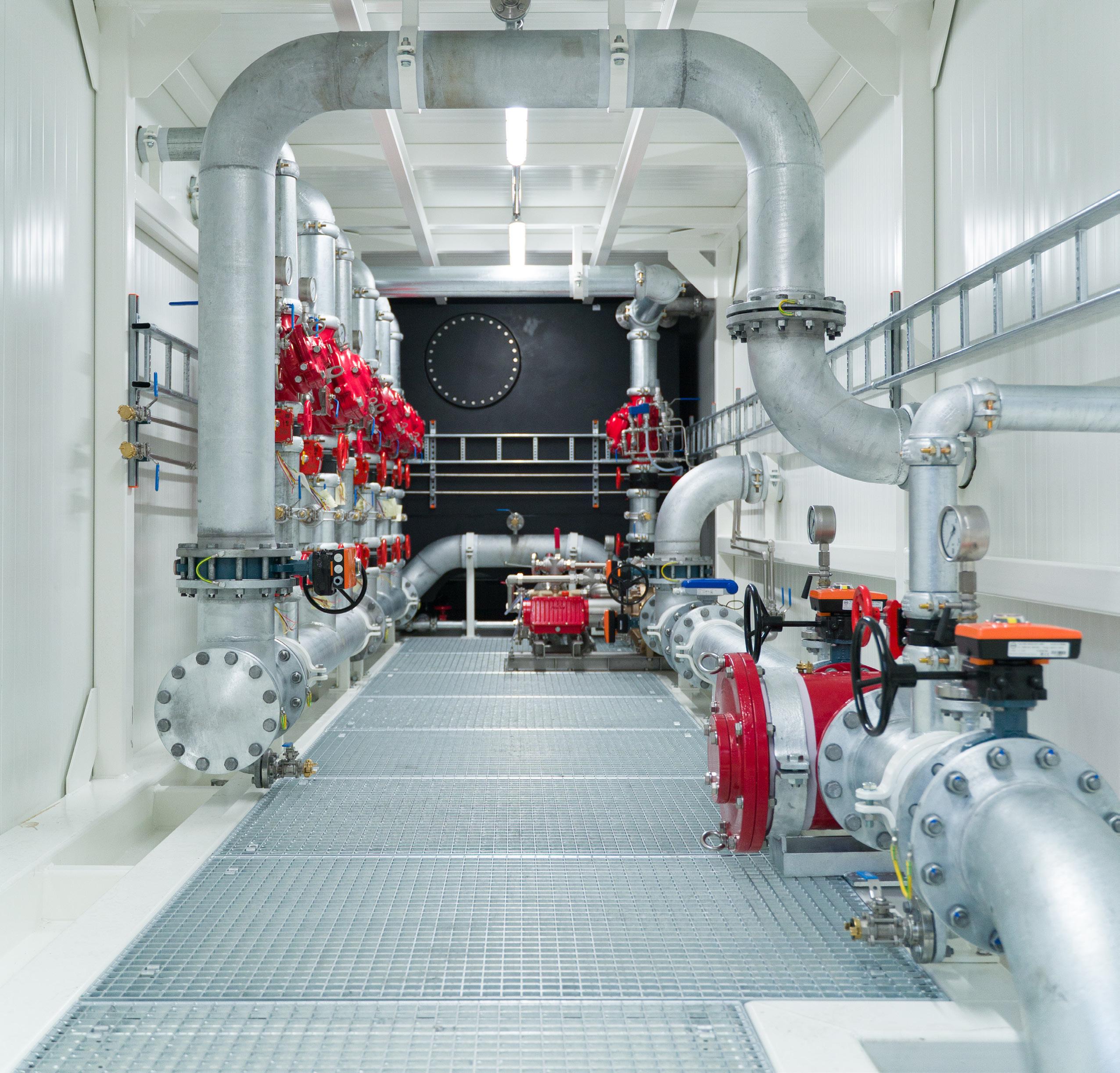
Kenbri Fire Fighting is your full service provider for PFAS Cleaning & Treatment solutions.
We combine our advisory services with extensive technical knowledge. Through our strong partnerships we can assist you from A to Z in the transition to fluorine free firefighting foam.
• Advice
• Cleaning solutions
• Fluorine free firefighting foam
• Technical engineering
• Service & maintenance

The clock is ticking for the firefighting foam transition
by Hans HuizingaIn 2021, the European Commission issued an important statement with the aim of reducing all emissions of hazardous substances into water and soil to levels that no longer harm human health and the environment by 2050. This ban also extends to the use of PFAS, a substance used in fluorinated fire-fighting foams and many other products.
Developing PFAS-free firefighting foam.
In response to this statement, the manufacturers and users of firefighting foam concentrates have conducted extensive research in recent years to develop PFAS-free firefighting foams, also known as SFFF or 3F. The
results speak for themselves, with five manufacturers having brought to market "valid" alternatives to fluorinated firefighting foam. In fact, several PFASfree firefighting foams have been shown to outperform alternatives containing PFAS. This good news has prompted more and more organisations to consider making the safe switch
to fluorine-free foam.
However, while it appears that the European Commission has set a realistic time frame for this transition, the opposite is true.restrictions that directly affect the raw materials needed for PFAS. This good news has prompted more and more organisations

to consider making the safe switch to fluorine-free foam. However, while it appears that the European Commission has set a realistic time frame for this transition, the opposite is true.
Market developments demand faster action.
Changes in the market for firefighting foam concentrate are forcing manufacturers to act quickly, fuelled by various factors. Producers face new regulations and import restrictions that directly affect the raw materials needed for PFAS. This will have widespread consequences that will be felt beyond the firefighting sector alone, with the medical industry, for instance, set to face significant challenges. In the firefighting sector, various manufacturers have already announced their intention to stop supplying firefighting foams containing PFAS by 2024.
Consequently, organisations using these foams will have to realise that they may be unable to replenish their current stock of foam concentrate in the near future. Moreover, more and more producers are feeling the pressures of public opinion and are facing the spectre of legal action due to environmental damage and health risks.
While organisations may think they still have plenty of time to switch from fluorinated to fluorine-free firefighting foam, practical experience has taught us that they will need to act quickly. Organisations looking to make the switch, however, face many questions, such as how to get started, how much time it will take, and what to do with their residual firefighting foam contain PFAS.
Launching Management of Change.
The first step is to launch a Management of Change process, which will provide guidance, structure and clarity for
companies looking to safely make the switch to fluorine-free firefighting. This process begins with a thorough analysis of the current firefighting foam system or vehicle, after which the existing fire companies looking to safely make the switch to fluorine-free firefighting. This process begins with a thorough analysis of the current firefighting foam system or vehicle, after which the existing fire scenarios are reviewed in order to assess whether the current system can safely be used in combination with PFAS-free foam.
After the analysis phase, the type of PFAS-free firefighting foam best suited to the organisation's fire scenarios can be determined and any necessary technical modifications to the firefighting system are identified.
Foam transitions are complicated: you cannot simply switch from A to B.
After these phases have been completed, the extinguishing systems are cleaned and/or modified. It is very important to note that firefighting foam transitions are complicated: you cannot simply replace your current foam concentrate containing PFAS with a PFAS-free alternative, as the new foam concentrate can be contaminated by residual PFAS.
For the transition to be safe, organisations must go through a highly detailed cleaning and sampling procedure and dispose of any contaminated flushing agents in an environmentally friendly manner.
Once your extinguishing foam system has been modified, the entire process must be validated as part of Management of Change'.
An audit must show that all phases were carried out correctly, and extinguishing tests are needed to verify that the firefighting foam system works as expected

and that the fluorinated foam is mixed at the right ratio.
Do not jeopardise your licence to operate.
Organisations urgently need to get the ball rolling on the transition to PFAS-free firefighting foam.
Make sure that your “licence to operate” is not jeopardised due to a lack of suitable firefighting foam concentrate.
Take action now and seek expert advice from specialists like Kenbri Fire Fighting to safely navigate this impactful process.
For more information about KENBRI's 'FOAM TRANSITION PROGRAM', scan the QR code:

This article was presented to you by:
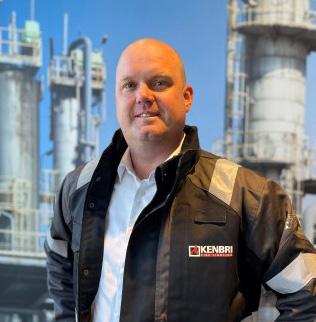
Joined Kenbri Fire Fighting in 2021 after a careerasaninstructorandfirefightingexpert for special projects.
Having started off as a Sales Engineer, Hans is now a Fire Safety consultant, advising on all aspects of Industrial Fire Fighting with an emphasis on Fire Fighting Foam Concentrates and Fire Fighting Foam systems. In his spare time,Hansisalsoavolunteerfirefighterinhis hometown.
hans.huizinga@kenbri.nl

What to look for in a proportioning system for high viscosity foam agents?
by Frank PreissHigh-viscosity foam agents have been used in the firefighting industry for decades, such as in AFFF-AR, and over the past months and probably years you will have heard a lot about high viscous fluorine free foam agents (FFF). This article will have a look at highly viscous foam agents in general and what to consider when deciding on a proportioning system.
The term viscosity refers to the resistance of a fluid to deformation. The higher the viscosity, the thicker, less flowable the fluid is. The lower the viscosity, the thinner, more flowable it is.
Low viscosity foam agents, such as AFFF, Hi-Ex, Class A or multipurpose are characterized as Newtonian fluids. High viscosity foam agents, such as AFFF-AR and FFF are pseudoplastic fluids. The article will be focusing on the importance of viscosity, especially in non-Newtonian, highly viscous pseudoplastic foam concentrates. It will be discussing proportioning methods and their effectiveness based on viscosity.
The viscosity of a pseudoplastic foam concentrate can be characterized as a function of dynamic viscosity and shear rate, whereby the shear rate is the rate at which a fluid is sheared or “worked” during flow, i.e. due to the friction between the fluid and the wall of the pipe work. A dynamic viscosity / shear rate curve is always associated to a specific temperature.
Besides foam agents, every proportioning system can be characterized by a viscosity curve, which describes the ability up to which viscosity fluids can be processed. The curve will depend on the technical characteristics of the individual proportioning technology and system design. When comparing proportioning systems, it should be noted, that various manufacturers only exhibit one viscosity
As an example Image 1 shows a Newtonian and a pseudoplastic fluid. FM Approvals, as an example, has defined the shear rates of 5 to 600 as relevant for foam agents and proportioning systems.

Image 2 shows the change in viscosity based on the temperature in the example of one foam agent. There are strong differences between foam agents, both in terms of absolute values as well as relative differences at different temperatures.
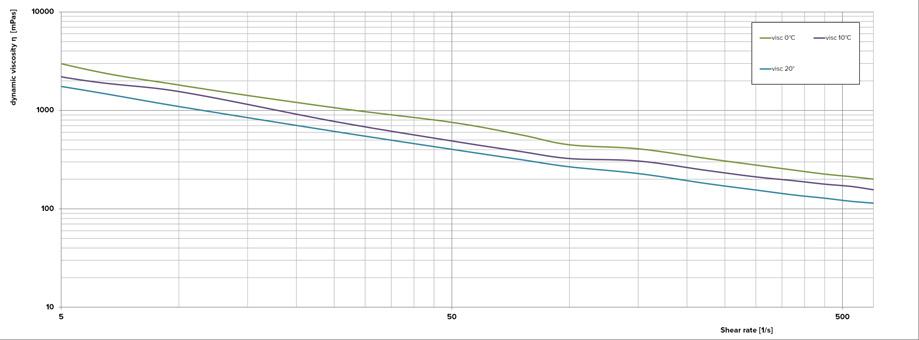
Image 3 shows the viscosity curve of a proportioning system and two foam agents.
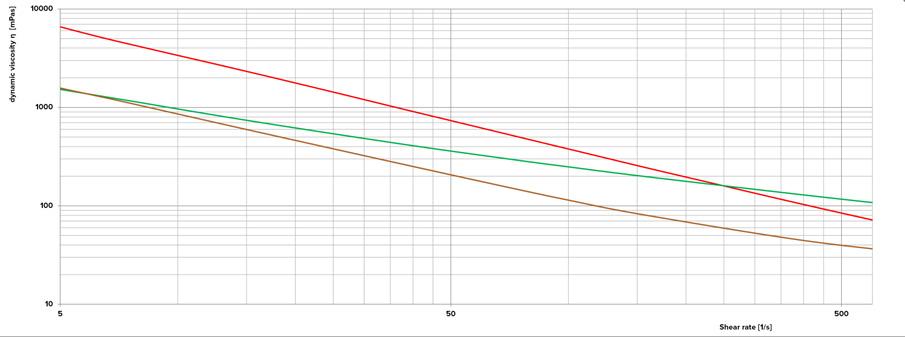
value, although this does not accurately describe the complete working range of the system. It is recommended to always ask for the viscosity values at different shear rates, i.e. as done by FM Approvals, so a complete evaluation can be done. This is especially important when assessing a proportioning system
that shall function at varying flow rates.
In image 3, the proportioning system is fully capable of proportioning the foam agent 1 but may have difficulties with foam agent 2. The curve of foam agent 2 exceeds the curve of the proportioning system above a shear rate
of about 90. For verification whether the combination of the proportioning system and foam agent 2 can be used, physical tests are recommended. Always bear in mind, that you should use the viscosity curve of the lowest anticipated temperature that the system may be exposed to.
WHY IS THE VISCOSITY OF FOAM CONCENTRATES IMPORTANT?
Since high-viscosity foam concentrates have a significantly greater pressure loss during flow than low-viscosity foam concentrates, certain proportioning techniques based on pressure ratios are unsuitable.
The most suitable proportioning techniques are those that rely on positive displacement pumps to deliver the high viscosity foam concentrate.
In addition, the proper sizing of the suction line is critical, as the calculated pressure loss in the suction line must be below the NPSH value (Net Positive Suction Head – also known as suction ability) of the pump.
From experience FireDos has been using the following values for calculations with good success. The permissible flow velocities for Newtonian foam concentrates in the suction line are
Table 1 shows some volume flows for the example of a 2” suction line connection.

in the range of 1,0 to 1,2 m/s. for high viscosity pseudoplastic foam concentrates they are 0,6 to 0,8 m/s. So, to achieve the same volume flows, larger pipe diameters must be used for high viscosity foam agents.
Beside staying below the NPSH-Value of the pump, consideration should be taken for the sizing of the suction line to accommodate the differences in pressure drop under the operating conditions of lowest and highest
expected water flow as well as lowest and highest expected foam concentrate temperature in the suction line. One other big challenge in handling high viscosity foam agents is air entrapment. With high viscosity, pseudoplastic foaming agents the air bubbles, that may be induced during transport or refilling, can remain in the liquid and thus have an influence on the proportioning rate. 10% air entrapment means a 10% reduced proportioning rate, 3% effectively becomes 2.7%.
INFLUENCE OF HIGH VISCOSITIES ON VARIOUS PROPORTIONING SYSTEMS.
Following, 6 different types of proportioning systems will be compared for the effects of different planning considerations when transitioning from a Newtonian to a high-viscous, pseudoplastic foam agent.
Proportioning systems:
Venturi proportioner
Bladder tank with wide range proportioner – With the bladder tank the pressure drop in the connection line between tank and proportioner may be a limiting factor due to the friction loss.
Wide range proportioner with gear pump with return of excess foam agent to tank.
Electronic proportioner with gear pump with return of excess foam agent to tank.
Water motor with gear pump
Water motor with piston pump
Planning considerations:
Waterflow min:max – i.e. at 1:10 for a max flow of 10.000 lpm the min flow
would be 1.000 lpm.
Pressure drop – what is the pressure drop due to the appropriate proportioning device
Suction line – if the diameter is extended, how long can the suction line be.
System pressure – will the pressure of the fire water system be effected
Transition – what needs to be done for a transition to a high viscous foam agent.




Transition to high viscos foam agent

The color coding is the personal interpretation of the author, whereby green means little impact, orange is medium impact and red is high impact when transitioning to a high viscous foam agent.
A changeover from a Newtonian to a high-viscosity foam concentrate is possible with the right planning for almost all proportioning technologies. The changeover must be carefully planned and implemented, and it is recommended to involve specialized companies for the changeover.
Legislations in various parts of the world have started to ban the use of Fluorine in firefighting foams, primarily for the protection of people and animals, as it is very harmful to the health. The industry has reacted by developing less harmful foam agents, however, for a large part, the suitability for all foreseeable extinguishing scenarios still must be proven and they must be approved by the authorities.
In contrast to the most widely used AFFF, the fluorine free foam agent
concentrates (FFF) developed by the various foam agent manufacturers are based on different formulations, which have different physical properties.
In general, an increased viscosity and plasticity can be assumed in comparison to the Fluorine-containing foam concentrates. Due to the different physical properties of the foam agents, the necessary proportioning or mixing equipment must be checked for suitability. With one of the development focusses of the FireDos GEN III foam proportioners having been high viscosity Fluorine-free foam agents, it can be said that all FireDos Gen III proportioners are designed to function with the new high viscosity, pseudoplastic foam agents.
For more information:

https://www.firedos.com/products/proportioners-stationary


is Managing Director of
FireDos are experts in foam concentrate proportioners and monitors for firefighting, focusing on their in-housedeveloped leading technology and customer service.

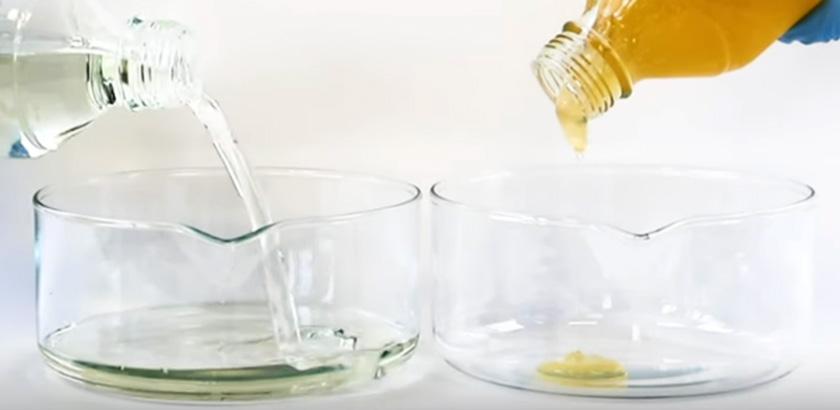
GEN III FOAM PROPORTIONERS
RELIABLE, COST-SAVING AND ECO-FRIENDLY:
GEN III is the next evolution level of hydraulic foam proportioners for firefighting from FireDos. Sturdier, smaller, safer, and more functional: GEN III features a lot of improvements which make operation even more e cient and comfortable. The proportioner consists of a water motor and piston pump and handles all types of foam agents, even extremely high-viscous, alcohol-resistant and fluorine-free ones. Furthermore, GEN III is a purely mechanic system and allows testing the proportioning rate in a cost-saving and eco-friendly way, producing no foam at all.
Purely mechanical and highly reliable


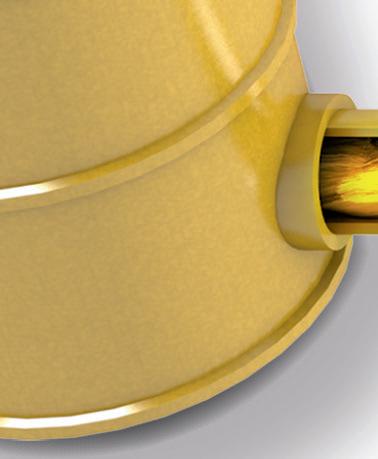

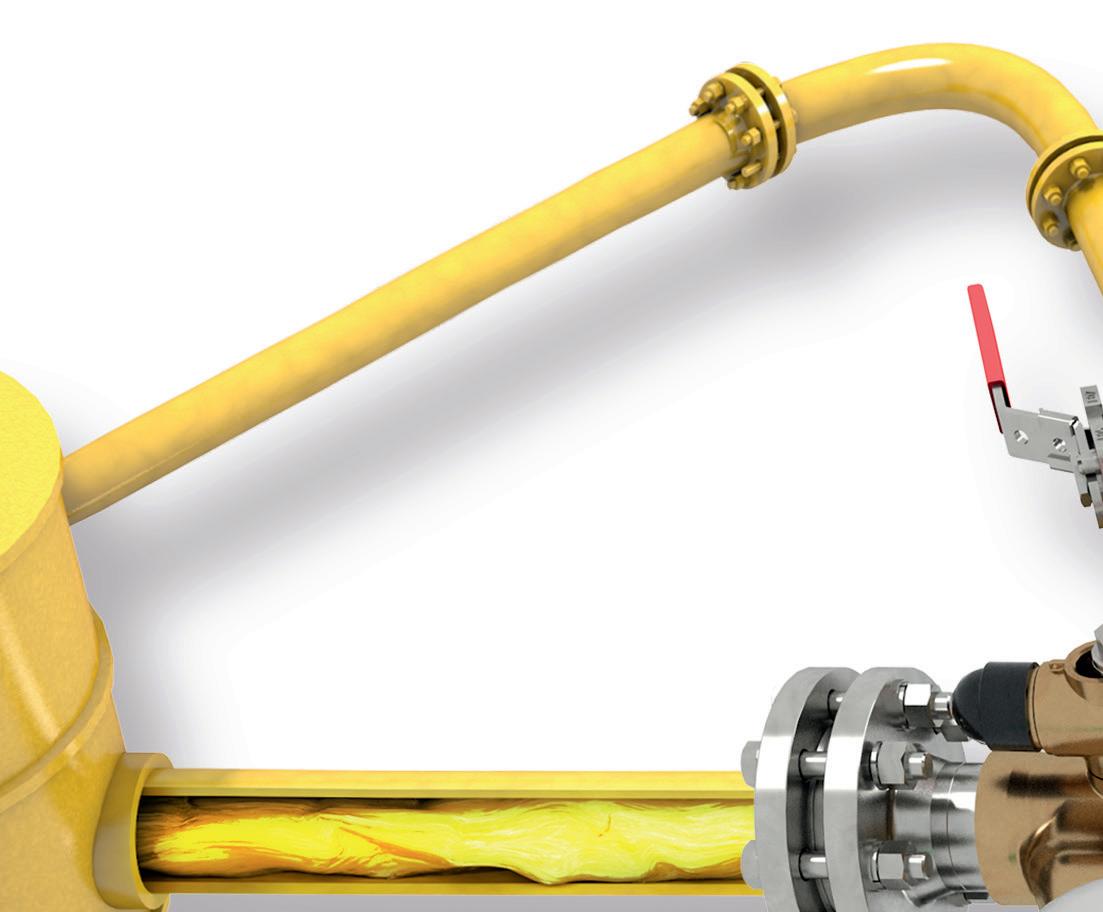
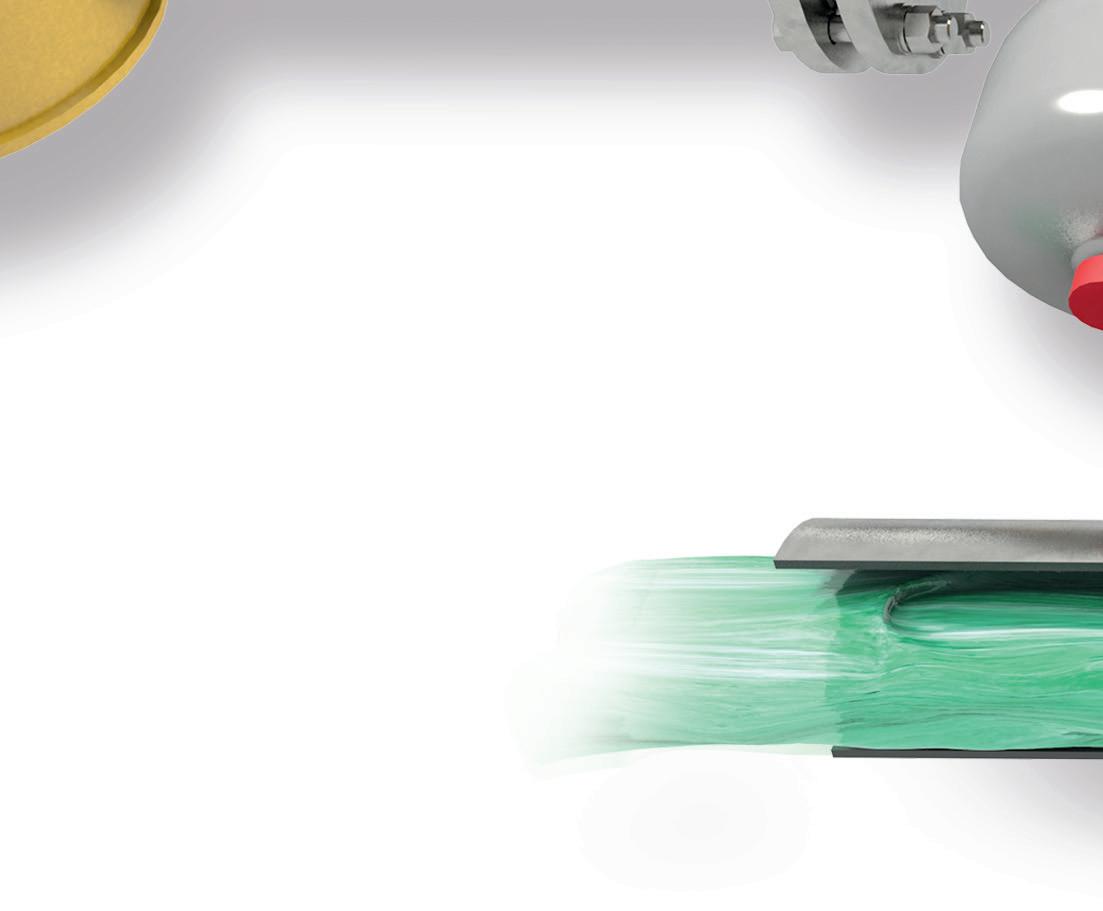

Constant proportioning rate over a wide flow range
Cost-saving and eco-friendly
GEN III foam proportioners allow testing the proportioning rate without producing foam or premix.

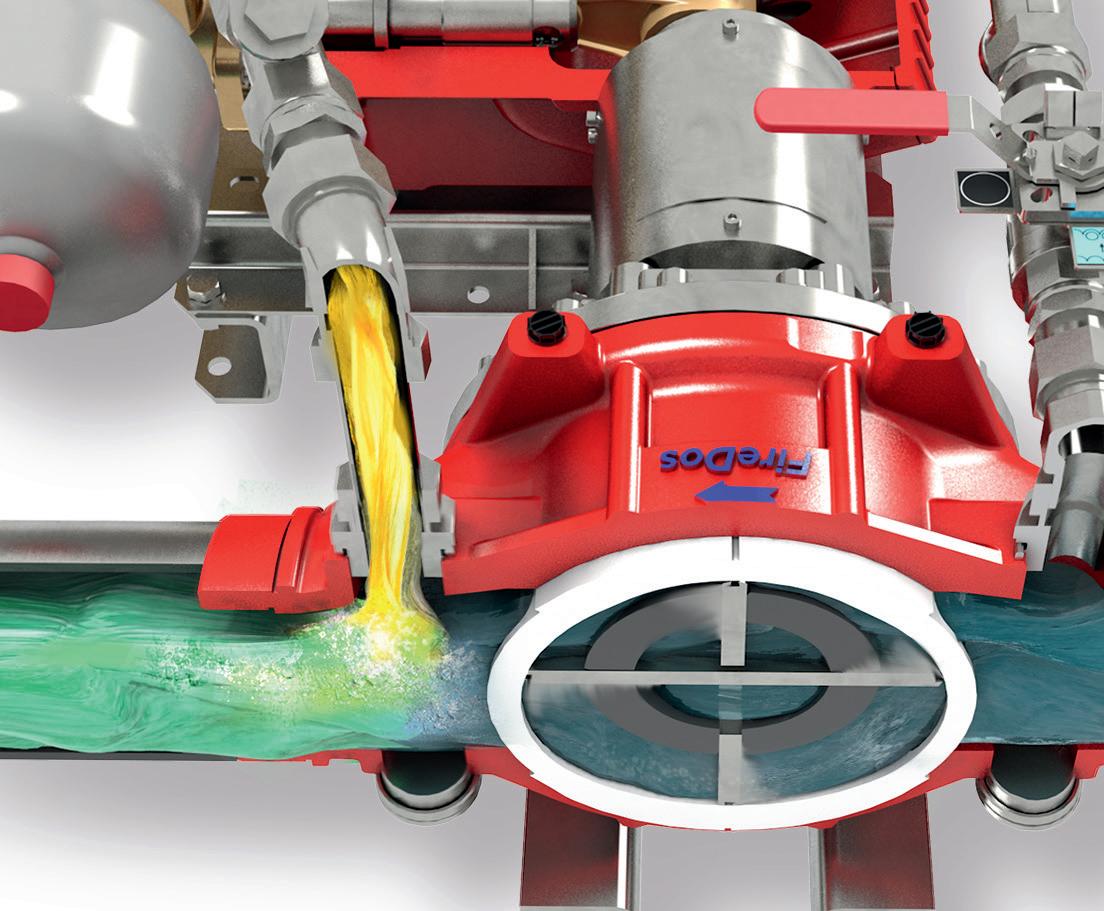

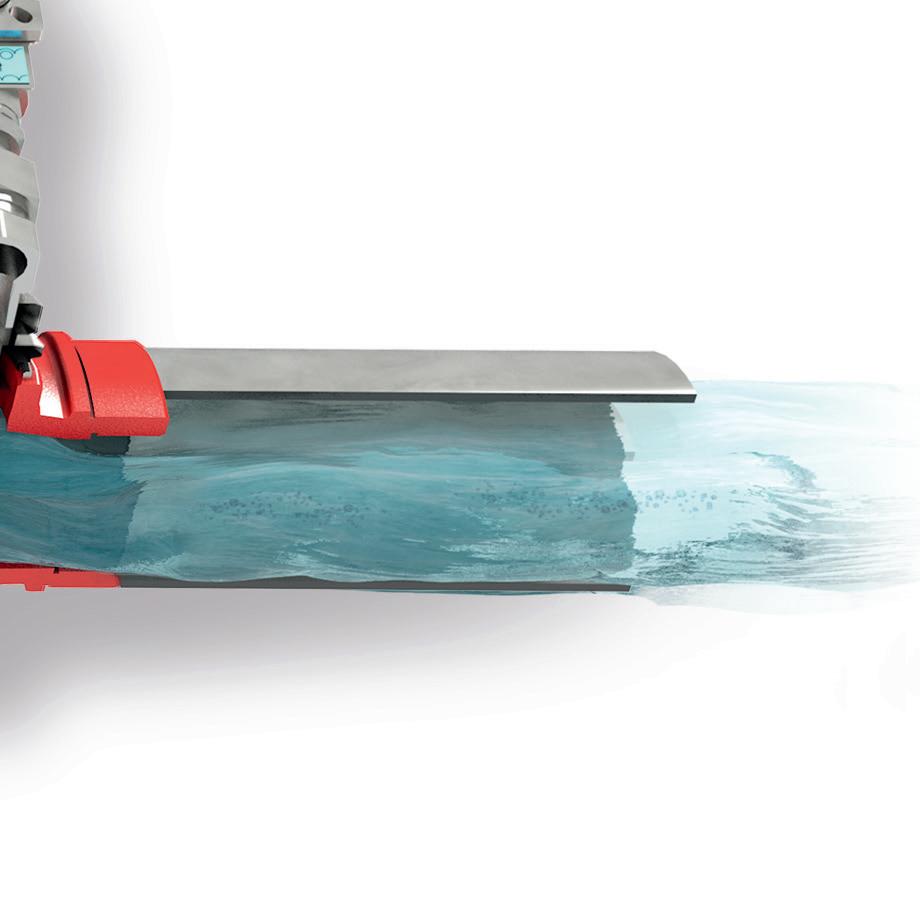
How clean is clean?
by Ian RossThe ongoing detection of multiple types of per- and polyfluoroalkyl substances (PFAS) in drinking water is leading to increased public awareness of the potential impact of this class of extremely persistent anthropogenic chemicals on public health.
In December 2023, Sweden's Supreme Court announced the final judgment in a case that has been litigated for the last 10 years. The Supreme Court ruled that more than 150 residents in the village of Ronneby, who were exposed to elevated levels of PFAS in drinking water, suffered personal injury, as a result of the use of firefighting foams and reported elevated levels of PFAS in their blood1. Prior court rulings in 2021 determined that an elevated level of PFAS in blood equated to personal injury, which was overturned in 2022 with the court of appeal maintaining that personal injury had to be proven. The Supreme Court’s decision sets a precedent in Sweden and may impact litigation progressing in other countries. Human biomonitoring (HBM) values for perfluorooctanoic acid (PFOA) and perfluorooctane sulfonate (PFOS) for which (1) no adverse health effects are expected to occur in humans and (2) may lead to human health impairment were published in 20212
PFAS comprise a broad group of over 7 million extremely persistent synthetic chemicals3. Many of these compounds transform in the environment over time, from one form, termed polyfluoroalkyl substances (partially fluorinated) to another, termed perfluoroalkyl substances (fully fluorinated) as the non-fluorinated parts of the polyfluoroalkyl substances are subject to microbial or abiotic attack. The extreme environmental persistence of fluorocarbon compounds has been well known since at least 19504. Therefore, it is not surprising that PFAS are being discovered in drinking water above safe levels in many countries, and it is clear that PFAS (C6 and C8) in firefighting foams will soon be curtailed by advancing regulations.
Regulations in Europe and Australia address both bulk polyfluroalkyl PFAS (e.g. C8) and target perfluoroalkyl PFAS (e.g. PFOA). Methods to detect both types of PFAS have been commercially available for almost a decade, but decontamination approaches for fire suppression systems often fail to attempt to measure the regulated PFAS, meaning the data provided to support successful decontamination is not trustworthy. This article aims to explain the essential scientifically validated lines of evidence required to demonstrate fire suppression system decontamination, to assist with assessing the credibility of decontamination approaches.
Pragmatism During Foam Transition
The maximum contaminant levels (MCLs) of 4 parts per trillion (ppt) or nanograms per litre (ng/L) for PFOS and PFOA and hazard indices for four additional PFAS, proposed in drinking water by USEPA could lead to several thousand US drinking water systems being impacted5. These proposed, very low, target concentrations of PFOS and PFOA may lead to the need to treat significant volume of drinking water, with the American Water Works Association (AWWA) pointing out that roughly 98 percent of drinking water utilities in the country, have maximum PFOA and PFOS levels below 10 ppt5. With US rainfall containing up to 50 ppt of PFOS and 30 ppt of PFOA[6], the potential for widespread detections of PFAS below 10 ppt in surface water and groundwater appears possible7 When examining a broader array of PFAS in US rainfall, some 16,400 ppt of PFAS has been reported8 with many sources of PFAS having to potential to impact surface waters9
Taking the existing low-level background (ambient) PFAS concentrations in the environment into account can be critical when considering the concentrations deemed as targets by regulators. This is also the case when managing potential high-concentration sources of PFAS such as from use of fluorinated firefighting foams. With increasing number of individual PFAS facing regulations in drinking water and groups of PFAS already regulated in firefighting foam and other products, a detailed understanding of how to measure PFAS to comply with regulations and prove effective treatment is essential. The likely pace of regulatory focus on additional PFAS, beyond those regulated in drinking water, needs to be considered, with some pragmatism required when balancing costs to manage PFAS, attempts to future proof treatment approaches and existing ambient ‘background’ PFAS concentrations.
‘Dark Matter’ Fluorosurfactants as PFAA-Precursors
The perfluoroalkyl substances are collectively termed perfluoroalkyl acids (PFAAs) and these include the ‘C8’ molecules, such as PFOS and PFOA and ‘C6’ replacements such as perfluorohexanoic acid (PFHxA). Modern firefighting foams are dominated by polyfluoroalkyl substances, termed PFAA-precursors and regulations addressing their concentrations in firefighting foams came into force in the UK and Europe Union in July 202010-12 . The fluorosurfactants added to modern fluorinated firefighting foams are termed polyfluoroalkyl substances or PFAAprecursors as they transform in the environment, over time, to generate “dead end” perfluorinated daughter products (PFAAs) as ultra-persistent terminal products13
Firefighting foams contain multiple fluorotelomer-precursors14-16, which are proprietary molecules, and for which no analytical standards available, so chemical analyses termed ‘targeted methods’ such as USEPA method 1633 cannot detect these PFAS. Hence they have been termed ‘Dark Matter’ in an analogy to the 80% unmeasurable mass of the universe17 . These “parent” PFASs can therefore go undetected until they transform in the environment or higher organisms to form the regulated terminal “daughter” PFAAs. Little research has been done considering the toxicology of these unregulated parent fluorotelomer precursors in fluorinated firefighting foams18 or their transient / stable environmental transformation intermediates. More advanced analytic tools such as the total oxidizable precursor (TOP) assay will reveal their presence and is able to quantitatively estimate the concentration of PFAS containing perfluoroalkyl groups (generally C4-C14 PFAAs)19-21. Studies have shown that some fluorotelomer precursors are 10,000 times more toxic than the terminal daughter PFAAs they transform into 22
An analogy to explain PFAA-precursors is provided below in Figure 1, whereby the upper full arrow, represents a polyfluoroalkyl PFAS (precursor), called 8:2FTAoS (8:2 fluorotelomer thioether amido sulfonate) that cannot be detected using targeted chemical analyses23. If this arrow was used in a battle a few hundred years ago and fell to ground, the wooden arrow shaft would have rotted away by now, leaving only the stone arrowhead, which represents PFAAs, so PFOA in this case from 8:2FTAoS. In the same way, the precursors which are the fluorosurfactants in fluorinated firefighting foams, have a portion of the molecule which is subject to rotting (i.e. microbial degradation) or abiotic oxidation, leaving only the portion which is persistent behind i.e. the PFAAs after time spent in the environment. Whilst in the firefighting foams biocides are added so these transformation processes should not occur, so the precursors remain intact.
The PFAAs are commonly regulated in drinking water, losses of their precursors to ground (i.e. the fluorosurfactants in firefighting foams) can result in detection of PFOA in groundwater and potentially drinking water, as the PFAA-precursors transform to the form regulated PFAAs. Detection of the precursors and quantification of the bulk precursor concentrations within firefighting foams
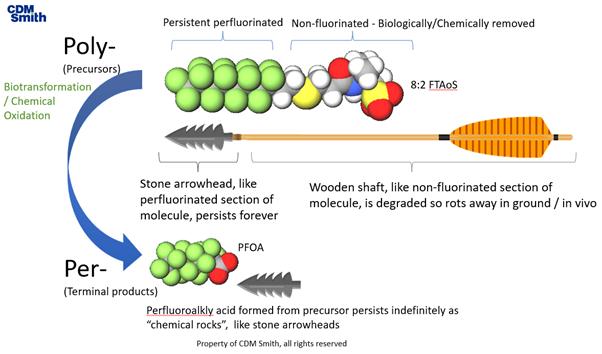
can be achieved using the Total OxidiseablePrecursor (TOP) assay19. This method uses a chemical oxidant to quickly transform the PFAA-precursors and measure the PFAAs they produce. The analogy with arrows and arrow heads can be extended to describe TOP assay as a fire, to which all the arrows and burned and only the arrow heads survive, which can then be counted, with no means to count the whole arrows. The first commercial use of chemical analytical methods, to detect these precursors and identify their chain perfluoroalkyl lengths (i.e. C9, C8, C6) was in 2014, with ALS laboratories (formerly ALcontol) winning UK industry awards in 2016 for the development and commercialisation of the TOP assay. In 2016, the Queensland Department of Environment and Science (DES) introduced a precursors and identify their chain perfluoroalkyl lengths (i.e. C9, C8, C6) was in 2014, with ALS laboratories (formerly ALcontol) winning UK industry awards in 2016 for the development and commercialisation of The TOP assay. In 2016, the Queensland Department of Environment and Science (DES) introduced a policy for the management of firefighting foam which included regulatory thresholds
for the PFAA-precursors, reflecting that methods to measure these precursors via TOP assay were widely available commercially. The extensive commercial use of TOP assay for detection of PFAS when decontaminating fire suppression systems, has been reported in prior JOIFF articles 24, 25, where data was presented showing why measuring the PFAA-precursors, as dominant fluorosurfactants, present within firefighting foams is essential for detection of PFAS during decontamination. Further to this the development of surface swabbing methods coupled to TOP assay, was proven to detect >97% of the surface-bound PFAS and described in a JOIFF article in January 2023[26]. Some data showing TOP assay data, versus targeted analysis on the same sample is shown in Figure 2, which reflects that the mass precursors in PFAS samples can be significantly higher than the PFAAs, detected using targeted methods (e.g. USEPA 1633). Data quality objectives for application of the TOP assay and data output interpretation guidance was published in 2018, to assist laboratories applying the method and consultants interpreting the results 27 .
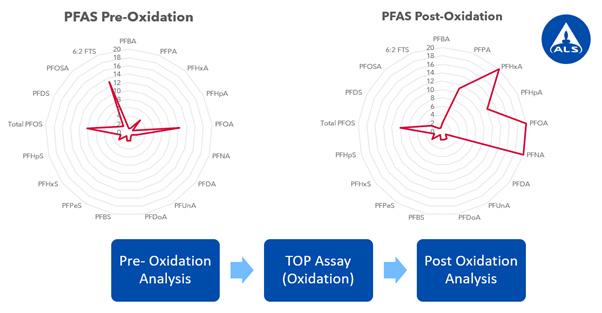
Regulations Addressing Precursors
Since 2020, in the UK and European Union, fluorinated Class B firefighting foams have required assessment to establish if they need to be reported as stockpiles of persistent organic pollutants (POPs) under the REACH regulations [1012]. All firefighting foams containing fluorosurfactants require determination of their C8 PFAS content (PFOA and PFOAprecursors) to determine if they comprise a foam which falls under the regulatory restrictions.
The regulations are From 2020 no training was allowed with C8-foams, as of July 4th 2021 cumulatively holding more than 50 kg of C8-foam within your business, across all the sites operating need to be reported to local environmental regulators as a notifiable stockpile of persistent organic pollutants (POPs), from 2023 C8-foams can only be used when 100% contained during use and from 2025 C8-foams cannot be used.
The ‘C8’-PFAS foams are the current focus of the 2020 regulations and have regulatory limits set on their PFOA and PFOA-precursor content, set at 25 ppb and 1000 ppb respectively. TOP assay has been applied commercially to detect PFOA-precursors in firefighting foams and determine whether specific foams fall under these restrictions (i.e. contain PFOA and PFOA-precursors above regulatory thresholds) for several years. ALS labs in Europe are routinely testing fluorinated foams, being sold by manufacturers, using TOP assay, to confirm that they do not breach the guidelines on C8 content. Legacy fluorinated foams from fire suppression systems operated by multiple sectors, such as fire brigades, airports or oil & gas companies have been tested using TOP assay to determine whether the regulatory guidelines on PFOA and PFOAprecursors have been breached.
Further regulations on products containing C9-C14 PFAS, with a target of 25 ppb for the sum of C9-C14 PFAAs and 260 ppb for the sum of their precursors impacts the use
of firefighting foams from July 2025 [28].
In Queensland, a concentration of 1 part per billion (ppb) of total PFAS (as confirmed by TOP assay) has been stipulated as the acceptable level in F3 foams [29, 30]. The US National Defence Authorisation act (NDAA) has also stipulated a target of 1 ppb [31] total PFAS in F3 foams, with TOFCIC being evaluated to determine if these detection limits can be achieved in foams
Decontamination of Fire Suppression Systems
The total PFAS concentrations detected in a synthetic fluorine free firefighting (SFFF) foams, using TOP assay, placed in a fire suppression system for 2 years after the system was rinsed twice with water, during foam transition was as high as 1.2 g/L[24]. This reflects the mass of PFAS that can remain within fire suppression systems associated with internal surfaces. It’s possible that without effective decontamination, the concentration of C8 (PFOA and PFOA-precursors) could rise within SFFFs over time to breach the regulatory limits on C8, meaning the SFFFs would be classed as a C8 foam and subject to the regulations described above, meaning they could no longer be used. The same applies to the C9-C14 regulations which have lower thresholds, as these apply to the sum of C9-C14 PFAAs and the sum of C9-C14-precursors. With a total of 1.2 g/L of total PFAS (measured with TOP assay) shown to rebound into SFFF foam, following water rinsing, a comparison of this concentration to the regulatory limits is concerning. This total PFAS concentration (usually C4-C14) that rebounded, expressed in the units applied for the regulations gives 1,200,000 ppb, so within that it seems possible that breaching limits for C8 i.e. PFOA (25 ppb) or PFOA-precursors at 1000 ppb is likely.
The development and commercialisation of surface swabbing methods, linked to TOP assay or other methods to measure total fluorine, such as combustion ion chromatography (CIC), has proven to detect >95% of the PFAS associated with
surfaces. The deployment of this approach to determine whether decontamination has been successful will be essential, with recent data collected by CDM Smith demonstrating that water incubations / rinses before and after decontamination do not reflect the concentrations of PFAS remaining on surfaces. Water incubations may be needed for many years, as the surface-bound liquid crystal multilayered supramolecular forms of PFAS can take extensive periods of time to dissolve from surface into water. Any PFAS data, from rinses / incubation, provided by technology vendors or consultants to demonstrate successful decontamination will not reflect the mass of surface-bound PFAS that still contaminates the solid surfaces. Also showing data just for a few target PFAS (i.e. PFOA, 6:2FTS) and not the PFAA-precursors will not reflect the concentrations of PFAS present and subject to existing regulations in Europe and Australia.
There are many opinions and presentation describing PFAS decontamination, but scientific evidence demonstrating success, by measuring the PFAS present in firefighting foams and subject to regulations, on the surfaces of allegedly decontaminated surfaces is not presented[32, 33]. For successful decontamination vendors of technologies should have a detailed understanding of PFAS physical chemistry, how and why PFAS aggregate to form stable supramolecular assemblies, how these can be dissolved and removed, which PFAS are present in foams and how to assess their concentrations.
Given the properties of stable multilayered PFAS supramolecular assemblies, shown to be present on the interior of fire suppression systems via electron microscopy[34], it’s predictable that they will rebound into SFFF foams over time, if effective decontamination is not done. Figure 3 shows the likely scenarios and potential timeframes over which PFAS may redissolve back into SFFF foams, potentially causing SFFF foams to be classed as C8 foams (or C9-C14 foams) in Europe and be subject to future regulations meaning that they cannot be used. There’s an absence of any regulations describing the acceptable mass of any PFAS type (C1-C14) than can remain per cm2 on surfaces within fire
suppression systems, generating the ongoing question of ‘how clean is clean?’ when considering PFAS decontamination. If gross contamination of surface-bound PFAS remains within fire suppression systems, this will redissolve into SFFF foams, to potentially breach regulatory limits, meaning that the foams will be the matrix in which PFAS regulations are applied. Foams may be classed as being out of compliance with regulations meaning that they may have to be disposed of, in future at significant expense, as a result of containing elevated concentrations of PFAS. A environment risk assessment to evaluate how these PFAS could impact receptors could be a PFAS could impact receptors could be a future potential method to manage this. If SFFF foams become contaminated with PFAS and are repeatedly used for fire training, where breathing apparatus is not used, the potential for ongoing exposure to firefighters via aerosol inhalation and ingestion could provide a future exposure pathway that requires management.
CDM Smith continues to work on multiple Strategic Environmental Research and Development Program (SERDP) and the Environmental Security Technology Certification Program (ESTCP) ESTCP projects, evaluating the formation, properties, and methods to remove PFAS supramolecular assemblies from multiple surfaces. In addition, we are optimising decontamination approaches with Universities in Canada and Sweden whilst assisting clients with consultancy support to deliver successful decontamination at full scale. These projects have shown that soaking with hot water is not effective for removal of surface-bound PFAS. Similar results have been demonstrated for some proprietary reagents.
For PFAS decontamination it is recommended that solvents, such as alcohols or glycols are applied, with heat and significant surface attrition (i.e. sonication, high pressure jet washing). It is essential that lines of evidence to demonstrate successful decontamination include assessment of the surface-bound PFAS concentrations, before and after decontamination. This can be achieved using swab methods, commercially available at ALS laboratories and Eurofins. There’s an expectation that PFAS supramolecular assemblies can be removed from surfaces, intact as nanometre or micron sized particles of PFAS during decontamination,

so it is recommended that CIC is applied for assessing rinsates as particles of intact supramolecular assemblies may be present.
Foam Transition
For successful foam transition a site-specific strategy is essential which is prepared by a multi-disciplinary team of consulting fire engineers, experienced environmental engineers and scientists, fire equipment vendors, foam vendors and both fire engineering and environmental contractors. A foam transition strategy generally involves several stages including:
Assessment of fire risk scenarios and determination of need
Evaluation of multiple fire suppression strategies and comparison of risk reduction options
Review of options available to provide effective fire suppression.
Assessment of replacement foams available and whether any suppression system modifications are required
Assess strategies to maintain active fire suppression during foam changeout
Perform a cost benefit analysis to compare replacement of specific components vs. decontamination
Implementing decontamination with verification of progress and success done via assessment of total PFAS within the cleaning agent and on the surfaces of fire suppression system components
Manage waste firefighting foams and PFAS saturated cleaning agents via multiple disposal routes
Stepping back and evaluating the fire hazard scenarios and need for fire suppression can assist with determining the most pragmatic way forward when evaluating how to maintain effective fire suppression whist removing PFAS-based foams. The most costeffective approach may not be to retrofit a SFFF foam into the existing fire suppression
system, as many alternatives may be available which provide robust options for fire suppression.
Conclusions
Many organisations are considering foam transition to SFFF foams and attempting manage uncertainties future potential regarding PFAS liabilities. This article aims to provide a scientifically defensible and pragmatic approach to assist with foam transition projects and provide some key questions to ask when assessing how to determine if successful decontamination has been achieved and assess which decontamination approaches are credible.
In the absence of regulations focussed on PFAS on surfaces to guide decontamination, there’s significant risk that SFFF foams may become impacted with PFAS above regulatory thresholds in some regions. Effective decontamination appears to be critically important to prevent this and lines of evidence proving surface decontamination are essential to understand before attempting fire suppression system decontamination.


rossif@cdmsmith.com

Day, and J.A. Field, Zwitterionic, cationic, and anionic fluorinated chemicals in aqueous film forming foam formulations and groundwater from U.S. military bases by nonaqueous large-volume injection HPLC-MS/ MS. Environ Sci Technol, 2013. 47(10): p. 5226-34 16.Place, B.J. and J.A. Field, Identification of novel fluorochemicals in aqueous film-forming foams used by the US military. Environ Sci Technol, 2012. 46(13): p. 7120-7. 17.Suthan S. Suthersan J.H., Ian Ross Erica Kalve , Joseph Quinnan Erika Houtz Jeff Burdick, Responding to Emerging Contaminant Impacts: Situational Management. Groundwater Monitoring & Remediation, 2016. 36: p. 22. l 18.Hogue, C. US EPA orders first tests of a PFAS chemical. 2022 19.Houtz, E.F., et al., Persistence of perfluoroalkyl acid precursors in AFFF-impacted groundwater and soil.
PFAS - still time to care, or should we care now?
by Dr Thomas LeonhardtLegislators globally tighten the screws on Fluorochemicals and yet there is more to come. EU is working on a general ban of Fluorochemicals in firefighting foam agents which is due to come into force this year. Should users of firefighting foams transition away from AFFF and the likes now or wait until the restriction is out?
THE STATUS QUO
The high frequency of different legislation having hit the market place until now, their similar yet different scope, limiting values, transition times etc. are confusing users of foam agents to the extent that many of them consider the use of fluorine containing foams as already generally banned.
Laws in force
The following legislation is in place already: (EU) 2019/1021 Recast on Persistent Organic Pollutants and affecting Perfluoroctanesulfonic Acid (PFOS):
This restriction entered into force 2019 replacing earlier legislation related to adopting decisions of the Conference of the Parties’ of the UN’s Stockholm Convention into European legislation. The maximum acceptable limit for “Perfluorooctane sulfonic acid and its derivatives (PFOS) C8F17SO2X” in mixtures of 10ppm = 10mg/ kg, was adopted into this regulation with no more derogations.
(EU) 2020/784 Perfluoroctanoic Acid (PFOA):
This so called “delegated regulation” amends the aforementioned (EU) 2019/1021 setting the maximum acceptable limit in mixtures for PFOA and its salts to be 25ppb = 25µg/kg and for the sum of related substances to be 1.000ppb as of July 4th, 2025.
Derogations only for use on class B-fires:
- Until January 1st, 2023 with no further requirements, - since January 2nd, 2023 until July 4th, 2025 if all effluents can be collected.
(EU) 2021/1297 affecting
“perfluorocarboxylic acids containing 9 to 14 carbon atoms in the chain (C9-C14 PFCAs), their salts and C9-C14 PFCArelated substances ”
Although these substances reportedly have never been used intendedly as active ingredients in firefighting foam formulations they may have been present in formulations with the old so called C8-technology based fluorocompounds in trace amounts. Since the maximum acceptable limit in mixtures for the C9- to C14-carboxylic acids is set to be 25ppb = 25µg/kg, and for the sum of “related substances” 260ppb = 260µg/kg chances are that legacy foam agents containing C8technology fluorocompounds may exceed these very tight limits. Firefighting foams which are already installed and are for use on class B-fires only are derogated from January 1st, 2023 until July 4th, 2025 if all effluents can be collected.
(EU) 2023/1608 affecting Perfluorhexanesulfonic Acid (PFHxS)
The chemicals affected by this regulation reportedly also were never used as an intentionally added compound in firefighting foam technology yet may be present as trace contaminants in the respective raw material fluorochemicals which were used to make foam concentrates. The maximum acceptable limit of PFHxS or any of its salts is generally set to be equal to or below 0,025 mg/kg in mixtures 25ppm = 25mg/ kg and for the sum of related substances of 1.000ppb = 1ppm = 1mg/kg.
In concentrated firefighting foam the maximal acceptable concentrations of PFHxS, its salts and PFHxS-related
compounds are deviating from the above numbers and are set to be equal to or below 100ppb = 0,1ppm = 0,1mg/kg. This restriction entered in effect at the day of its publication with no further derogations.
All of the aforementioned regulations are affecting groups or small families of very similar chemical substances. The analytical control meanwhile has become very easy as the methodologies to detect these compounds at the trace amount level required in samples of firefighting foam concentrates and fire water evolved mature.
A little bit of a special case and may be indicator for things to come is the (EU)2021/1297 which doesn’t just look at a substance family with only one indicating structural feature (such as a C8-carbon chain) but covers six families of substances with either one having a different indicating carbon chain.
Coming next
One of the restrictions still being in process is the restriction on:
PFHxA “Undecafluorohexanoic acid (PFHxA), its salts and PFHxArelated substances”
The work on this restriction started officially on December 21st, 2018 and passed all phases forseen for the legislation process in December 2021. Last June the EU Commission officially notified the WTO of its plans to amend (EU) 1907/2006 REACh and sent the most recent draft of it.
According to this draft the limit for contents of “Undecafluorohexanoic acid (PFHxA)” in firefighting foams shall not exceed 25ppb and that for the totality of contents of “its salts and PFHxA-related substances” shall not exceed 1000ppb. Once the legal text enters into force it basically bans any use of C6-based fluorine containing foam agents for “for training and for testing (except functional testing of the firefighting systems)” and for “municipal fire services” as of 18 months after date of entering into force.
The F-PFAS Restriction
The EU’s currently works on the most far reaching restrictions for PFAS ever in history of chemical law making – the general restriction on PFAS for use in firefighting foams (F-PFAS Restriction) and a second one for all other uses(U-PFAS Restriction ).
In the most recent draft the F-PFAS restriction bans “Per- and polyfluoroalkyl substances (PFAS) defined as: any substance that contains at least one fully fluorinated methyl (CF3) or methylene (CF2) carbon atom” in firefighting foam agents with the following proposed provisions:
- No placing on the market as of 6 months after entering into force (in the following referred to as aeif)
- No manufacturing as of 10 years aeif
- No use
> For training and testing (system function testing excluded) as of 18 months aeif
> By municipal fire brigades (except those in charge for SEVESO industries) 18 aeif
> On board civilian ships as of 36 months aeif
> In civilian aviation as of 60 months aeif
> In handheld portable fire extinguishers as of 60 months aeif
> In SEVESO III-Industries as of 120 months aeif
> In all other applications but the above as of 60 months aeif
The restriction went through the phases of technical evaluation by RAC and SEAC and are now with the Commission for the final drafting.
The U-PFAS is in a much more infant state:
it just passed the first public hearing exposing ECHA to the Herculean job to deal with the over 5700 submissions. Once the agency has found a way to stem this task and has evaluated, condensed and bundled all submissions and fed them into a new draft opinion a second public hearing waits at its gates.
So far so good – the industry went through the replacement of C8-technology by the newer C6-technology after the bans of PFOS and PFOA. Costly but manageable.
So are we again...
...JUST SWAPPING JUICES?
The replacement of C8-based foam agents by C6-based ones wasn’t a big challenge for
several reasons: the physical properties of the concentrates did not change: Newtonian and low viscous C8-concentrates could be replaced by corresponding Newtonian and low viscous C6-products even at the same recommended proportioning rate.
Even Newtonian alcohol resistant foam concentrates were available as C6-products like they were before as C8-products. Also the functioning principles of C6-foams were the same like with their antecessors, hence were the techniques for using and applying these foams.
This experience may have led the one or the other to think we are again in a “swapping juices project” of that kind:
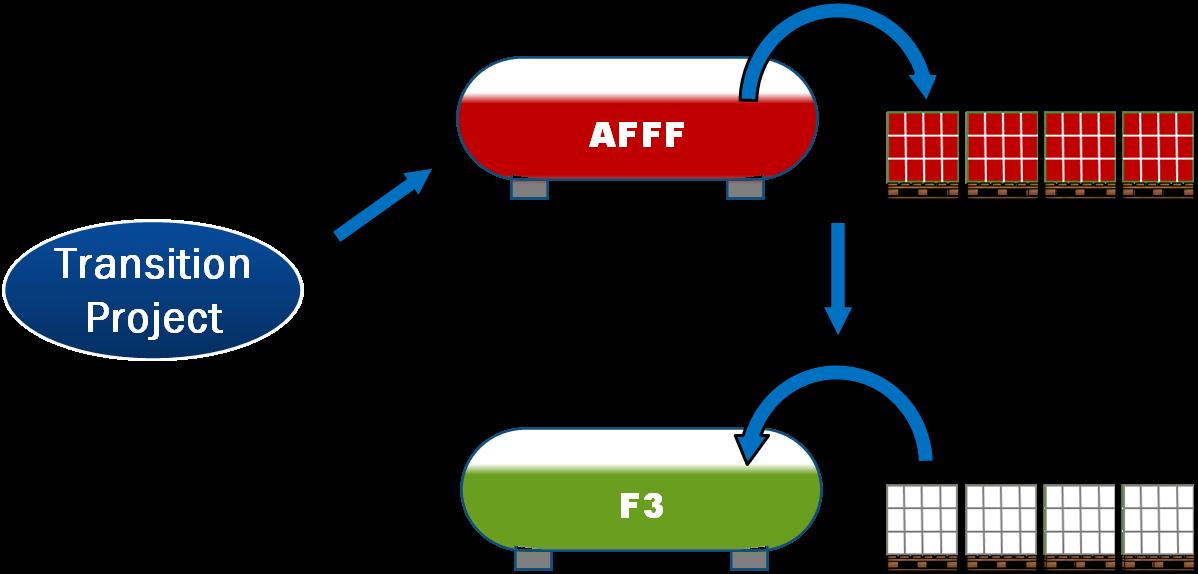
Unfortunately the reality is very different to any previous exchange exercise because the new class of fluorine free foams is different in many ways – the most important ones being:
Many F3 concentrates are nonNewtonian and have a high or very high viscosity
F3s can only extinguish liquid fuel fires as a foam hence do impose special requirements on the quality of the foam made from them to be effective
F3’s demonstrate a higher level of interaction with liquid fuels which leads to considerably greater gradations of their
extinguishing power on different fuels.
These very different properties of both the F3-concentrates as well as the foam made from them make the upcoming transition projects much more complex.
The very low legal limits which have already been or likely will be applied also do require a thorough cleaning beyond anything done during the phase-out of C8-technology.
And it also does require high quality trace analysis to be able and prove compliance with the laws to any party affected by a foam use namely authorities and liability insurers.
Key question still is: Is it already time to move even when laws are not in force yet?
Considering the aforementioned a transition project typically and very likely involves the following steps:
A thorough review of the fire protection concept
Definition of the necessary changes to concept and systems (plan, test, apply for approval, function proving, …)
Process of selecting new foam Building of new system/-s or retrofitting existing ones to the needs defined
Dispose of “old” AFFF and cleaning waters
Sourcing of new foam
Testing and re-listing of system/trucks/ concept
So the only correct answer is a clear YES!
PLANNING THE TRANSITION
Any replacement project needs an in-depth analysis of the existing fire protection concept with all the cogs contributing to be able to define starting line and target.
The Starting line
Since it is not very uncommon that the documentation of a status quo shows some differences to the real situation it is recommended to start with an inventory of what the current true situation is:
Utilization of areas to protect: areas with special risks or special protection needs, neighboring buildings, etc.; Accessibility of the risk areas even with large equipment; firewater retainment requirements, environmental risks (direct proximity to receiving waters, public sewers, etc.)
Hardware Inventory: Proportioning equipment; Pipeworks, valves, flow meters,...; application hardware (monitors, sprinklers, foam pipes, ...); application methods (direct/indirect feeding techniques)
Skill Inventory: in-depth understanding of foam concentrates/foam itself (ability to "read“ foam); practical training use/application of F3, tactics; performance drivers and -limiting factors; troubleshooting skills
Protection Target/-s: overarching target (extending of evac-/rescue times, extinguishing at all costs, fire containment, controlled burn down,...); is adaptation necessary or possible at all?
So instead of an easy swap the process is now becoming very complex even before the stage of filling a new foam agent:
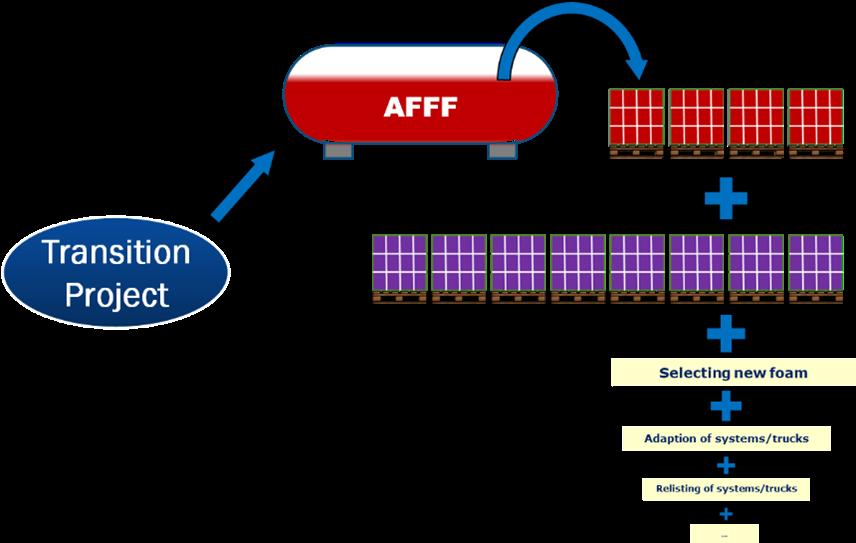
Once the starting line is clear, the evaluation of the status quo in the light of transition can start:

Fuel Check
Given the generally higher sensitivity of fluorine free foam agents against different liquid fuels, it is recommended to start with a comprehensive inventory of all fire risks (fuel types):
Collect all SDS of all liquid fuels (check issue dates to make sure you got the most recent versions)
Foam Check
Based on the technical requirements a foam agent needs to meet to be able and cope with the fuels present other aspects of foam use need to be factored in:
Recommended proportioning, application rate and application limitations Local ambient situation (buildings, roads, access, …)
Storage situation (temperature profile, containments, piping, construction materials, transportation)
Run theoretical pre-evaluation which fuels have been tested with F3-foams and which have not and/or may have an issue Group fuels (carefully!)
This inventory and the properties of the fuels are the bases to understand what type of foam agent is required and, if one type is enough or more than one needed. The specifications for the required foam properties and thus the foam concentrate can also be derived from this.
Appropriate listings/-approvals for the risk and use scenario
Permits (e.g. by insurer, authorities, ...)
Hardware Check
High viscosity concentrates require more energy for transportation but applied in the
right way and at the right end:
Venturi-type proportioners may be limited in general and/or require larger diameter suction hoses
Centrifugal pumps may cavitate at high flows
Piston pumps may either cavitate or run into a “steady-state” where foam agent is not transported any more but vibrates between inlet and outlet
Also the premix of high viscosity concentrates often displays a viscosity which is significantly higher compared to water beware of pressure loss in long pipeworks
Also proportioning rate or application rate may change and trigger adaptions of the respective installations/equipment. A particular area to look at is the foam quality required to get the foam agent to work: as a rule of thumb expansion ratio should target at >4 for any given F3 unless recommended otherwise by manufacturer hardware should be able to convert 100% of the premix into foam ( nonexpanded premix does not contribute to extinguishment on liquid fuels!)
foam quality must fit to the chosen type of application (forceful, gentle, long range, distribution patterns, ...)
Application Check
The properties of the foam that is actually generated are also influencing the way it is supposed to or can be used on fire:
The chosen or given application type and -technique must fit to the required foam quality and vice versa
The “right” foam quality is also depending on/influenced by the type of fuel the foam is supposed to work on and the strategy of extinguishment
The wrong application technique may render the best foam agent useless
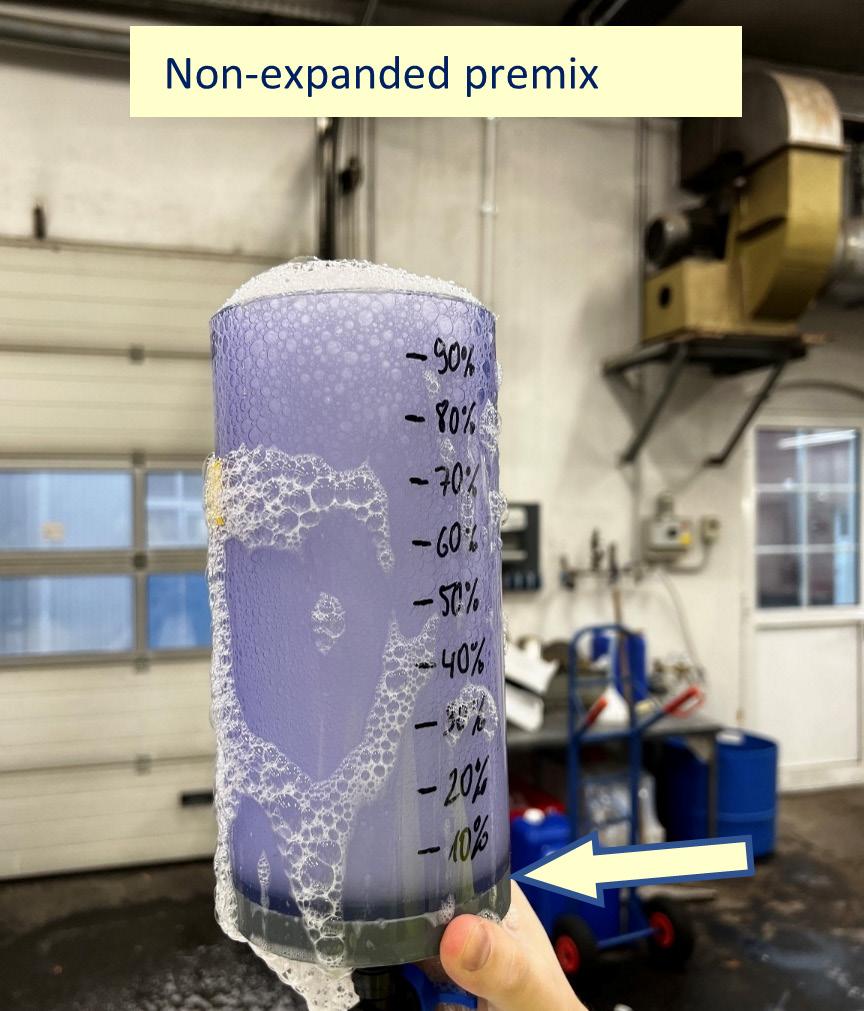
PREPARING THE SWITCH
The endpoint of all the information collection, checking and testing should be a foam concentrate (or more than one) providing confidence that it will work with the possible risk scenarios within the normal and acceptable range of remaining uncertainty.
Cleaning
After the (comparatively simple) step of taking out the old foam agent and rinsing the affected equipment it needs to be technically cleaned:
Residuals of fluorine containing foam agents can render fluorine free refills noncompliant to recent legislation
Even levels of fluororganic compounds below legal limits may trigger remediation efforts and other liabilities upon release into environment
Many cleaning methods are out in the market place and it comes as no surprise that service providers claim each one of them to be efficient and sufficient. However with respect to fluoroorganic compounds and a potential contamination of the environment and resulting liabilities thereof dilution clearly is not the solution to pollution!
In turn since the resolution of analytical methods improves the lower the degree of contamination is, it is well recommended to make sure any parts of a truck, storage system or fixed system having had contact to the fluorinated foam agent are cleaned to the best possible extend.
This said experience teaches that no cleaning method will provide 100% removal of any trace of fluorine compounds. The overall rate of success also depends very much on the surface. For example, the
maximum achievable degree of cleaning depends very much on the surface quality of the contaminated surfaces: rusty pipes (as is common in sprinkler systems) are much more difficult to clean than the inner walls of stainless-steel tanks, regardless of how good the method used is in itself.
It has been proven to be a good idea to early on involve insurers and supervising local authorities in the cleaning strategy (what is the starting contamination level, what the cleaning applied, what the residual contamination and finally how is all of that controlled and documented) to get their buy-in and avoid duplication of efforts or unrealistic requirements.
It has been proven to be a good idea to early on involve insurers and supervising local authorities in the cleaning strategy (what is the starting contamination level, what the cleaning applied, what the residual contamination and finally how is all of that controlled and documented) to get their buy-in and avoid duplication of efforts or unrealistic requirements.
Analytics
Like any other goods or services also analytical services are graded in different levels of quality.
However, since liability and compensation claims arising from environmental contamination with fluorine compounds can very quickly reach enormous amounts, caution is required when selecting analytical service providers. At the very least, the service provider in question should have experience with the analysis of PFAS, especially in extinguishing foam concentrates or extinguishing water, and be accredited for this. Experience in the analysis of groundwater or drinking water is not always sufficient.
COMPLETING THE SWITCH
Since PFAS are capable of adhering well to surfaces, it is generally not sufficient to test their success analytically only immediately after the cleaning operation, but at least once more after a few days and preferably a third time after a few weeks.
Every step and result should be documented carefully to be able and respond to any case of later doubts and potential claims.
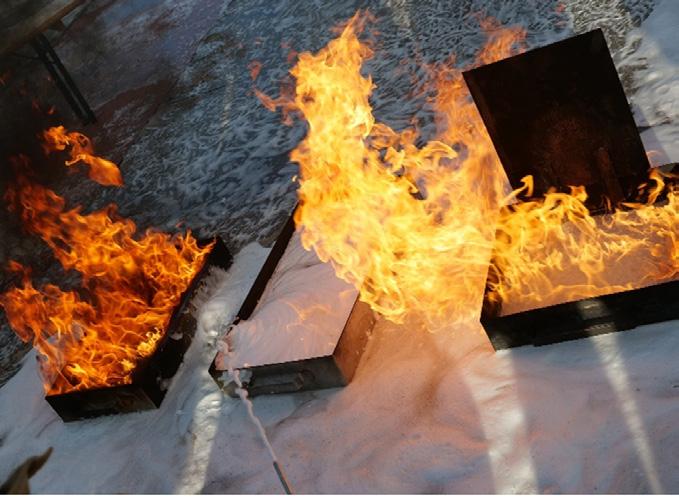
Figure 5: influence of application technique: application of the same foam quality for the same application time on three different fuels the used foam agent is suitable for
Once the cleaning is proven to be successful to the planned and agreed (with insurer and local authorities) extent it is time to fill in the new fluorine free foam concentrate.
Yet there is one more thing to consider before popping the Champaign:
Many if not most firefighters still have an “AFFF-mindset”, i.e. they are trained to use foam in a way that is tailored to the special properties of AFFF. This can be counterproductive when using F3.
TRAINING
Due to the specifics of F3 and in particular the deviations to the properties of AFFF it is recommended to empower firefighters to optimize the efficiency of this new class of foam agents by training them:
Lectures
Regular classroom trainings on running risk analysis at various scales
Deep understanding of firefighting agents, their properties, uses and limitations Application techniques, consequences, logistics, etc.
Interactions of foam with fuel types and other agents (firefighting agents, other chemicals, etc.)
Updates on recent developments (tactics, agents, legislation, …)
Practical trainings
How to make foam (foam-hardwareinteraction)
Application techniques (footprint, tangential, gentle, forceful, …) and their impact on foam quality, reach of application etc.
Securing techniques
Testing of scenarios resulting from risk analysis and mitigation strategy
Properties of foam and foam agents and their impact on performance
“Reading” foam (recognize changes in foam blanket quality to respond proactively)
Co-application of different agents (dry chemical powders and foam)
EXECUTIVE SUMMARY
F3 foam agents are very different compared to AFFF in many means (fuel interaction, type and technique of application, required foam quality, required minimum expansion, ...) which makes a transition from AFFF to F3 much more complex compared to the transition in the past from C8-AFFF to C6AFFF.
The possibility of catastrophic failure is therefore quite real if the specifics of using fluorine-free foam extinguishing agents are not taken into account at all or not sufficiently. This article attempts to draw attention to the special features of F3 and provide a rough guide to what needs to be considered for a successful transition from AFFF to F3. However, the individuality of fire protection concepts and their technical implementation precludes a comprehensive presentation.

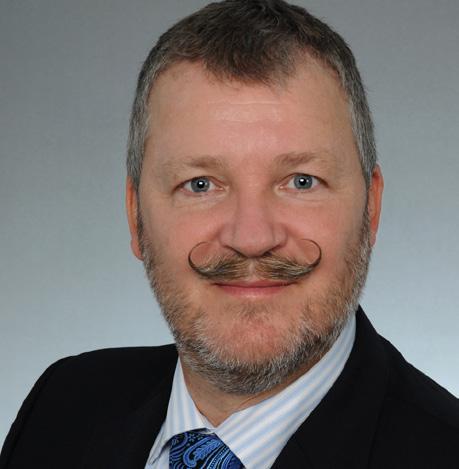

Converting Fixed Foam Systems to Fluorine Free Foam Concentrate
by Angus FireAs a global leader in the fire suppression business, a week does not go by when we do not receive calls from major corporations asking if their legacy fixed foam systems are compatible with our next generation Fluorine Free Foam (F3) concentrates.
The simple answer is yes, HOWEVER, the first thing to understand is F3 concentrates are rarely a drop in replacement. A complete fixed foam system assessment (hardware, operating parameters and fuel of concern) must take place prior to starting any conversion. Based on the findings, and with some potential modifications, a legacy fixed foam system can be converted to a F3 system. Our company’s global reach has enabled successful conversions of hundreds of fixed foam systems around the world for leading chemical, oil and gas, aviation, pharmaceutical and consumer goods companies.
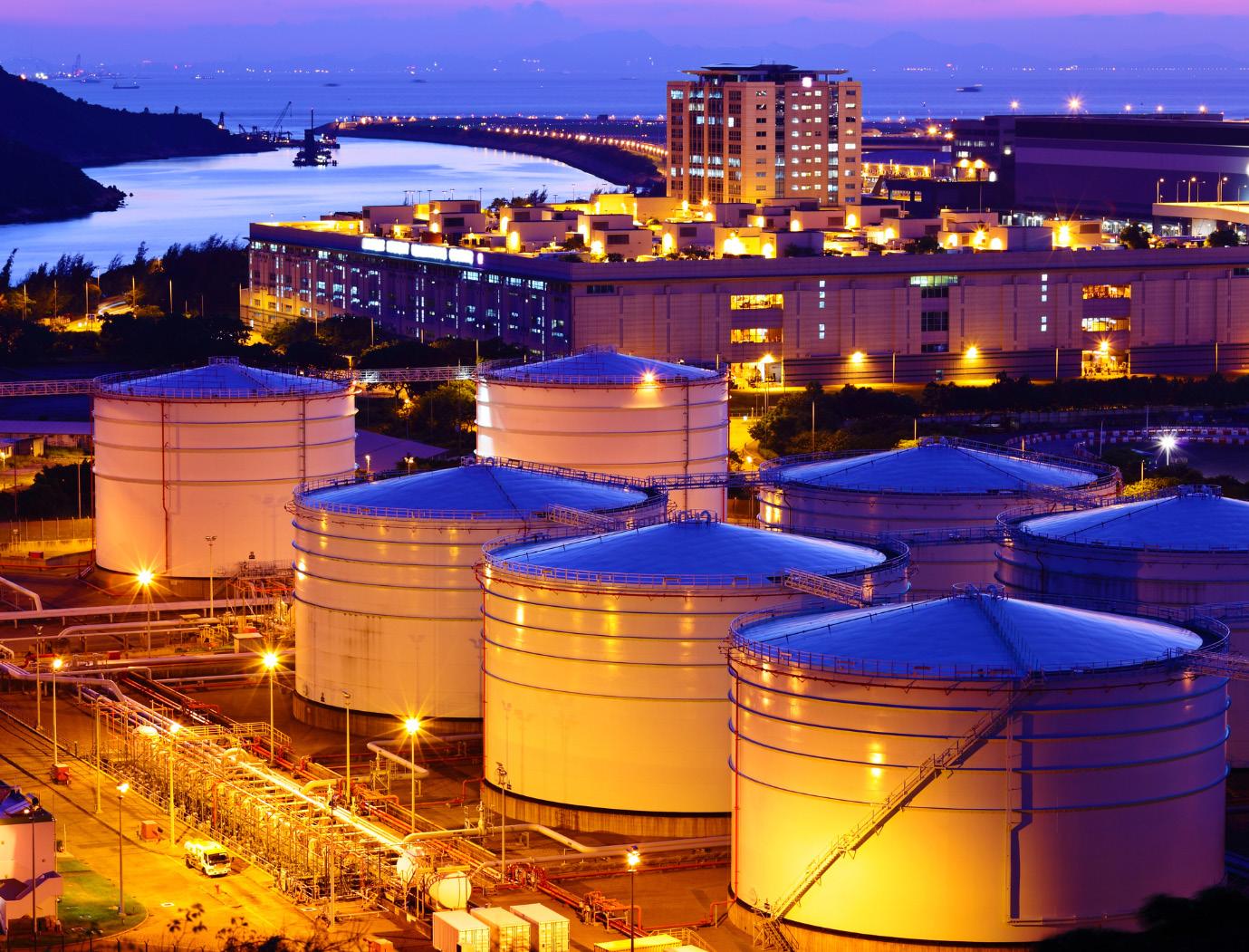
A few decisions are required before you begin
First, you must select the F3 concentrate. The foam system must be calibrated around the F3 concentrate performance capabilities. Not all F3 concentrates are created equal, look for respected third party certifications such as UL, ICAO, FM, EN, LASTfire to support any foam supplier’s claims.
More specifically, What fuel of concern is the foam concentrate listed with?
Will the foam concentrate perform well on both hydrocarbon and polar solvent fires?
Does the foam concentrate work effectively with fresh, brackish and seawater?
Which specific polar solvents has the foam concentrate been tested or listed with?
Which discharge devices have been tested?
Lastly, what raw materials are used in the foam formulation since they could become an environmental concern?
We suggest you select a foam with the GreenScreen environmental certification. GreenScreen certification helps protect the end customer from selecting F3 concentrates that may contain chemicals of concern.
Second, your company must determine “how clean is clean” when converting an existing system to F3. There are a number of specialist remediation companies
offering this service in the marketplace.
The conversion process
Every fixed foam system will require a complete system assessment. This should already be standard practice anytime a foam concentrate type is changed in a fixed system.
The legacy system in question may have been designed years ago, utilising a different foam concentrate type, and will likely require some adjustments to its operating parameters as a result. This usually requires a qualified technician to review each individual foam system, to confirm the current foam concentrate type, foam hardware and system operating parameters as well as the fuel(s) being stored.
The key to a successful conversion relies on understanding how to balance the various components of the existing fixed foam system. It is a balancing act between the hazard type and size, foam type, its percentage concentration, proportioner capabilities, discharge device, type II or III (direct) application, flow rate, operating pressure, discharge rate and duration.
For example, changing the foam system pressure (to achieve the desired foam quality) would require increasing the discharge rate, which would decrease the discharge time and require a larger foam concentrate storage tank. These required system changes should all be finalised and confirmed prior to any work on site starting.
Angus Fire has developed and executed a proven, detailed conversion process to ensure timely and successful conversions. Once the assessment is complete, the foam supplier and end user should present the conversion plan to the local Authority Having Jurisdiction (AHJ).
The AHJ approval and sign-off are
important points and help avoid any concerns after the completion of any F3 conversion process.
The end-user will need to provide documentation to the AHJ, supporting the efficacy of the converted fixed foam system and evidencing that it will continue to function properly with the new F3 concentrate.
The foam concentrate supplier should be capable of providing the required documentation for the local AHJ to obtain approval and gain acceptance of the fixed foam fire suppression system.
The key is to use a qualified foam supplier capable and experienced in offering a full service to aid in a successful conversion.
Angus Fire is a foam supplier with resources to provide qualified technicians for onsite or remote foam system assessment, engineering / design support, fire testing facilities and experienced commissioning support, not to mention qualified F3 concentrates.
With some pre-planning, and using a proven step-by-step process, our successful conversion can be accomplished in a relatively short amount of time with limited disruption to daily operations.

For nore information, contact ANGUS FIRE
+44 (0)1524 264000
f3transition@angusuk.co.uk www.angusfire.co.uk
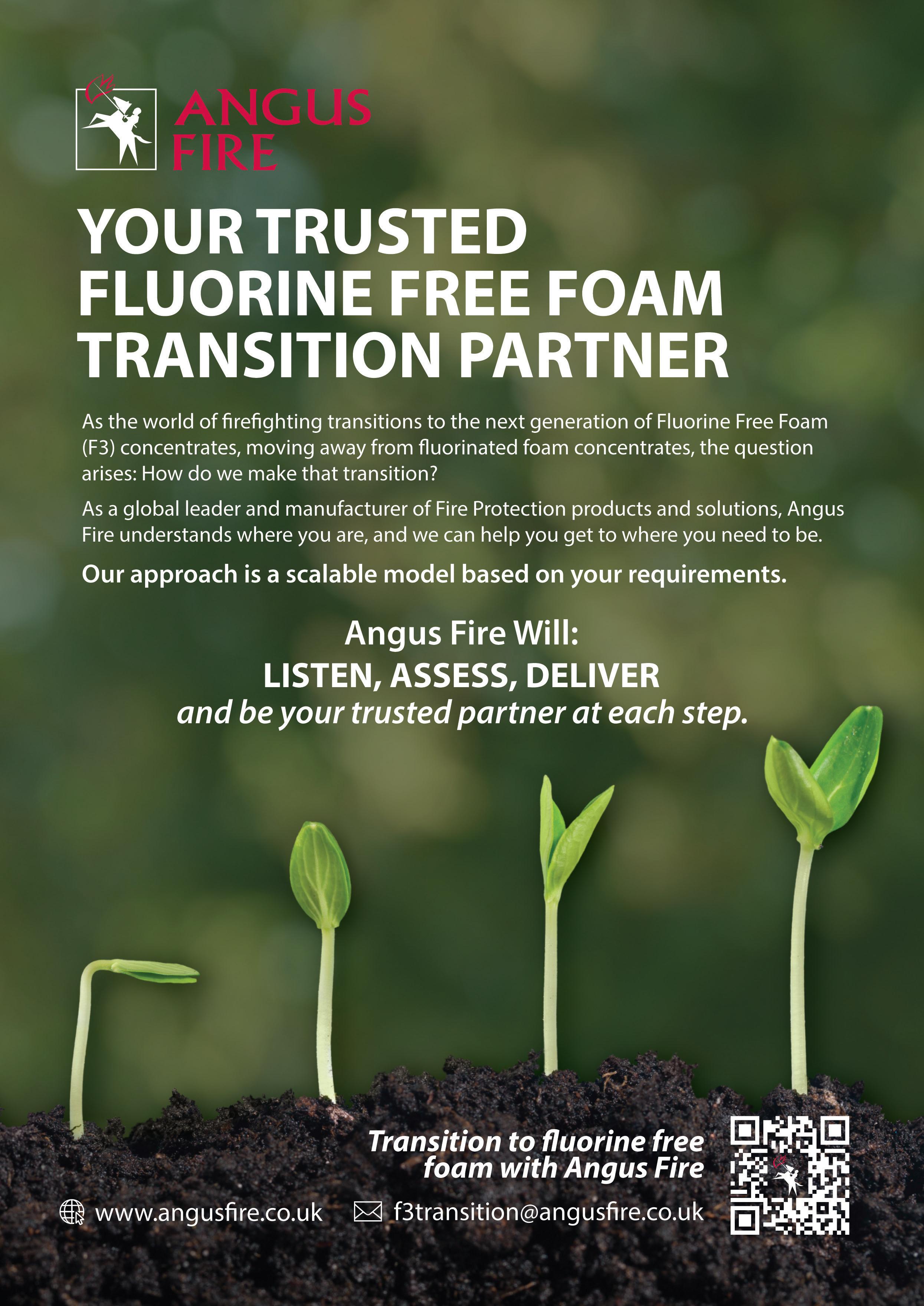
Water Vs Chemical Decontamination

ACHIEVING AN EFFECTIVE TRANSITION
by Jack Oshaughnessy and Matt CalveleyMany end users of firefighting foam are transitioning from C8 or C6 foam to a Fluorine-Free (F3) foam replacement. However, there are divided views regarding the requirement to chemically decontaminate fire suppression systems opposed to water rinsing or not rinsing at all prior to transition.
This article explains why chemical decontamination is essential when transitioning from legacy foams to fluorinefree alternatives (F3) and outlines the implications of adopting water rinsing as a decontamination strategy.
Background to PFAS
C8 and C6 Class B firefighting foams, including aqueous film forming foam (AFFF) and fluoroprotein foams (FFFP and FP) contain a group of synthetic fluorosurfactant chemicals known as Perand Polyfluorinated Substances (PFAS), which comprise thousands of individual chemical compounds. Many have been shown to be persistent, bio-accumulative, toxic and linked to multiple diseases in humans and fauna. PFAS have been used in firefighting foams since 1962 [1]. Globally they have been widely distributed within the environment and detected at high concentrations in groundwater, surface water and soils surrounding fire training areas.
This has given rise to more stringent regulations surrounding their manufacture, use and transport.
Regulations
There are numerous regional, national, and global regulations under REACH and the Stockholm Agreement restricting the use, manufacturing, and sales of PFAS foam. These require companies to transition away from foams that exceed thresholds for Perfluorooctanoic acid (PFOA; <25ppb for PFOA and <1,000 ppb PFOA derivatives), Perfluorooctane sulfonic acid (PFOS;< 0.001% for PFOS + derivatives), perfluorohexane sulfonic acid (PFHxS; <25ppb for PFHXs and <1,000 ppb PFHxS +
derivatives) and C9-C14 perfluorocarboxylic acids (PFCA, 25ppb for PFCA’s and <260 ppb for PFCA + derivatives)2,3
The restrictions of additional PFAS compounds in foams have also been proposed within the UK and EU and anticipated to be implemented in the coming years placing further pressures on foam manufacturers, foam owners, transport, and disposal operators.
Why decontaminate?
Current and proposed regulations specify at what concentrations PFAS (as a group or a singular compound) can be present within foam concentrate and the time period in which the transition to F3 foams needs to be completed.
One known concern, associated with
fluorosurfactants within C8 and C6 firefighting foams, is their ability to bind and assemble, forming crystalline bilayers on surfaces they are in contact with. The hydrophobic (water repelling) characteristics of certain PFAS compounds reduce waters (even hot water) ability to effectively remove PFAS bound to the interior surface of fire suppression systems.
Therefore, post foam transition, significant concentrations of the bound PFAS can slowly desorb back into the replacement F3 foam. Double or triple rinsing with water has been proven to be ineffective at adequately removing bound PFAS from fire suppression systems. Verification, following water rinsing, can indicate a false negative as majority of the PFAS will remain bound to the interior surface of the fire suppression system rather than suspended within the rinsate water.


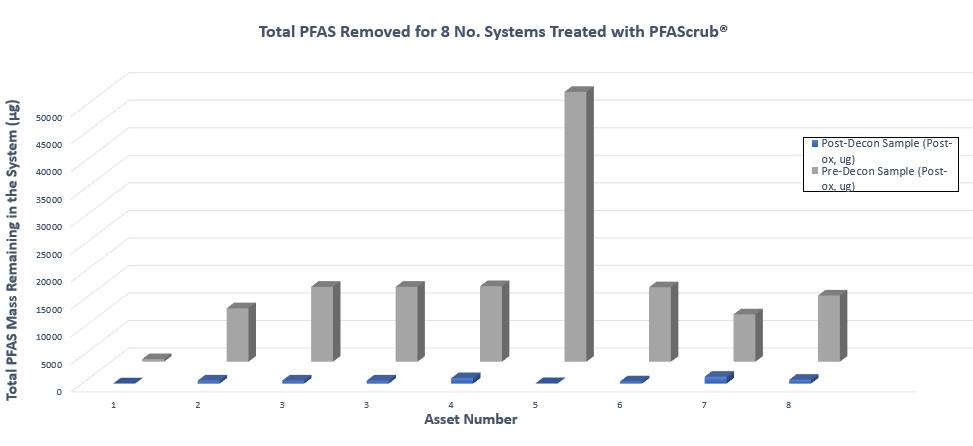
Chemical decontamination, using a known, biodegradable reagent such as PFAScrub®, is proven to effectively remove PFAS layers adhered to the interior suppression systems and reduce future companies’ liabilities. Tetra Tech, and our decontamination partner ProDecon®, have undertaken a study to assess the effectiveness of both water and chemical reagents during a decontamination process and the results are provided in Table 1.
Table 1 indicates that there is a further 99.8% reduction in PFAS using a chemical rinse (compared to water only resulting in the proposed threshold criteria being met.
Similar trends have been observed on multiple foam system which supports
the inadequacy of water rinsate as a decontamination process when transitioning. Figure 1 below compares post water flush swab sample concentrations (blue) to post chemical decontamination (grey) of decontamination undertaken recently on eight foam storage assets.
Proving a successful decontamination
The chemical decontamination process should draw upon multiple lines of evidence to support a successful, effective decontamination process. This builds confidence that each asset (or asset component) has been decontaminated to a level that meets current and proposed regulatory thresholds. Tetra Tech and
ProDecon® provide three lines of evidence following decontamination including:
1. The percentage reduction of PFAS absorbed to the system surface following decontamination- Determined by swabbing asset surface and submitted for TOP Assay Analysis
2. Predicted concentrations of new F3 foam if bound PFAS desorbs back into the new foam; - Determined by swabbing asset surface and submitted for TOP Assay Analysis
3. The uptake of Absorbable Organic Fluorine (AOF) or Total Organic Fluorine (TOF) into chemical solution during the decontamination process (demonstrating
mass removal). - Determined by swabbing asset surface and submitted for TOP Assay Analysis
AOF and TOF are analytical methods used to analyse a wide range of PFAS in water. Within the decontamination process, it is used as an indicator for the mass of PFAS removed from the surface of the systems and suspended into the circulated solution during the decontamination processes.
Considering proposed regulations encompassing the complete ban of PFAS within firefighting foam, analytical methods will likely be adjusted to account for the entire PFAS family (OECD,2021)[4] which may include TOF analysis on the final rinsate or swab. Tetra Tech is currently working with labs to assess the effectiveness of TOF swab analysis.
Tetra Tech and ProDecon® have successfully decontaminated over 200 foam storing assets and systems across the UK and EU and are at the forefront of decontamination technology. Over this time, we have gained a strong understanding of the appropriate reagent delivery method, optimum contact time and temperature of the reagent, reagent/water ratio, reagent saturation limits (enabling reduction of waste volumes) and verification methods to achieve current and proposed regulatory limits.
Regret Spend Avoidance
Companies holding PFAS foams (C6 or C8) need to be aware of current and proposed upcoming regulations. Companies are required to transition to a fluorine-free foam within the industry specified derogation timeframes to avoid business liability, reputation damage, litigation and fines
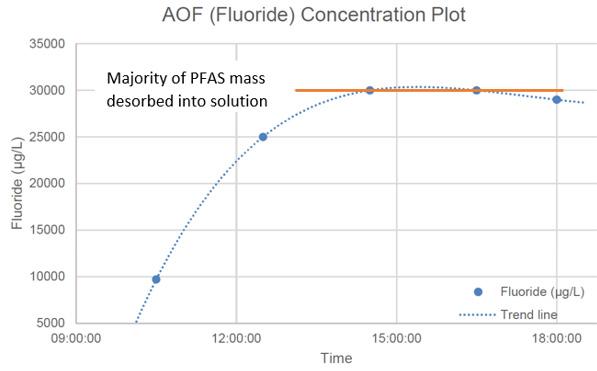
in the event of foam release. Our studies demonstrate that using water alone does not sufficiently rinse PFAS from existing systems risking recontamination of future foams.
Conclusion
Our studies demonstrate that chemical decontamination is required to achieve an
effective transition that addresses PFAS layers bound to the surface of the foam system. The only consideration remaining should be which chemical decontamination method is most suitable for the system, considering effectiveness of the clean, costs, methodology timeframe, downtime of system assets, verification methods and minimising waste volumes.

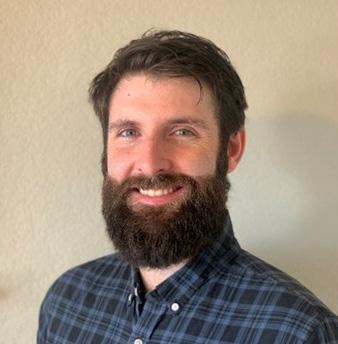


Can SFFF Be a Full "Dropin" replacement for AFFF?
by Phil Bayliss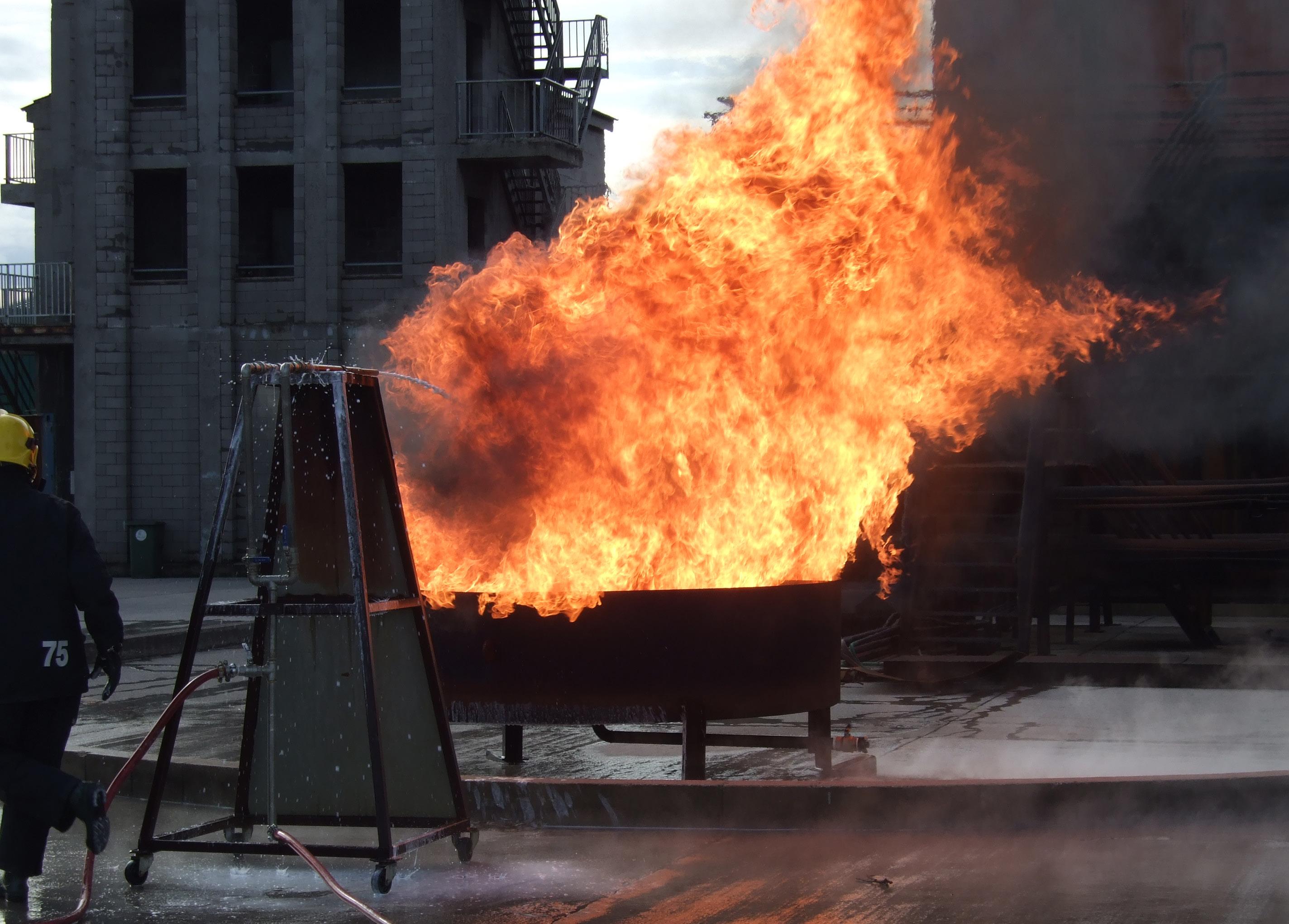
At this time in 2024 it is more than likely that most participants in the Foam Industry will have had some form of experience of the proposed inevitable changeover from C6 Foam Agents to Synthetic Fluorine Free Foam (SFFF). A massive amount of Foam Manufacturers R&D Budgets has been allocated to achieving the best chemical compounds to replace AFFF’s or FP foams. The foam chemists’ remit will include similar test targets for all foams that are used on Class B Flammables, that can be described under the heading of ‘Fire Rating’ within standards such as EN 1568, NFPA 11 or approvals to UL/FM. Pan fire tests will be constructed to measure fire control time, extinguishment, burn back resistance
on chemicals such as Heptane or Methanol in a strict protocol. The Chemists will apply controlled foam sprays using small ISO Standard nozzles and methods in order to achieve consistency in testing results that are acceptable across the global foam community. A 3% mix of foam agent with 97% water will be premixed in a pressure container to feed the nozzles that spray onto relatively small fire pans. They will then undertake many versions of: Test-repeatevidence-performance-test -repeat etc until a final result is achieved and a new foam goes to market. It should be recognised that most foam used on fires is not a premixed solution, foam is proportioned and applied on demand in whatever circumstances prevail.
Internationally recognised independent Fire Authorities such as LASTFIRE will verify and apply a level of approval to validate the individual foam agent to an agreed set of parameters. This scrutiny is vital and a necessary part of such an important process of change. The Fire Protection world is no different than many other industries that use chemicals. We are all facing times of change and more detailed regulation of use and release of certain chemicals to the environment, there is not an industry in the world that is not affected. Therefore, when in the arena of fire-fighting foam concentrates we need to recognise the global shift towards the use of C6 chemistry from the old C8 chemistry
and the further transition toward SFFF. At the same time and place we should also consider the other parts of the chain that the foam sits between. Foam concentrate will be stored, pumped, proportioned, mixed into solution, then discharged through a device on to a fire, either automatically or by human application.
The high cost of changing from one foam concentrate to another means that owners will have to decide if they utilise their existing infrastructure or add further cost by replacing systems, tanks, pumps, piping etc to facilitate the change of one component. At such times it would be expected that the total system performance should be in accordance with the original design, or latest assessment of the current design. Consultation with Foam Manufacturers is highly recommended at this juncture. Important performance related topics such as Foam Viscosity, foam flow, application rate, proportioning accuracy, storage, system maintenance should be considered alongside routing plans for system testing, or discharge tests and annual foam sample testing. The area of foam system ownership, should take into account any change of the main foam component when assessing the continued future performance of a whole foam system.
Many petrochemical corporations publish their own foam standards, others follow Insurers guidance on maintenance and verification of fixed foam systems or the upkeep of mobile/portable fire-fighting systems. Organisations such as FM Global have comprehensive standards that often go beyond existing international standards. One can assume that their experience of foam system testing would reveal any shortfall in the acceptable performance of the foam and its application short of an actual large-scale fire test. It is vitally important to continue to scrutinise and evaluate foam systems as a whole during the sometimes long-life of the system and the foam concentrate.
Fluorine-free foams have been present in our industry for many years, however, when faced with the challenge of suppressing a Chemical which is both Flammable and water miscible all foams require and extra layer of chemicals within its structure to resist both the effects of fire and the destruction of the bubble structure of the expanded foam solution. Alcohols, Polar

Solvents are foam destructive; SFFF foams face the same challenge for the foam chemist. It can be seen to the naked eye that “AR” type foams are inherently thick, resistant to move, affected by ambient temperature, with some types more Gel than liquid. These foams present further challenges to affect their use and relation to the components or functionality of an automatic system or human application. Viscous foams are often moved using rotary gear pumps which can function where reciprocating or centrifugal pumps are unable to overcome the reluctance to flow. The effect of viscosity on pipe diameters and orifice dimensions should be considered when changing foam types.
When a ‘new’ SFFF is introduced to an ’old’ foam system extra care and vigilance is wise. Will the new foam perform in an existing protocol? Will it proportion accurately? Will it store and move in the same way? A dropin replacement can work on face value or on paper, however the continuity between the foam chemist, the Field Service Engineer or the Fire-Fighter is not always apparent and often distances apart. The old maxims
often remind us to keep things simple, have a little extra tucked away and err on the failsafe side, this philosophy is no bad thing when working with foam systems whether they be fixed or portable, automatic or manual. SFFF will inevitably replace AFFF but whether it is a direct drop-in should remain in question.

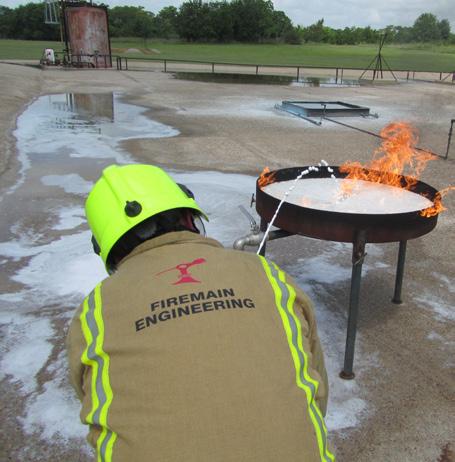

EXPERIENCE COUNTS
Your specialist, trusted provider of fire fighting foam solutions, with over 30 years expertise. Firemain Engineering provides a range of Fluorine Free Foams, together with the know-how, kit and technology to deploy it.
• Fixed and mobile foam proportioning and discharge equipment
• Continued supply of all C6 foam types
• Fluorine-free concentrates
• C8 foam sample testing and foam destruction facility
• Foam System maintenance with annual sample fire testing reports
• On site assessments for compliance to latest legislation
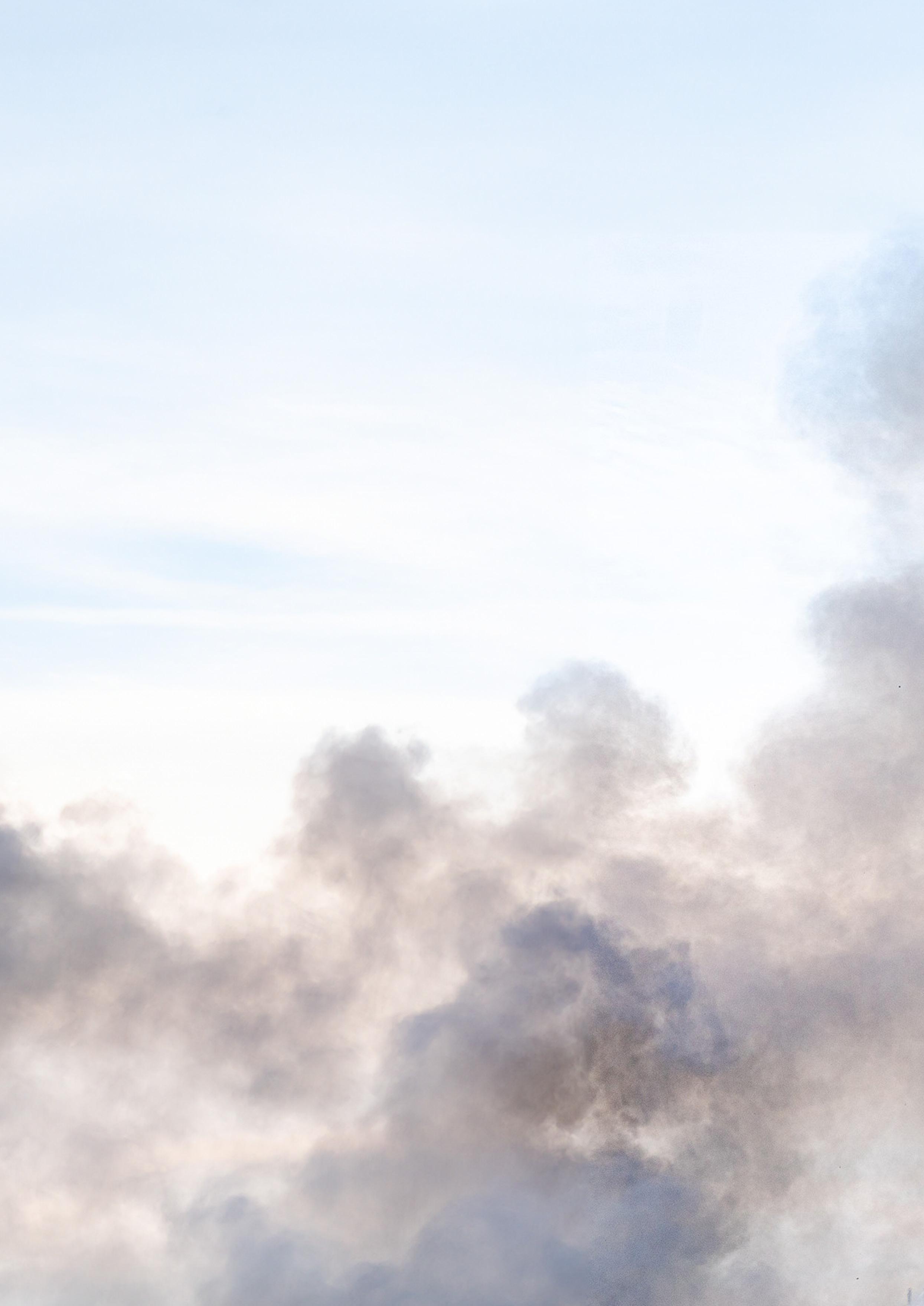
JOIFF Accredited Training
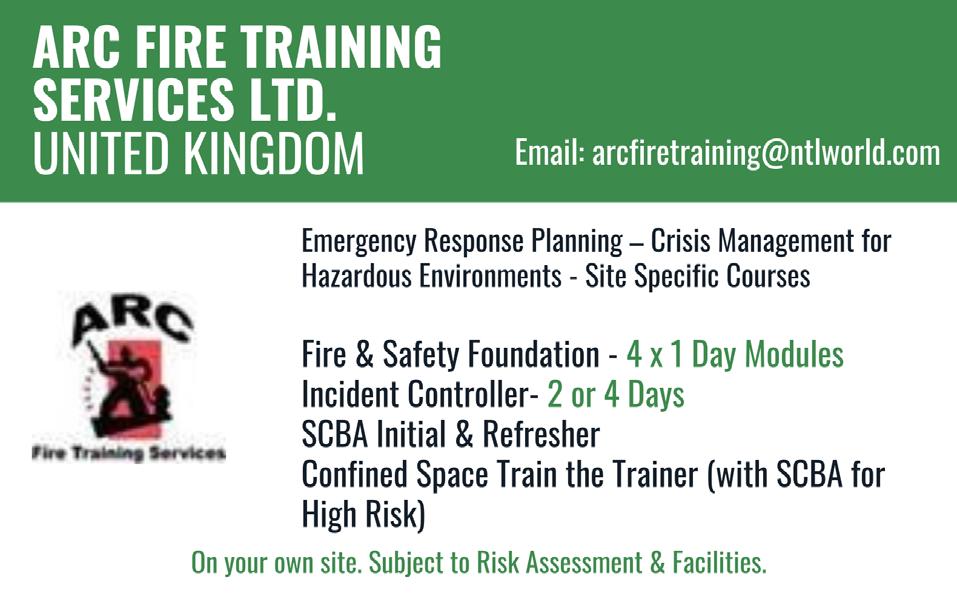
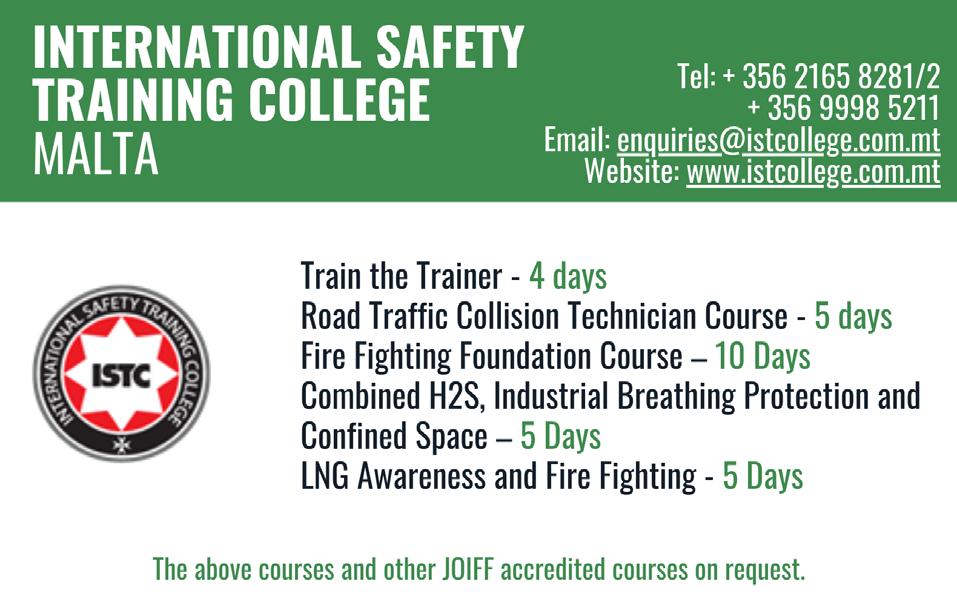







2024

